#hans moebus
Explore tagged Tumblr posts
Text
LUCY & GONE WITH THE WIND
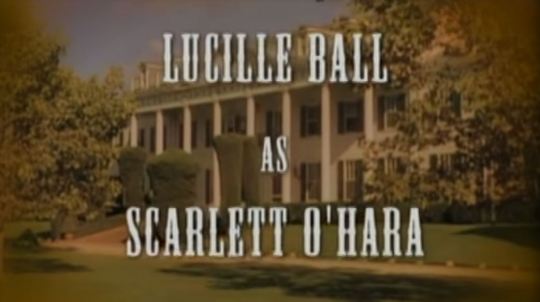
In one of the biggest publicity stunts in Hollywood history, over 1,400 actresses were considered for the role of Scarlett O’Hara in MGM's Gone With The Wind. Producer David O. Selznick had the rights to the book, but did not have the money to make it. To keep interest alive in the project during pre-production, he auditioned nearly every starlet in Hollywood: Paulette Goddard (the favorite), Bette Davis, Joan Crawford, Jean Arthur, Lana Turner, Barbara Stanwyck, Claudette Colbert, Susan Hayward, Katharine Hepburn, Tallulah Bankhead and Lucille Ball, who read for the role but never made a screen test.
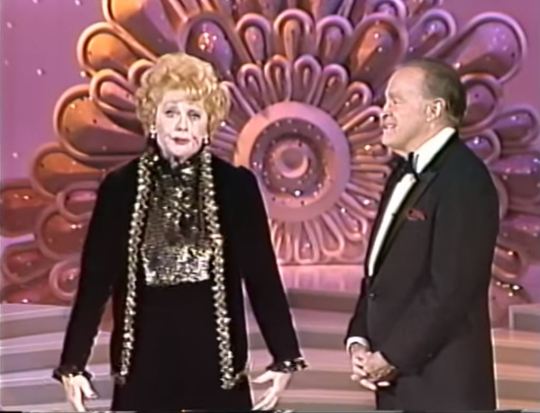
On “Bob Hope's Unrehearsed Antics of The Stars” (September 28, 1984) Ball recounted - with a fair amount of embellishment for comedic effect - her audition.
I had to audition for Mr. David O. Selznick and it was for Scarlett O'Hara in ‘Gone With the Wind’. Everybody knew it was just a huge publicity gimmick. But I was just a young starlet when you're a under contract to a studio you do what you're told to do.
After working six dreadful weeks with a dialogue coach who had a southern accent that just dripped molasses, the big day finally arrived. I knew it was ridiculous, but I had to go. I climbed into my old rattletrap car and as I reached Culver City I got caught in the biggest cloudburst I ever saw. The streets were flooded. My car stalled. I had to get out and wade six blocks to the studio. I got to the Selznick office looking like a drowned rat. Marcella, Selznick's girl Friday, didn't even recognize me. My hair was down over my face and the henna was running and so was my mascara. I was soaked clear through. Marcella made me take off all my clothes, gave me a big towel and a huge brown sweater and put me on the floor in front of a roaring fireplace in Mr. Selznick's private office. And she gave me a big brandy snifter with brandy in it.
A half hour and four slugs of brandy later I was still a mess and still on my knees at the fireplace. Suddenly Mr. Selznick came in and said “Well, what have we here?” I said, “Well, I ain't Scarlett O'Hara. I'm Lucille Ball and I wanna go home.” He said “Now, now. We have to do the scenes.” I said “I can't. I can't stand up.” I couldn't stand up because what I was wearing didn't cover me - and the four shots of brandy didn't help either. But he said “Alright then, do it from there.” I had to audition on my knees.
Now the first scene was Scarlett as a sixteen year-old. When I tried to bat my eyes my eyelashes stuck together and they wouldn't bat. Scarlett said something like “Well, I do declare! I do declare! You boys are so handsome in your gray uniforms. I swear, I'm just gonna miss you all so very, very much.” I'm still on my knees. Then I had a scene with Rhett Butler. I said “Rhett Butler, you're nothing but a no-good low-down Yankee spy and you can go back to where you come from and you can stay there!”
Selznick said “You were very interesting. Very interesting.” I said “I was not and you know it.” And then I just crawled out of the office on my knees holding onto the sweater trying to keep all the vital parts covered.
Although some of Ball's recounting sounds plausible, she remarks that her henna (red hair dye) was running down her face. Ball didn't dye her hair red for the first time until asked to do so by MGM for DuBarry Was a Lady in 1943. She was a natural brunette who was a blonde in some of her early work in order to stand out from the crowd.
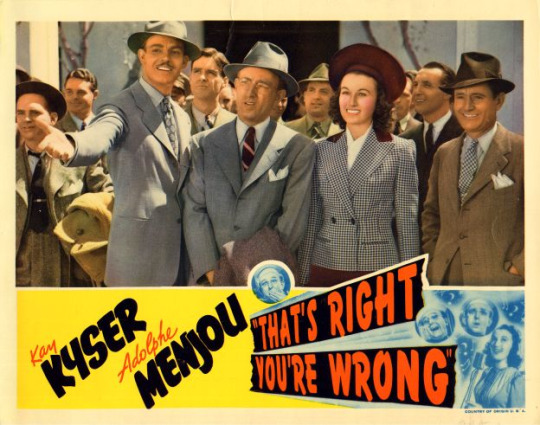
During the time period that Gone With The Wind shot (January through July 1939), Lucille Ball made five films for RKO, with the fifth (That's Right – You're Wrong) released just three weeks before Gone With The Wind.
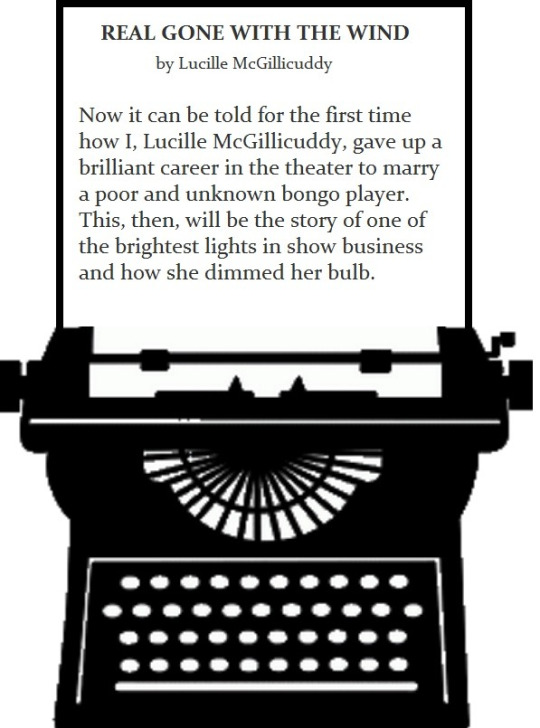
But this was not the last time Lucy would encounter Scarlett and Gone With the Wind. In the 1954 “I Love Lucy” episode “Lucy Writes a Novel” (ILL S3;E24) Lucy Ricardo is inspired to write a roman a clef about her life called “Real Gone with the Wind.” Fred replies “Yeah. Real gone!”
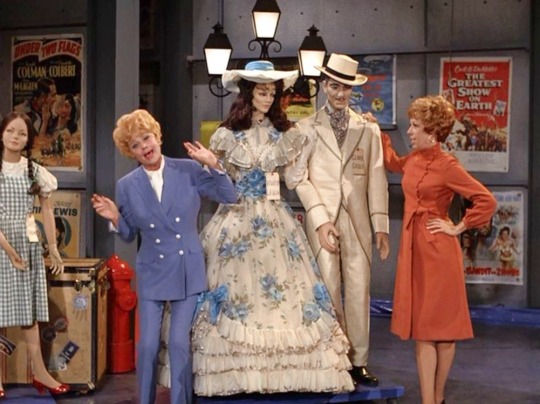
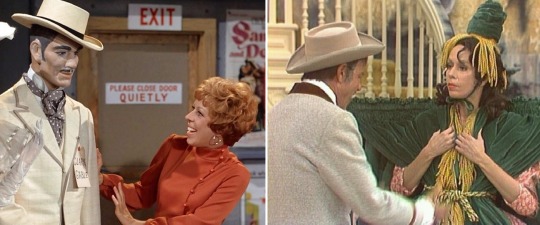
In 1971's “Lucy and Carol Burnett: The Hollywood Unemployment Follies” (HL S3;E22) Lucy and Carol encounter mannequins of Clark Gable and Vivian Leigh dressed in costumes from Gone With The Wind. Carol, using a high pitched Southern accent, imitates Scarlet O'Hara. After the network premiere of the movie in 1976, Carol Burnett produced one her most famous sketches ever, playing Scarlett (re-named Starlett) in the parody “It Went With The Wind” on “The Carol Burnett Show.”
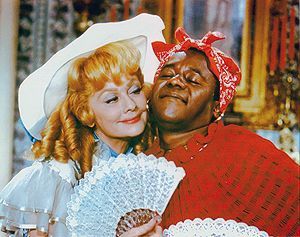
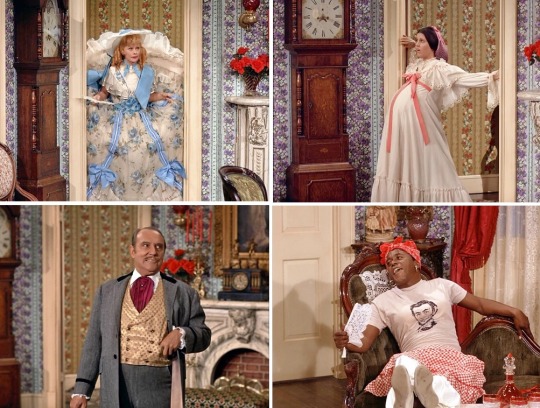
In September 1971, in “Lucy and Flip Go Legit” (HL S4;E1), Lucy Carter convinces Flip Wilson to play Prissy in her daughter Kim's community theatre version of Gone With The Wind. Kim (Lucie Arnaz) plays Melanie, Uncle Harry (Gale Gordon) is Rhett, and Lucy finally gets to play Scarlett. Although Flip Wilson wearing an Abe Lincoln t-shirt as Prissy is very funny, the sketch does not hold a candle to Burnett's 1976 endeavor.
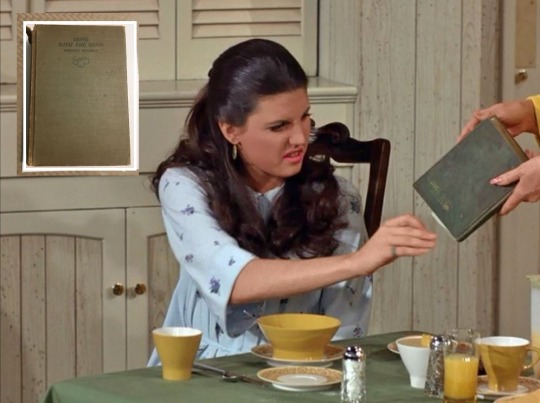
In “Lucy's Lucky Day” (HL S4;E15) Lucy Carter finds an overdue library book - Gone With The Wind – which she says took out when it was first published. The novel by Margaret Mitchell dates from 1936, which means that in 1971 Lucy has had the book out for 35 years! Imagine the fines!
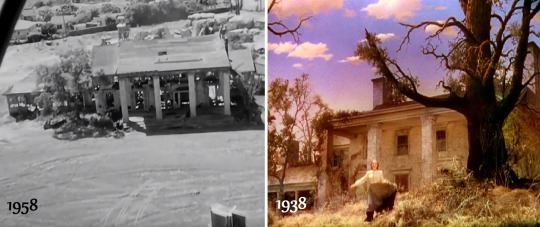
In the 1958 promo film “Lucy Buys Westinghouse” Desi takes a Westinghouse representative on a helicopter tour of Desilu Culver (formerly RKO), a back lot located in Culver City, also known as Forty Acres. This is where MGM made Gone With The Wind. They pass over a destroyed Tara, twenty years after the film was made. Ironically, it is now owned by Lucille Ball!
Although Lucille Ball did not get cast, actors who did get roles in the film and later worked for Lucille Ball included:
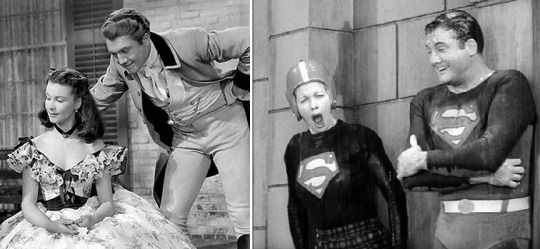
George Reeves, Stuart Tarleton in GWTW / Superman in “Lucy and Superman” (ILL) [Reeves is incorrectly credited as Brent Tarleton in the film and only credited as ‘Superman’ on “I Love Lucy.”]
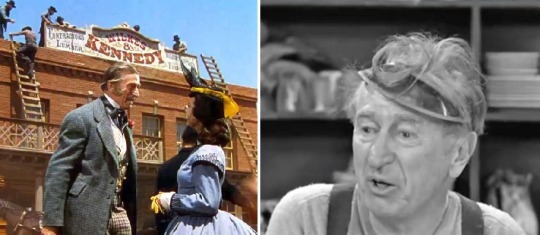
Olin Howland, Carpetbagger Businessman in GWTW / Mr. Skinner in “First Stop” (ILL)

Irving Bacon, Corporal in GWTW / Will Potter in “Ethel's Home Town” (ILL) and Mr. Willoughby in “The Marriage License” (ILL)

Alberto Morin, Rene Picard in GWTW / Waiter Robert DuBois in “The French Revue” (ILL) and Carlos in “Cuban Pals” (ILL)
Shep Houghton, Southern Dandy in GWTW / Courtroom Spectator in “Lucy and the Raffle” (HL) [That same year, Houghton was also a Winkie Guard in The Wizard of Oz.]
Ralph Brooks, Gentleman at 12 Oaks Barbecue in GWTW / Casino Patron in “Lucy Goes to Vegas” (TLS)
Hans Moebus, Party Guest in GWTW / Man on Dock in “Bon Voyage” (ILL), Riverboat Patron in “Lucy and Arthur Godfrey” (TLS) and Spectator in “Lucy at Marineland” (TLS) [Lucy wore the same dress in “Lucy and Arthur Godfrey” as she did as Scarlett O’Hara in “Lucy and Flip Go Legit.”]
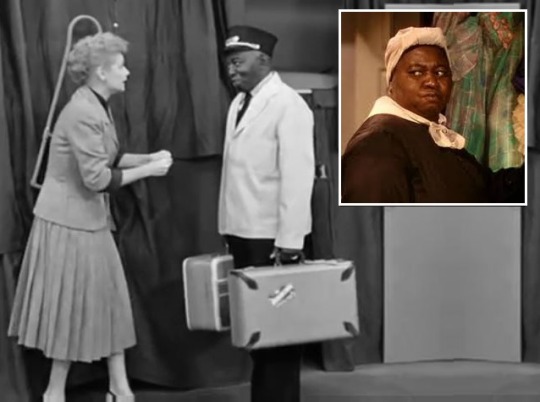
Hattie McDaniel (Mammy in GWTW, inset) was the first black actress ever to win an Oscar, but she wasn’t the only McDaniel to have a ‘first ever’ recognition in show business. Her brother Sam McDaniel played the Porter in “The Great Train Robbery” (ILL), and was the first and only black actor to have dialogue on “I Love Lucy.”
#Lucille Ball#Gone With The Wind#Scarlett O'Hara#Lucy#David O. Selznick#MGM#RKO#I Love Lucy#The Lucy Show#Sam McDaniel#Bob Hope#Hans Moebus#Ralph Brooks#Shep Houghton#Alberto Morin#Irving Bacon#Olin Howland#George Reeves#Tara#Culver City#Desilu#Hattie McDaniel#Lucie Arnaz#Here's Lucy#Margaret Mitchell#Flip Wilson#Gale Gordon#Carol Burnett#That's Right You're Wrong#The Carol Burnett Show
11 notes
·
View notes
Text
Psycho (1960) - Mohl tu tento film chybět? Asi každému je odpověď jasná. Ne, „Psycho“ prostě v nejlepších hororových žebříčcích chybět nemůže, protože se jedná o jeden z vrcholů filmové tvorby vůbec.
Hitchcock byl génius a dokázal to svým černobílým snímkem v době, kdy se barva šířila světem jako morová rána. Neodklonil se od „bezbarvého klišé“ a dobře udělal. I když je filmu, snad jako jedno z mála, vytýkána jeho nereálnost, která je odůvodňována právě černobílým provedením, Psycho bez barev funguje a je jen dobře, že se Hitchcock takto rozhodl, stejně jako bylo později správně, když si George A. Romero vysnil a vytvořil černobílou Noc oživlých mrtvol. Některé filmy prostě musejí zůstat černobílé. A k „Psychu“ to prostě patří.- Více na https://www.kritiky.cz/filmove-recenze/retro-filmove-recenze/2019/psycho-1960-mohl-tu-tento-film-chybet-asi-kazdemu-je-odpoved-jasna-ne-psycho-proste-v-nejlepsich-hororovych-zebriccich-chybet-nemuze-protoze-se-jedna-o-jeden-z-vrcholu-filmove-tvorby-vubec/
#Retro filmové recenze#Alfred Hitchcock#Anthony Perkins#Don Ross#Francis De Sales#Frank Albertson#George Eldredge#Hans Moebus#Janet Leigh#Jeanette Nolan#John Anderson#John Gavin#John McIntire#Lurene Tuttle#Martin Balsam#Mort Mills#Pat McCaffrie#Patricia Hitchcock#Sam Flint#Simon Oakland#Ted Knight#Vaughn Taylor#Vera Miles#Virginia Gregg
0 notes
Text
Lucy and Arthur Godfrey
S3;E23~ March 8, 1965
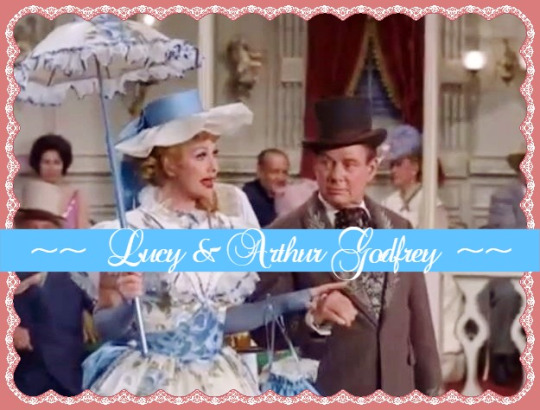
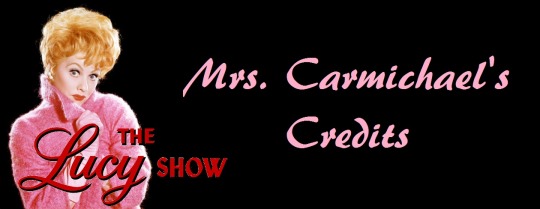
Synopsis
Lucy and Viv land Arthur Godfrey for their benefit show about the founding of Danfield.
Regular Cast
Lucille Ball (Lucy Carmichael / Lucybelle)
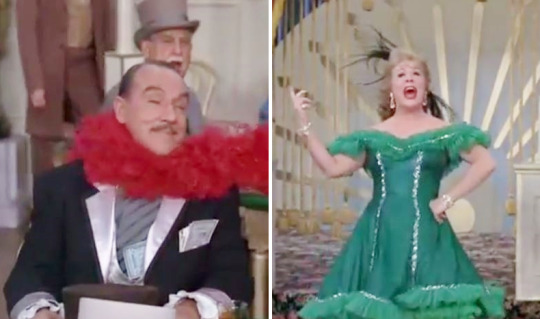
Gale Gordon (Theodore J. Mooney / Conrad P. Field), Vivian Vance (Vivian Bagley / Bessie)
Guest Cast

Arthur Godfrey (Himself / Daddy) was born in New York City in 1903. He was a radio and TV host and had his own television show “Arthur Godfrey and His Friends (later known as “The Arthur Godfrey Show” on CBS, which was consistently in the top of the ratings, along with “I Love Lucy.” He was concurrently the host of “Arthur Godfrey's Talent Scouts” (later known as “Talent Scouts”) which showcased such performers as Ken Berry, Wally Cox, Don Knotts, and Steve Lawrence, all of whom went on to appear with Lucille Ball.
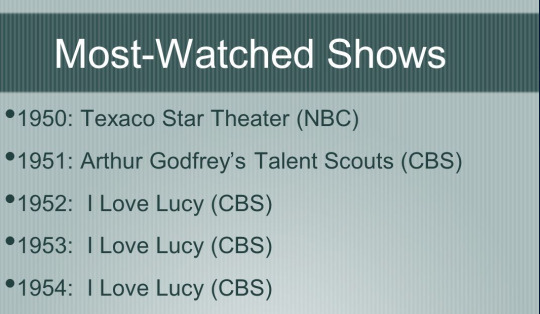
His career was marred by his on air firing of Julius LaRosa. CBS historian Robert Metz, in CBS: Reflections in a Bloodshot Eye, quoted Godfrey as having once told cast and staffers, "Remember that many of you are here over the bodies I have personally slain. I have done it before and I can do it again." Despite his ability to bring in profits, CBS executives who respected Godfrey professionally disliked him personally. This included CBS chairman William S. Paley. His career was also plagued by accusations of anti-antisemitism. He appeared in the movies 4 for Texas (1963), The Glass Bottom Boat (1966), and Where Angels Go Trouble Follows (1968). He briefly co-hosted “Candid Camera” with creator Allen Funt, but that relationship, like so many others, ended abruptly and acrimoniously. Arthur Godfrey died in 1983.
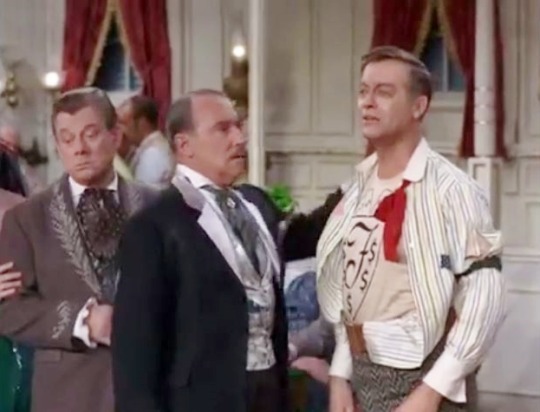
Max Showalter (Vinnie / Honest-But-Poor Piano Player) previously played Vinnie in “Lucy Gets Amnesia” (S3;E4). He was born in Kansas (like Vivian Vance) in 1917. He got the acting bug as a toddler when mother took him to the local theater where she played piano for silent movies. He acted in 92 shows at the Pasadena Playhouse between 1935 and 1938 and made his Broadway debut in Knights of Song. On Broadway, he played the role of Horace Vandergelder in Hello, Dolly! more than 3,000 times opposite such luminaries as Carol Channing, Betty Grable, and Ginger Rogers. Showalter made more than a thousand TV and film appearances. Toward the end of his life he lived in Connecticut (again, like Vivian Vance) and died there in 2000.
Showalter is never referred to as Vinnie. He is the author of the benefit show where he plays the poor-but-honest piano player with a mysterious background.

Carole Cook (Mrs. Baldwin) was seen as Lucy’s neighbor Thelma Green in four episodes. Cook was a protege of Lucille Ball’s during the Desilu Playhouse years. Although she was born as Mildred Cook, Ball suggested she take the name Carole, in honor of Lucy’s great friend, Carole Lombard. Cook also went on to appear in five episodes of “Here’s Lucy.”
Cook is never referred to as Mrs. Baldwin. In the benefit show she sits at a cafe table as part of the chorus.
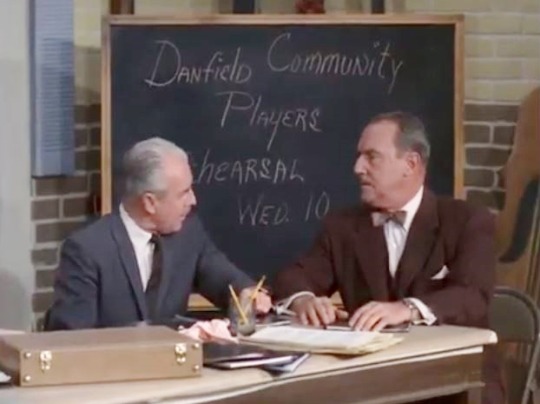
Stanley Farrar (Mr. Gilbert) was seen on “I Love Lucy” in “Home Movies” (ILL S3;E20) and “Staten Island Ferry” (ILL S5;E12). He previously appeared in another celebrity-themed episode “Lucy Meets Danny Kaye” (S3;E15).
Farrar is never referred to as Mr. Gilbert.
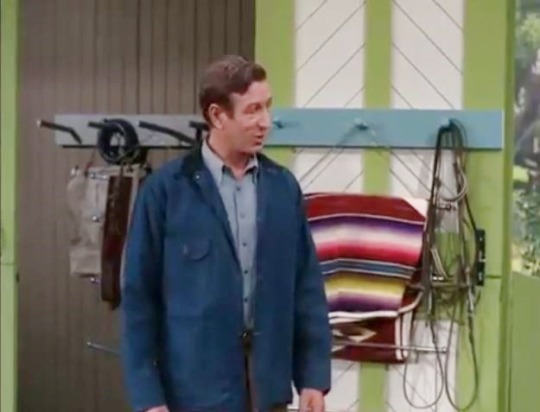
Clyde Howdy (Wilby, the Groom) was mostly seen in Westerns, except for the musical films Bye Bye Birdie (1963) and My Fair Lady (1964). This is his only credit with Lucille Ball.
Fury (uncredited) is one of three live horses used in the episode. The horse is likely named in order to sound more intimidating to Lucy. The horse Viv mounts goes unnamed.
Sid Gould (Riverboat Bartender, uncredited) made more than 45 appearances on “The Lucy Show,” and nearly as many on “Here’s Lucy.” Gould (born Sydney Greenfader) was Lucille Ball’s cousin by marriage to Gary Morton. He usually played delivery men and waiters.
Bennett Green (Riverboat Waiter, uncredited) was Desi Arnaz’s camera and lighting standby during “I Love Lucy”. He often does background work on “The Lucy Show” and also appeared on “Here’s Lucy.”
Some of the Riverboat Patrons are played by:
George DeNormand had appeared in three films with Lucille Ball from 1937 to 1963. This is the fourth of his many appearances on “The Lucy Show” and “Here’s Lucy.”
William Meader had appeared as an airport extra in “The Ricardos Go to Japan,” a 1959 episode of “The Lucy-Desi Comedy Hour.” He made many appearances on “The Lucy Show,” most times as a clerk in Mr. Mooney’s bank.
Alberto Morin was born in Puerto Rico, and appeared in some of Hollywood’s most cherished films: Gone with the Wind (1939), Casablanca (1943), and Key Largo (1948). He was Carlos, one of Ricky’s “Cuban Pals” (ILL S1;E28) and the Robert DuBois in “The French Revue” (ILL S3;E7). His many background appearances on “The Lucy Show” and “Here’s Lucy” were all uncredited.
Judith Woodbury makes the fifth of her many uncredited appearances on “The Lucy Show.” She also appeared on “Here’s Lucy.”
Hans Moebus was a German-born actor who appeared as an uncredited background performer in hundreds of films and TV shows, including the Lucille Ball films DuBarry Was a Lady (1943), A Woman of Distinction (1950) and The Facts of Life (1960). He was on the dock during the “I Love Lucy” episode “Bon Voyage” (ILL S5;E13). Moebus returned for one more episode of “The Lucy Show.”
More men and women singers round out the Riverboat chorus.
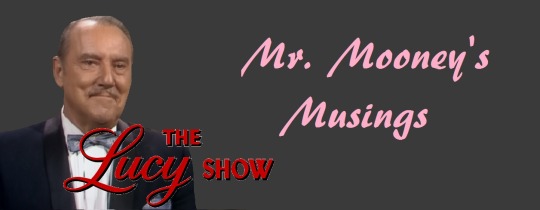
Unusually, this episode has no scenes taking place at the Bank or Lucy and Viv’s home, both regular locations for the series.

Danfield is a fictional town established to be in New York state, although its exact location is never established, except that it is a commuter city of Manhattan located near the train lines. For everything you ever wanted to know about Danfield, click here! The name Danfield may have been created by combining the names of two Fairfield County, Connecticut, towns: Danbury and Ridgefield.
"The human mind is like a cave. Beyond the light are dark passageways and mysterious recesses. I, Doctor Daniel Danfield, have explored those unknown retreats and know their secrets"
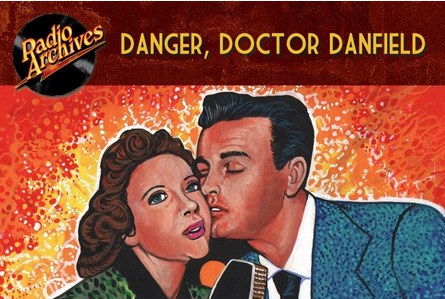
The name might also have been borrowed from the tremendously popular radio show “Danger, Dr. Danfield” heard on ABC radio from 1946 to 1947 and then in syndication. It starred Stephen Dunne as Dr. Danfield. Dunne had a small role in Miss Grant Takes Richmond (1949) with Lucille Ball and was in several episodes of the short-lived TV series “My Favorite Husband” based on Lucille Ball’s radio series. One of the show’s regular performers was Jay Novello, who also shows up on “I Love Lucy” and “The Lucy Show.” Other “Lucy” actors on the program included Herb Vigran, Howard McNear, Parley Baer, and Lurene Tuttle.
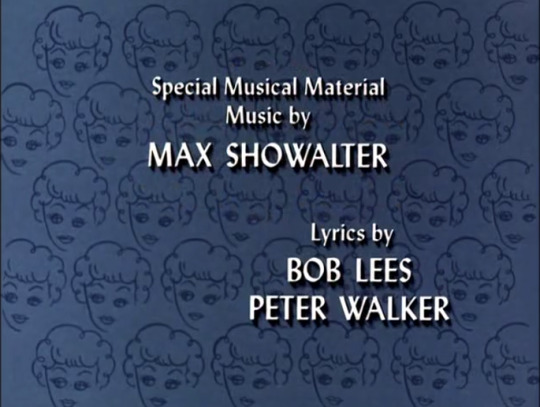
The songs for the show-within-the-show were written by Max Showalter (Vinnie), Bob Lees, and Peter Walker.
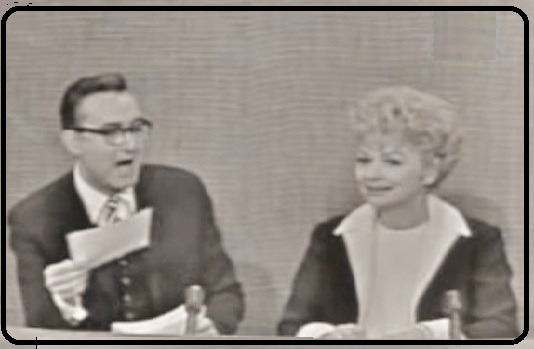
At 8pm on March 8, 1965, a half hour before this episode first aired, Lucille Ball appeared on the CBS quiz show “I've Got a Secret” hosted by Steve Allen. Gary Morton, Lucy's husband, was one of the panelists.
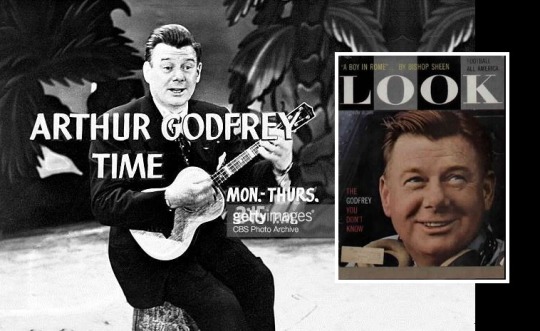
Arthur Godfrey had been a huge television star in the 1950s, but by this time was semi-retired. He was a very influential entertainer and celebrity who made (and ended) many entertainers’ careers. His arrogance, combined with rumors of strong anti-Semitism, made him almost non-entity in show business by this time. Lucille Ball didn't care. She liked him, and thought that his work was solid.
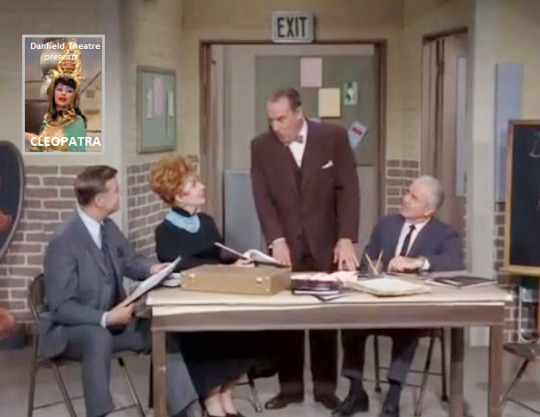
The Danfield Community Players previously staged a production of Cleopatra starring Lucy and Viv at the start of season two.
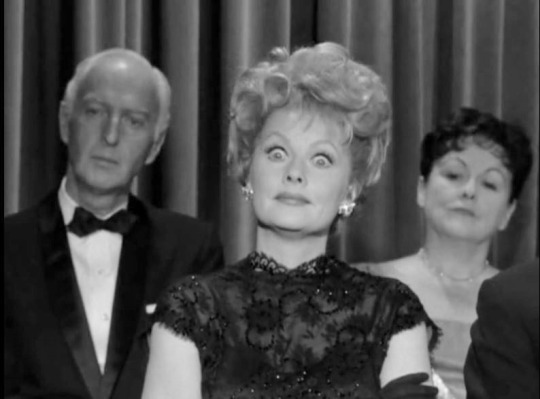
The show is to benefit the children's wing of the hospital. Lucy and Viv were helping fund the children's hospital as far back as “Lucy the Music Lover” (S1;E8, above).
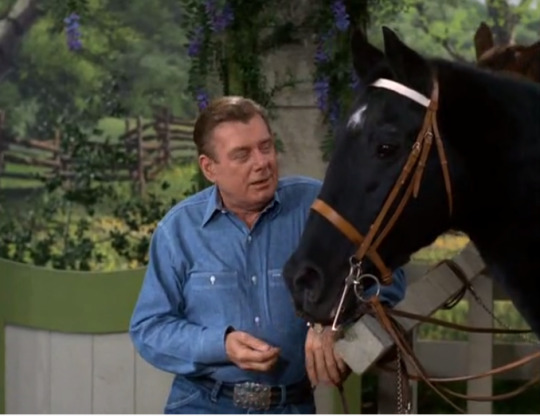
At the stable, Godfrey talks to Fury the horse using his famous greeting: “How are ya how are ya how are ya?” something he started saying on radio. He then launches into one of his famous on-camera commercial pitches – also to the horse – about sugar cubes.
Arthur Godfrey tells Lucy his secretary Mary Ann is very protective of him. In real life, Mary Ann Van was Godfrey's private secretary.
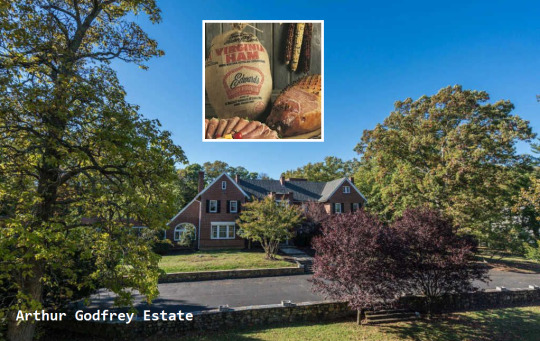
Godfrey describes himself as a “Virginia Ham”, a pun that plays upon the fact that he is a performer who (although born in New York) made his home at an estate in Paeonian Springs, Virginia, outside Washington DC. This is likely where the scene with the horses is set and why Lucy tells Godfrey to visit “Danfield, New York. Lovely country. You’ll enjoy the trip up there.” In show business slang, a ‘ham’ is a performer who craves the spotlight and/or performs in an exaggerated style. Virginia Ham (the meat) is dry cured and sent through a process of slow smoking and aging that adds a notable rich flavor.
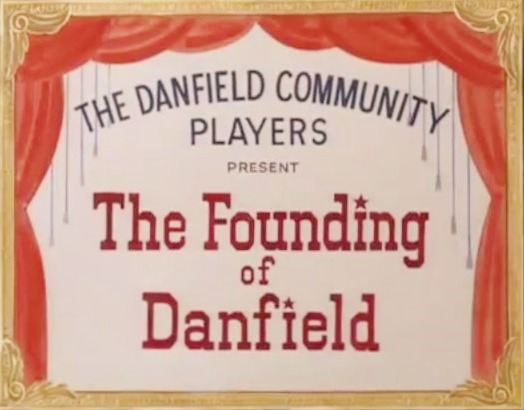
“The Founding of Danfield” is a two-act musical melodrama set on a riverboat in the south.
Lucybelle (Lucy) and her father (Godfrey) are broke and looking to marry her off to wealthy Yankee Conrad P. Field (Mr. Mooney) in order to save their plantation, Southern Moon. She attempts to get his attentions by dropping her hankie.
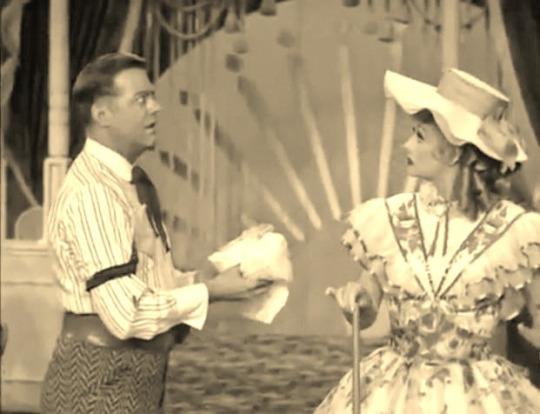
LUCYBELLE: “You want me to play hankie-panky with a Yankee?”
But Field is tempted away by the allures of the vamp Steamboat Bessie (Viv). Lucybelle, meanwhile, is smitten with the riverboat’s honest-but-poor piano player (Vinnie).

To compete with Bessie, Lucybelle transforms herself into Dixie Lucy doing a striptease in the process. We discover that the piano player is the long-lost son of Mr. Field. All ends happily (naturally) and Lucybelle and the piano player state their life-long dream: to settle down and found a town. Discovering her (now) rich -but-honest piano player husband-to-be is named Dan Field, she resolves that it will also be the name of their new town.

The musical melodrama features original songs written (in the context of the script) by the character of Vinnie and sung by Arthur Godfrey (who also plays the banjo), Lucy, and Viv. This mirrors real life as Max Showalter wrote the songs for the episode.
youtube
During the show, Gale Gordon does one of his famous cartwheels, the second of his eight cartwheels on a Lucycom.
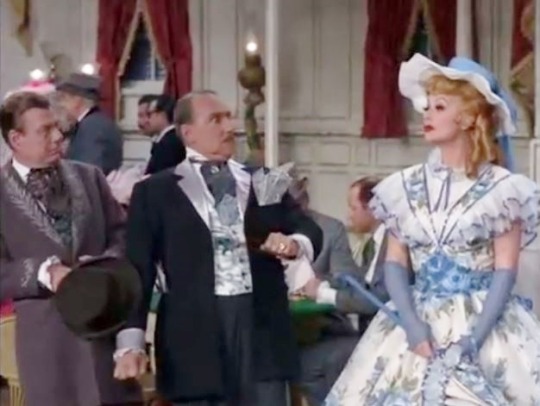
Lucy gets to play a very Scarlet O'Hara-like character in a broad comic style. Lucille Ball was considered for the role of Scarlet in 1939's Gone With the Wind. “Founding of Danfield” chorus member Hal Moebus was an extra in the Oscar-winning film.
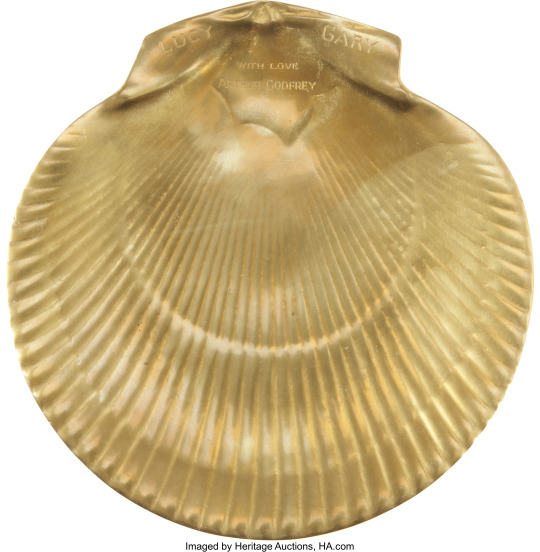
To express his thanks for being on the show, Godfrey sent Lucy and Gary this brass seashell-shaped plate engraved "Lucy / Gary / With Love / Arthur Godfrey." It came up for auction in 2010.
Callback!
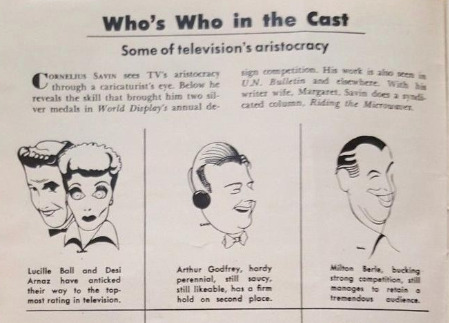
TV aristocracy according to a June 1952 local TV Guide.
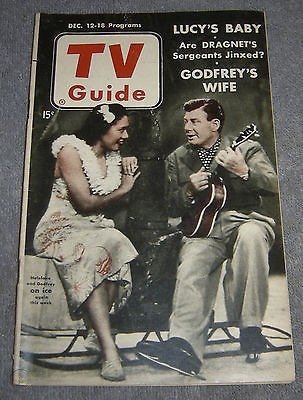
In December 1952, this local TV Guide cover featured Godfrey (and his wife Mary Bourke) and promoted an inside article about “Lucy’s Baby”, several months before the birth.
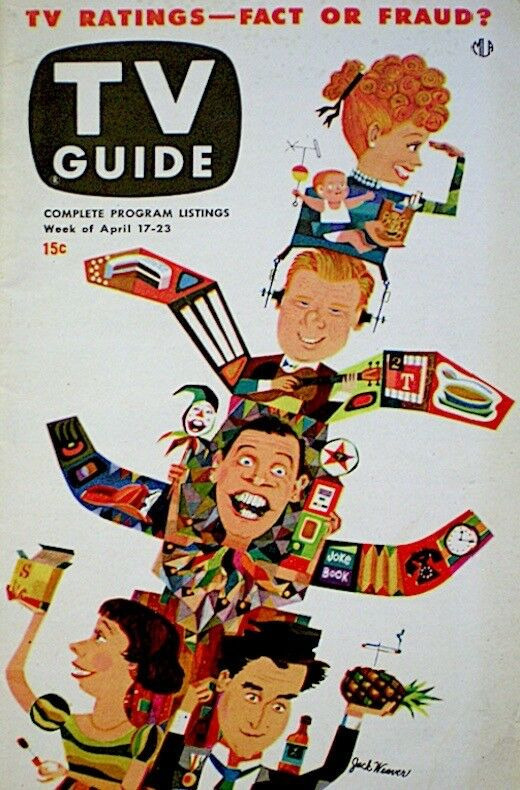
In 1953, Lucille Ball and Arthur Godfrey were atop the TV totem pole on the cover of TV Guide, the 3rd national edition and the second to feature Lucille Ball! The caricature also featured Milton Berle, Imogene Coca, and Sid Caesar. Note that Lucy is holding Little Ricky and a pack of Philip Morris cigarettes while Godfrey plays the ukulele. Lucille Ball appeared on the cover of TV Guide 39 times while Godfrey scored 16 covers.
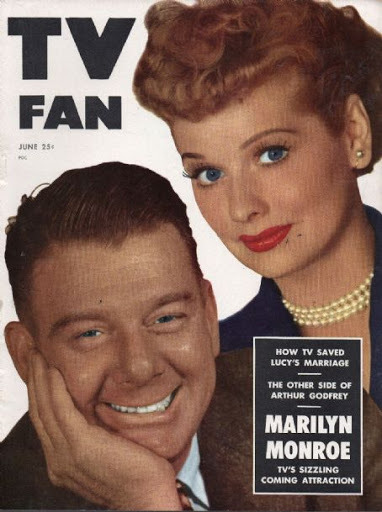
That same year, Godfrey and Ball graced the cover of TV Fan Magazine. Inside articles on the stars were titled “How TV Saved Lucy’s Marriage” and “The Other Side of Arthur Godfrey.”
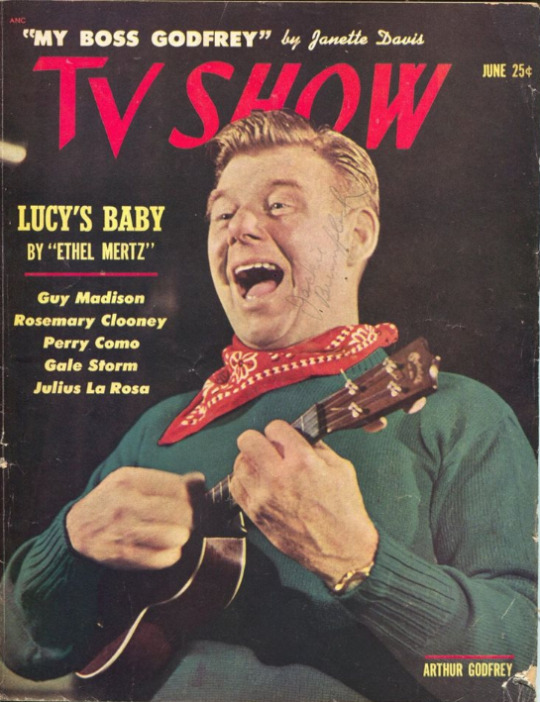
On the news stands at the very same time was an issue of TV Show Magazine with Godfrey on the cover and an inside article titled “Lucy’s Baby” by ‘Ethel Mertz’!
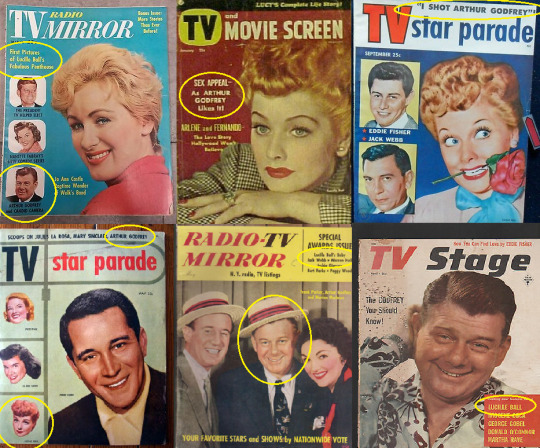
A sampling of magazine covers featuring and / or mentioning Godfrey and Ball during the 1950s, when both were at the height of their popularity.
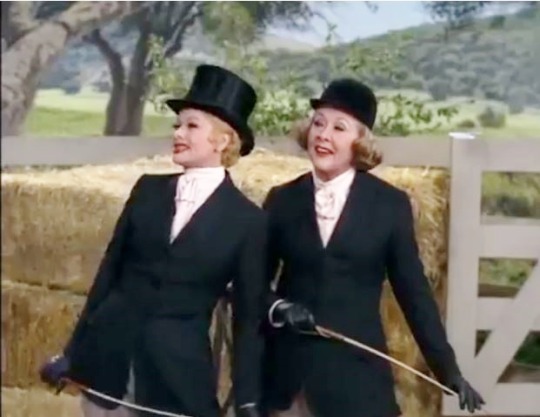
Disguising themselves as fox hunters dressed in full riding regalia, Lucy repeats some of the same language and comic business she first did on “The Fox Hunt” (ILL S5;E16). As in 1956, Lucy mounts the horse backwards. She also “rode to hounds” in the movies Annabel Takes a Tour (1938) and Mame (1974).
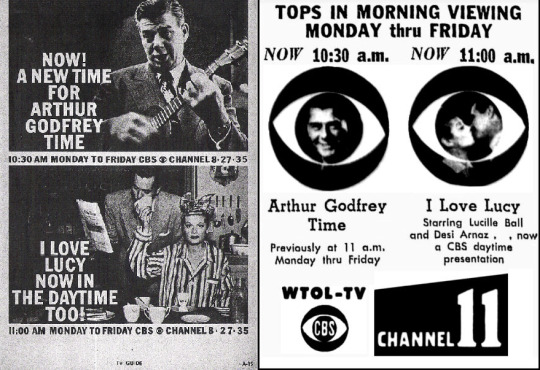
These January 1959 ads brag that “Arthur Godfrey Time” and “I Love Lucy” are ‘tops’ in weekday morning syndication. These CBS affiliates ran them back-to-back.
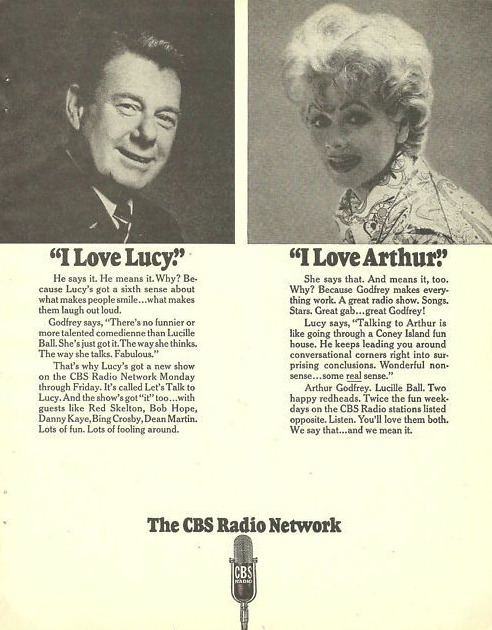
In 1964, Godfrey and Ball both had weekday radio programs on the CBS Radio Network.
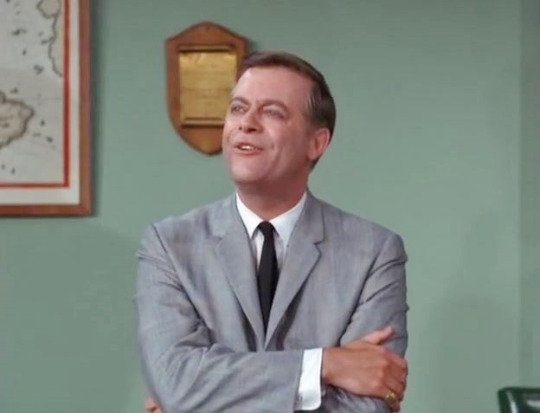
The character of Vinnie played by Max Showalter was first seen in “Lucy Gets Amnesia” (S3;E4). In that episode his surname is Meyers and he is said to be from the Jamestown branch of Mr. Mooney’s bank in order to account for him knowing Lucy from their childhood.
Fast Forward!
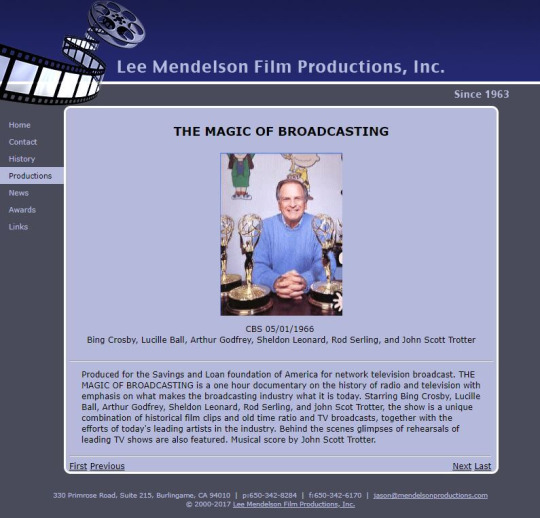
On May 1, 1966, Lucille Ball and Arthur Godfrey participated in a CBS documentary titled “The Magic of Broadcasting” which was produced by Lee Mendelson.
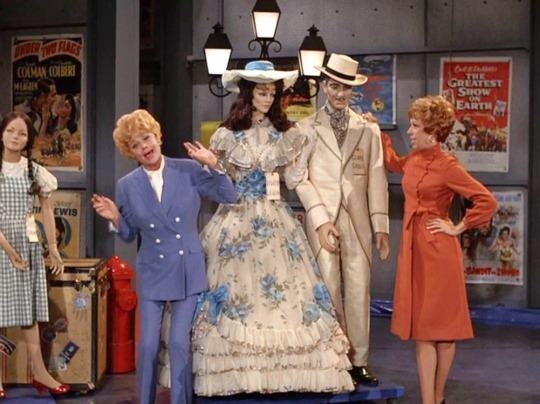
The antebellum dress worn by Lucille Ball as Lucybelle would be briefly seen again in "The Hollywood Unemployment Follies” (HL S3;E22)...
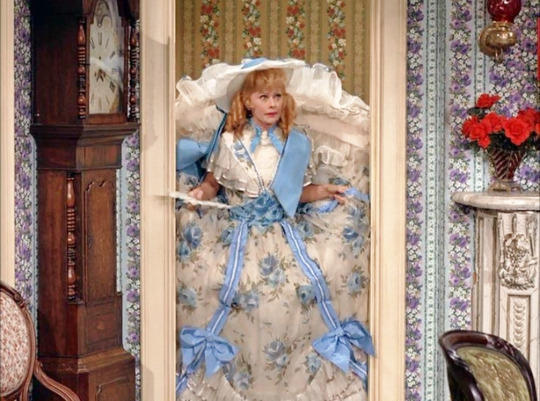
...and worn (with comic embellishments) by Lucy Carter as Scarlet O’Hara in “Lucy and Flip Go Legit” (HL S4;E1).
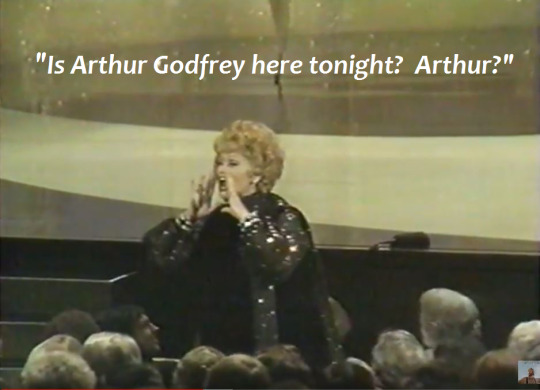
On March 13, 1978, Lucille Ball made a guest appearance on “Gene Kelly...An American in Pasadena”. Her entrance had her standing up in the audience shouting for Godfrey, who wasn’t there. Perhaps she was thinking of...
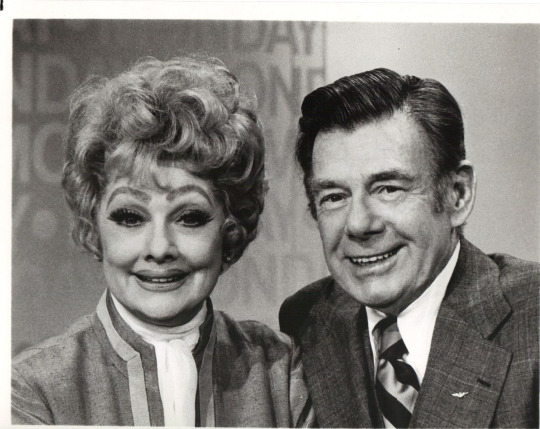
On March 27, 1978, Lucille Ball and Arthur Godfrey both participated in “CBS On The Air” representing Monday nights in the week-long celebration of their first five decades.
Blooper Alert!
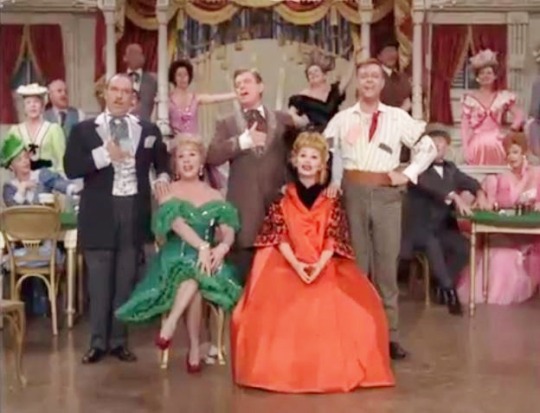
Although “The Founding of Danfield” runs for 15 minutes screen time, only the last minute hints at the founding of the town. Lucy Carmichael and Mr. Mooney will only live in Danfield for three more episodes until moving to California at the start of season 4.

“Lucy and Arthur Godfrey” rates 2 Paper Hearts out of 5
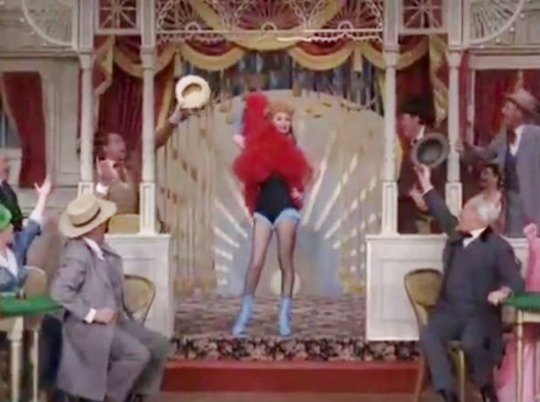
#The Lucy Show#Lucy and Arthur Godfrey#Arthur Godfrey#Lucille Ball#Vivian Vance#Max Showalter#Carole Cook#Riverboat#Musical#Stanley Farrar#Clyde Howdy#William Meader#George DeNormand#Judith Woodbury#Hans Moebus#Gone With The Wind#Horses#Fox Hunt#Ive Got a Secret#1965#TV#CBS
5 notes
·
View notes
Text
Lucy at Marineland
S4;E1 ~ September 13, 1965


Synopsis
Lucy moves to California and enrolls Jerry in Military School. When she discovers the students are about to go on a field trip to Marineland for Jimmy Piersall day, Lucy and Mr. Mooney take Jerry along, too. Jerry's autographed ball rolls into a pool and Lucy must swim with dolphins to retrieve it!
Regular Cast
Lucille Ball (Lucy Carmichael), Gale Gordon (Theodore J. Mooney)
Mary Jane Croft (Mary Jane Lewis) joins the show as a regular cast member this season, but she does not appear in this episode.
Guest Cast

Harvey Korman (Major Grayson) previously played stockbroker Mr. Phillips in “Lucy the Stockholder” (S3;E25) and Mr. Slater, the Camp Director in “Lucy, the Camp Cook” (S3;E6). Korman is best known as a cast member of “The Carol Burnett Show” (1967-1977), four episodes of which featured Lucille Ball. He will make two more appearances on “The Lucy Show.” In 1977 he had his own show on ABC which lasted just one season. At the time of this episode he was a regular on “The Danny Kaye Show” (1963-67) which aired Friday nights on CBS.

Jimmy Piersall (Himself) was a professional baseball player. At the time, he was with the Los Angeles Angels. Piersall fought a well-publicized battle with bipolar disorder that became the subject of the 1955 book and 1957 film Fear Strikes Out. He retired from the game in 1967.

Jimmy Garrett (Jerry Carmichael) was part of the original regular cast of “The Lucy Show” having appeared in 54 episodes. He will make just one more appearance on the series.

Robert S. Carson (Mr. Potter) was a busy Canadian-born character actor making the third of his six appearances on the series. He also made five appearances on “Here’s Lucy.”

Ted Eccles (Harold) previously played Mr. Mooney's son Arnold in “Lucy's Contact Lenses” (S3;E10). He began his show business career at the age of 4 and was 9 years old when he first appeared on “The Lucy Show.” He will make one more appearance on the series. His last screen appearance was in 1977 and is now producing for television.
The military school student shows Lucy and Jerry into Major Grayson's office. He is referred to simply as Corporal.

George Barrows (Bruiser) played a gorilla in his very first screen credit, Tarzan and His Mate (1934). He donned a gorilla suit 18 more times from 1954 to 1978. His final simian character was on “The Incredible Hulk.” This is his second appearance on “The Lucy Show” but his first out of the ape suit.
The character is sitting in the Marineland grandstands with his girlfriend. He is not called by name.

Larry Clark was Marineland's animal trainer. This is his only screen credit. Richard Williams was Marineland's announcer.
Some of the spectators at Marineland are played by:

Lucie Arnaz is the real-life 14 year-old daughter of Lucille Ball and Desi Arnaz. She was born in 1951 just before the premiere of “I Love Lucy.” Lucie played Chris's friend Cynthia in several earlier episodes of the series but she made her first (uncredited) appearance in “Lucy is a Referee” (S1;E3) as one of the spectators at the football game. Lucie also appeared with her mother and brother Desi Jr. on “Here’s Lucy.”
Desi Arnaz Jr. is the real-life 12 year-old son of Lucille Ball. His birth was worked into the plot of “I Love Lucy,” although Desi Jr. never played the role of Little Ricky Ricardo. His first series appearance was as one of the pee-wee football players in “Lucy is a Referee (S1;E3) although he played Jerry's friend Billy Simmons in four episodes. He later appeared with his mother and sister on “Here’s Lucy.”
Hans Moebus was a German-born actor who appeared as an uncredited background performer in hundreds of movies and TV shows, including the Lucille Ball films DuBarry Was a Lady (1943), A Woman of Distinction (1950) and The Facts of Life (1960). He was seen on the dock during the “I Love Lucy” episode “Bon Voyage” (ILL S5;E13). Moebus was previously part of the riverboat chorus in “Lucy Meets Arthur Godfrey” (S3;E23).
Monty O'Grady was first seen with Lucille Ball in The Long, Long Trailer (1953) and played a passenger on the S.S. Constitution in “Second Honeymoon” (ILL S5;E14). He was a traveler at the airport when “The Ricardos Go to Japan” (1959). He made a dozen appearances on the series and a half dozen more on “Here’s Lucy.”

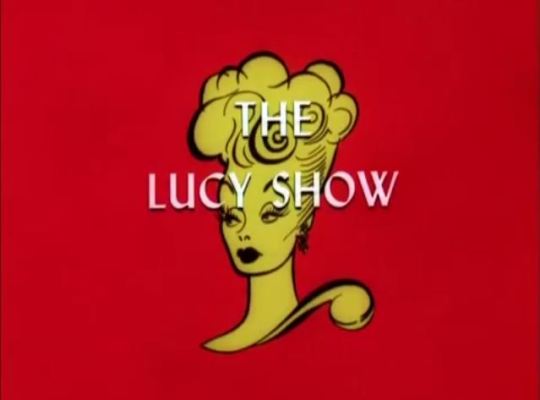
For season four the series has a new 'kaleidoscope' opening credit sequence designed by Howard Anderson, Jr., who was also responsible for the 'heart' opening of “I Love Lucy.” As in previous seasons, the theme music was composed by Wilbur Hatch, who was the show's musical director, a role he also performed on “I Love Lucy.”
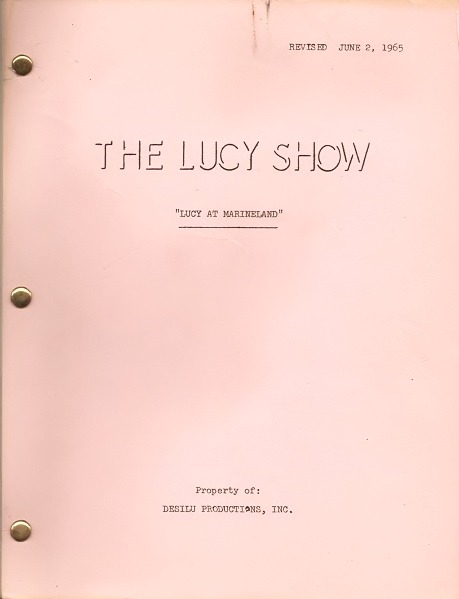
Maury Thompson takes over as director from Jack Donohue. He will be director of record for all of seasons four and five. Donohue returns to direct all but the first episode of season six.

This is the first episode of “The Lucy Show” to be broadcast by CBS in color. Seasons two and three were filmed in color, but aired in black and white.

Lucy explains that she and Jerry have moved to Southern California to be closer to Chris, who is attending college there. Vivian Bagley re-married to a man named Vern Bunson and remained in Danfield. Lucy says that Sherman is enjoying having a new dad. Mr. Mooney has also made the move West. He was given a choice between the state of California and the state of unemployment and chose the former.

Lucy enrolls Jerry at the Los Angeles Military Academy. Although an institution by this name existed at the turn of the 20th century, the name was probably chosen to help reinforce the show's new location. The last time Jerry was enrolled in military school on the East Coast it was called the Longridge Academy, although students and uniforms were provided by the real-life Page Military Academy in Los Angeles.

Lucy's trust fund has been transferred to the Westland Bank in Hollywood, coincidentally the same bank where Mr. Mooney has been reassigned.
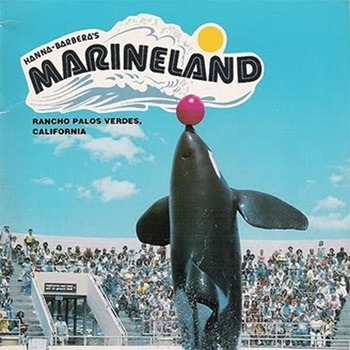
Marineland on the Pacific was a public oceanarium and tourist attraction located on then Palos Verdes Peninsula in Los Angeles County, California. When it opened in 1954, one year before Disneyland, Marineland was the world's largest oceanarium. In 1987 it was purchased by the owners of Sea World, who moved the popular killer whales and other animals to their San Diego facility and abruptly closed Marineland.

CBS had previously arranged location shoots at Marineland for “The Munsters” and “The Beverley Hillbillies.” Coincidentally, Sid Gould, Gary Morton's cousin and a bit player in 45 episodes of “The Lucy Show,” played the Munsters' Marineland tour guide.
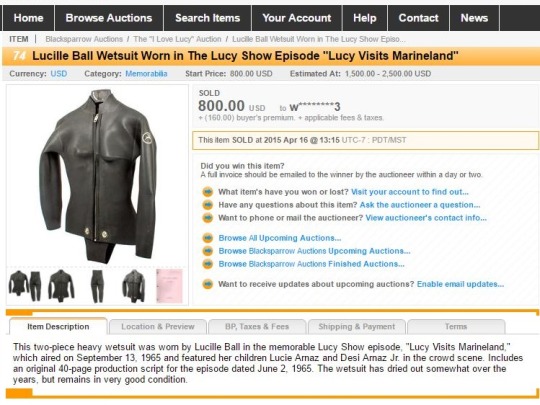
This is the first time the cast of “The Lucy Show” has left the studio for location shooting. The weather was unusually cold during the shoot. For the scenes in the water tank, Lucille Ball wore a wet suit under her clothes. The wet suit recently came up for auction with a top bid of $800.

The Marineland show begins with Bubbles the whale unfurling the American flag. Bubbles was the first pilot whale every captured for display.

Lucy says before marrying and settling down she was a secretary, a cashier, a telephone operator, a saleslady, a waitress and a librarian – all during her two week stay in New York City.

Mr. Mooney agrees to leave work and drive Lucy and Jerry to Marineland in his light colored Ford Falcon convertible. Mr. Mooney must like Ford Falcons because in “Lucy, the Camp Cook” (S3;E6) he drives a red Ford Falcon convertible.

Jimmy Piersall says about Lucy: “And they call me a kook!” This is a brave reference to Piersall's public battle with bi-polar disorder.

Lucy once again does her seal impersonation – this time in the company of real seals! She previously did it in “Lucy and the Countess Lose Weight” (S3;E21) but originated it in 1951’s “The Audition” (ILL S1;E6). Lucy Carmichael adds seals and dolphins to the every-growing list of live animals she has appeared with on the series.
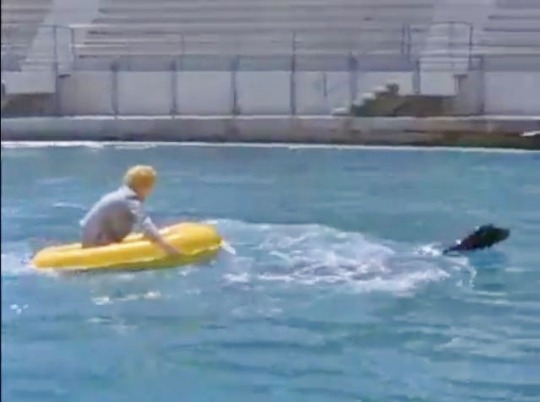
TV Guide devoted their August 28, 1965 (vol. 13, no. 35, issue #648) cover to this episode. In a four page article, Ball told TV Guide she was scared during filming due to the size of the animals. She was assured that the dolphins were harmless but was warned the sea lion had bitten attendants twice. The cover identifies the dolphin behind Lucy as Splash. This was just one of Lucille Ball's 39 TV Guide covers.

In an appearance on the short-lived “Steve Lawrence Show” (1965), which aired after Lucy on Monday nights, Lucille Ball showed outtakes from this episode. In once scene, she's accidentally tossed out of the raft being towed by the seal. She says the closing 30 second shot where she cries while the porpoises do tricks took 45 minutes to shoot because the animals were more interested in her than in doing their stunts.
Callback!
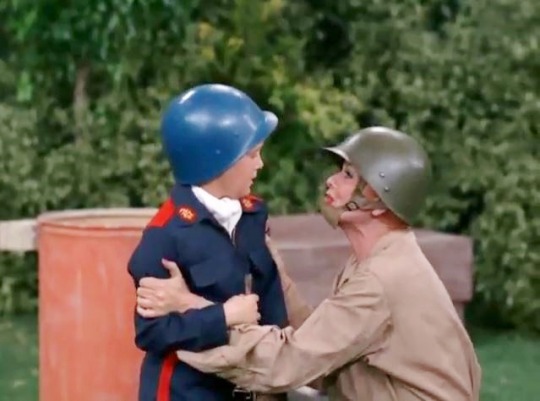
Lucy previously enrolled Jerry in a Military Academy in “Lucy and the Military Academy” (S2;E10) but withdrew him almost immediately because she missed him so much.

While “Deep Sea Fishing” (ILL S6;E7) in Florida in 1956, Lucy Ricardo says that Ricky and Fred are at the Miami Seaquariam taking publicity photos, although no scenes were shot there. The Miami Seaquarium had only just opened, two years after Marineland in California.
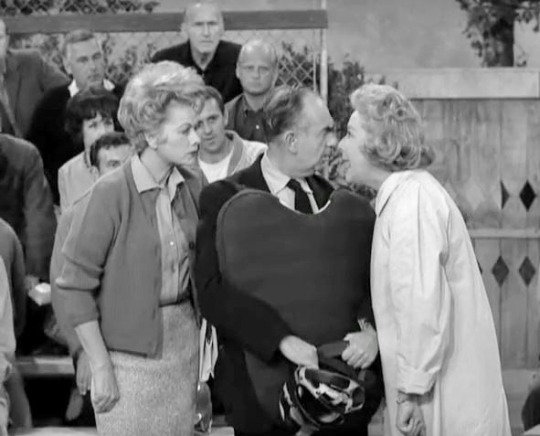
Lucy brags about Jerry's little league baseball experience, criticizing some “bad umpiring.” This is a direct callback to “Lucy and the Little League” (S1;E28).
Blooper Alert!

Mr. Mooney says that banks in California give gifts to customers opening accounts. He forgets that they also did that in Danfield, when Lucy gave toasters to those signing up for new accounts in “Lucy Takes a Job at the Bank” (S2;E21).

“Lucy at Marineland” rates 5 Paper Hearts out of 5

#The Lucy Show#Lucy at Marineland#Marineland of the Pacific#Marineland#Lucille Ball#Gale Gordon#Jimmy Garrett#Lucie Arnaz#Desi Arnaz Jr.#Hans Moebus#Mont O'Grady#Harvey Korman#Military Academy#Los Angeles#Hollywood#Jimmy Piersall#Los Angeles Angels#George Barrows#Ted Eccles#Robert S. Carson#Fear Strikes Out#TV Guide#1965#TV#CBS#Bubbles#Splash#Dolphins#Seals#Whales
2 notes
·
View notes
Text
GEORGE REEVES
January 5, 1914
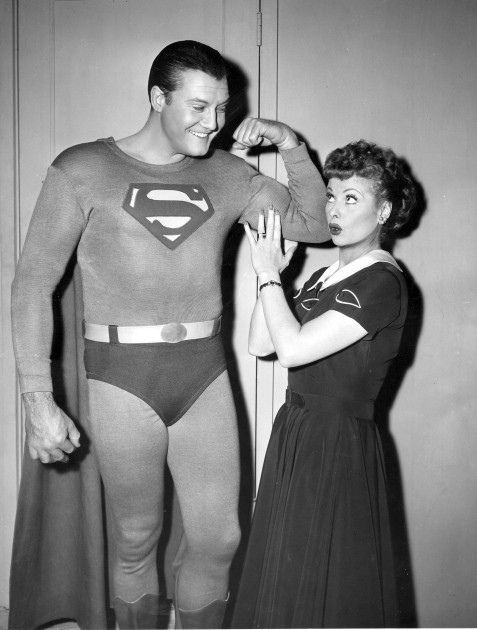
George Reeves was born George Keefer Brewer in Woolstock, Iowa. He is best known for his role as Superman in the television program “Adventures of Superman” (1952-58). His birth date is often listed as April 5, 1914, but that was born only five months after his parents' wedding and it was not until adulthood that he learned the truth. To further confuse matters, his mother made a mistake when having the urn containing his ashes inscribed and it reads January 6 instead of January 5.
Reeves began acting and singing in high school and continued performing on stage as a student at Pasadena Junior College.
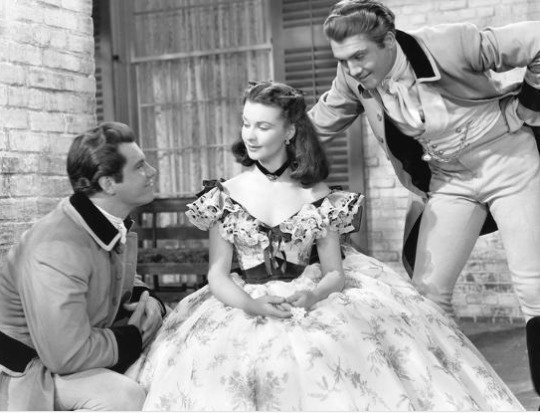
Reeves's film career took off in 1939 when he was cast as Stuart Tarleton (incorrectly listed in the film's credits as Brent Tarleton), one of Scarlett O'Hara's suitors (with Fred Crane, above left) in Gone with the Wind. Reeves dyed his hair red to portray one of the Tarleton twins. Lucille Ball read for the role of Scarlet O’Hara, one of hundreds of Hollywood starlets that vied for the role. References to the novel and iconic film can be found throughout her sitcoms. Had she gotten the part, she would have been in the film with her future “I Love Lucy” actors Olin Howland, Irving Bacon, Alberto Morin, Shep Houghton, Ralph Brooks, and Hans Moebus. Sam McDaniel, brother of Mammy portrayer Hattie McDaniel, would be the first and only person of color to speak on “I Love Lucy” as the Porter in “The Great Train Robbery” (ILL S5;E5). Lucille Ball would one day own the back lot where the movie was filmed!
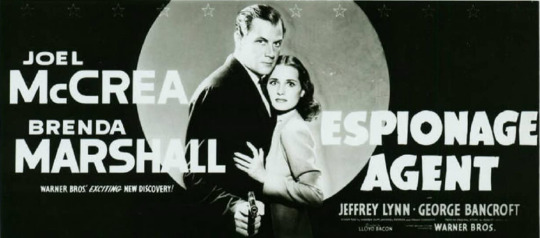
Although Gone With the Wind was his first credited role in a feature film, a Warner Brothers short film titled Ride, Cowboy, Ride and the feature Espionage Agent were actually released three months earlier.
While studying acting at the Pasadena Playhouse in 1940, Reeves married Ellanora Needles, granddaughter of circus magnate John Robinson. They had no children and divorced 10 years later.
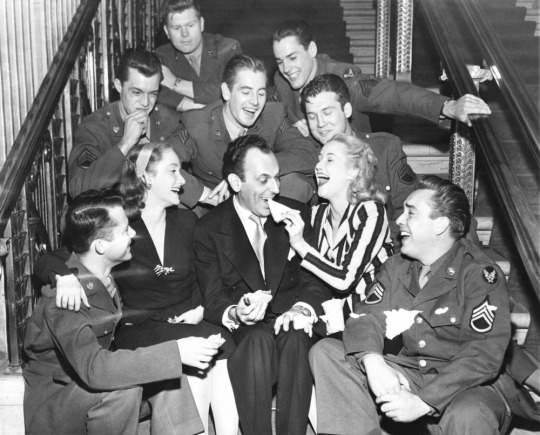
Before his television fame as Superman, Reeves enlisted in the US Army and appeared on Broadway in Winged Victory (1943) by Moss Hart (center). The cast featured actual service members, including Sergeant George Reeves (above, behind Phyllis Avery). He also appeared in the film version.
Reeves made his television debut on September 29, 1949 in an episode (now lost) of the suspense anthology series “The Clock.” Three weeks later he appeared in a second episode.
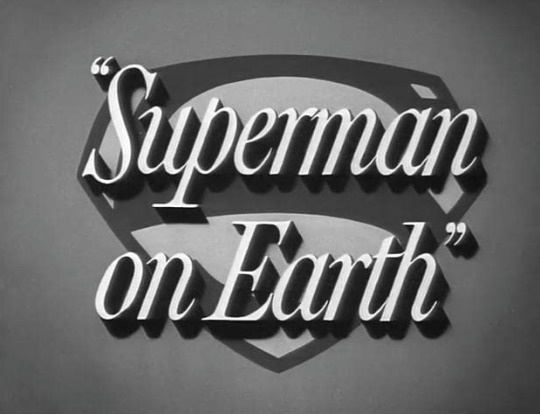
His first episode of “Adventures of Superman” was “Superman on Earth” aired on September 19, 1952. Ross Elliott, who played Ricky Ricardo’s Press Agent on “I Love Lucy”, was cast as Jor-El, Superman’s father, but was replaced by Robert Rockwell, famous for playing Mr. Boynton on “Our Miss Brooks”. Strangely, Elliott still receives screen credit. This first “Superman” also features Dani Sue Nolan, who was the wife of “I Love Lucy” director William Asher. Ironically, Asher did not direct the episode of “I Love Lucy” starring Reeves, which was staged by James V. Kern.
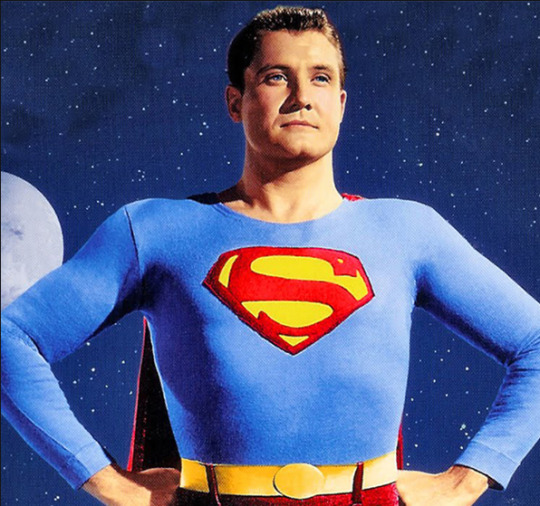
Reeves appeared in all 104 episodes over 6 seasons of the ABC TV series.
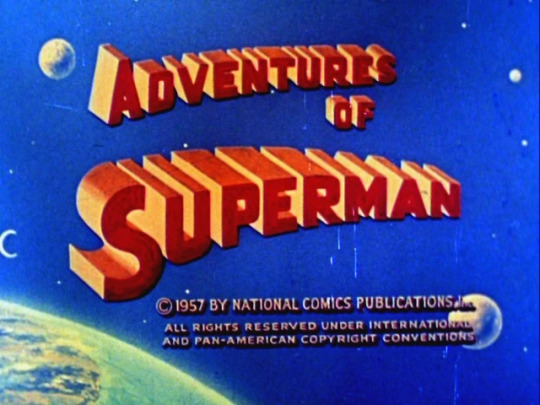
Initially shot and aired in black and white, the series (like “The Lucy Show”) was filmed in color starting with season 3. The first 26 episodes were filmed in 1951, the same year “I Love Lucy” started airing, but did not appear on television until 1952, when Kellogg's Cereals agreed to sponsor the show. Reeves was 44 years old during the filming of the sixth and final season, making him the oldest actor to have ever played Clark Kent / Superman in live-action. Although the Superman costume was padded to make it appear that Reeves had greater bulk, he did most of his own stunts. The first season of the series was shot on the 40 Acres back lot that was part of RKO / Desilu Studios.
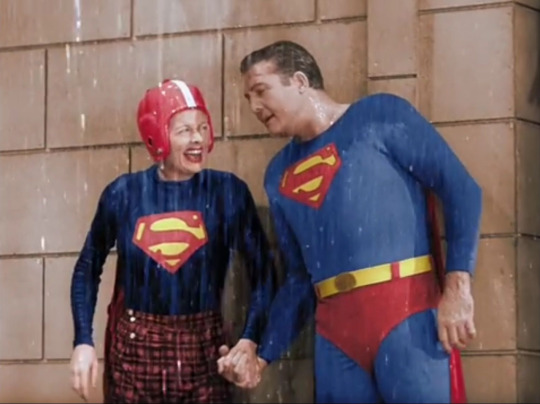
On November 15, 1956, Reeves filmed the now-iconic “I Love Lucy” episode “Lucy and Superman” (ILL S6;E13), which premiered on January 14, 1957. The episode was colorized on May 17, 2015.
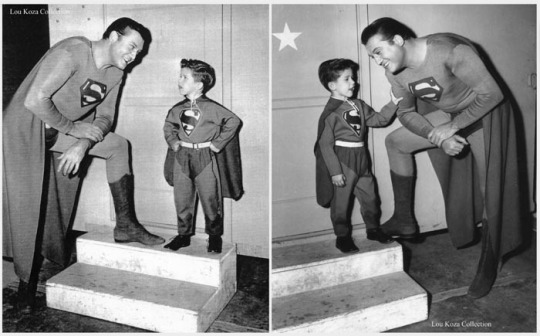
Keith Thibodeaux (Little Ricky) has said that this was his favorite episode of the series. He later talked about meeting Reeves...
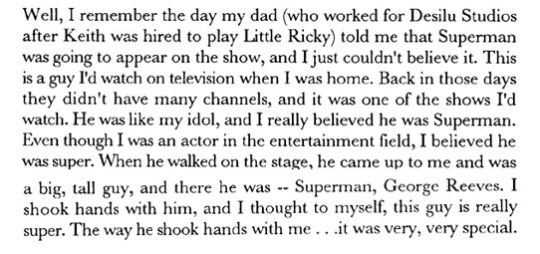
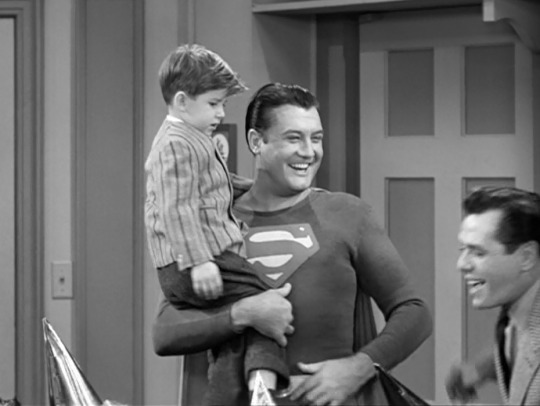
Reeves is never mentioned by name in the dialogue or in the original credits. Lucie Arnaz later theorized that this was in order not to destroy the illusion that Superman was real to the many children who watched the show. In syndication, an announcer end credit was added for Reeve. The logic about the absent billing, however, is odd since Reeves was always credited on his own show.
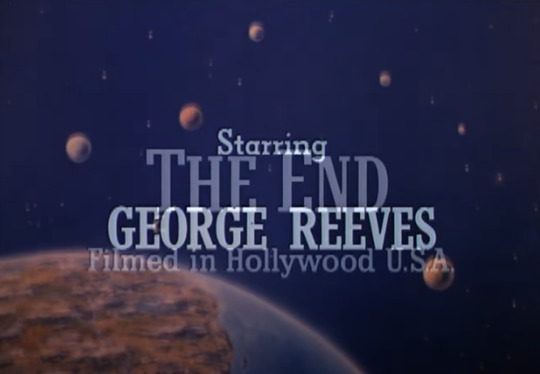
The final episode of the series was also Reeves’ final screen appearance. “All That Glitters” was also directed by Reeves, as were the previous two episodes.
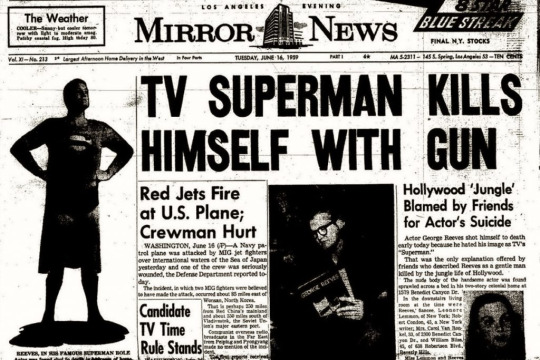
His death on June 16, 1959, from a gunshot remains a controversial subject; the official finding was suicide, but some believe that he was murdered or the victim of an accidental shooting. He was 45 years old.
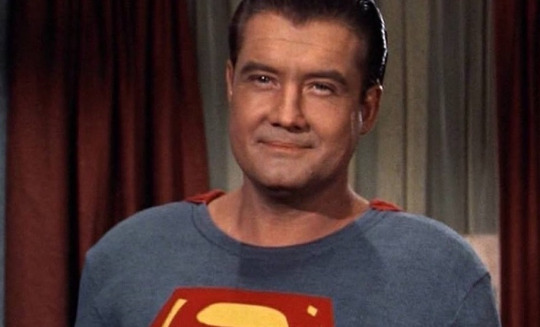
#George Reeves#I Love Lucy#Lucille Ball#Adventures of Superman#Clark Kent#Superman#TV#Keith Thibodeaux#Winged Victory#Moss Hart#Espionage Agent#Gone With the Wind
93 notes
·
View notes
Text
A WOMAN OF DISTINCTION
March 16, 1950
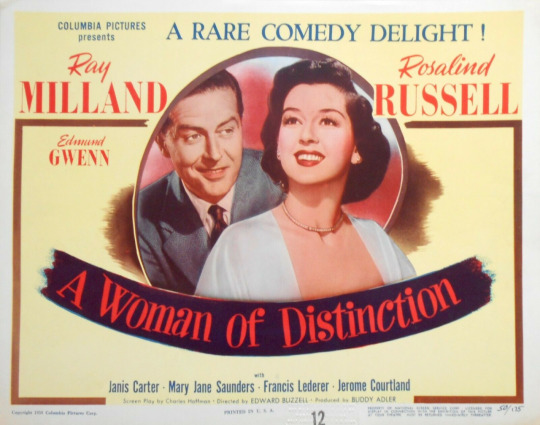
Directed by Edward N. Buzzell
Produced by Buddy Adler for Columbia Pictures
Written by Charles Hoffman; additional dialogue by Frank Tashlin; story by Ian McLellan Hunt and Hugo Butler
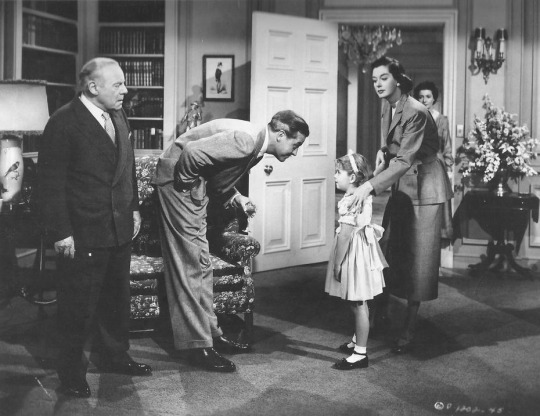
Synopsis ~ College dean Susan Middlecott thinks there's no room in her life for romance until she meets Professor Alec Stevenson, British lecturer on astronomy, who is in possession of a keepsake of Susan's that he wants to return. Desperate for publicity, lecture bureau press agent Teddy Evans magnifies this into a great romance. The efforts of both dignified principals to quash the story have the opposite effect.
PRINCIPAL CAST
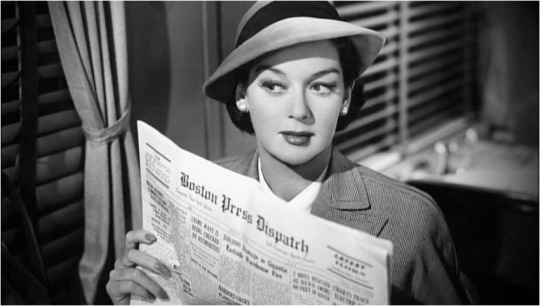
Rosalind Russell (Susan Middlecott) is probably best remembered as Auntie Mame, a role she played on Broadway and in the film and a role Lucille Ball would film in the 1974 musical version of the play. She was nominated for four Oscars. This is her only appearance with Lucille Ball.
Edmund Gwenn (Mark Middlecott) is probably best remembered for playing Kris Kringle in Miracle on 34th Street (1947), which also featured William Frawley. He won an Oscar in 1951 for Mister 888. This is his only appearance with Lucille Ball.
Ray Milland (Alec Stevenson) won a 1945 Oscar for The Lost Weekend. This is his only appearance with Lucille Ball.
Janis Carter (Teddy Evans) also appeared with Lucille Ball in Miss Grant Takes Richmond (1949).
Mary Jane Saunders (Louisa) was a seven year-old child actor who also appeared with Lucille Ball in 1949′s Sorrowful Jones.
Francis Lederer (Paul Simone) makes his only appearance with Lucille Ball.
Jerome Courtland (Jerome) makes his only appearance with Lucille Ball.
UNCREDITED CAST
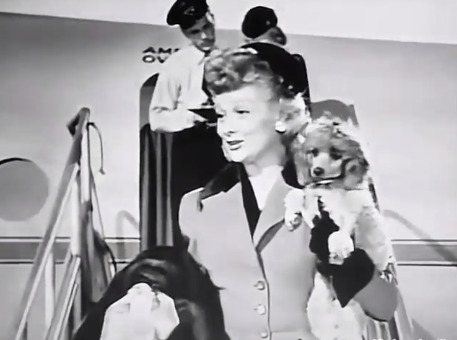
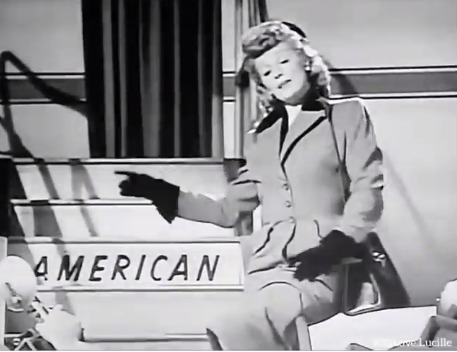
Lucille Ball (as Lucille Ball) plays herself in a cameo appearance in her 73rd motion picture. Leaving an airplane holding a lapdog, movie star Lucille Ball stops to pose for photographs.
Gale Gordon (Station Clerk) was Lucille Ball’s co-star in every one of her radio and television shows: Rudolph Atterbury on “My Favorite Husband,” Alvin Littlefield on “I Love Lucy,” Theodore J. Mooney on “The Lucy Show,” Harrison Otis Carter on “Here’s Lucy,” and Curtis McGibbon on “Life With Lucy.” Whether bellowing or turning a cartwheel, he was Lucy’s perfect comic foil!
Gail Bonney (Woman) also appeared with Lucille Ball in The Fuller Brush Girl (1950). She re-teamed with Lucy in as Mr. Hudson in “The Amateur Hour” in 192, a 1965 episode of "The Lucy Show”, and a 1968 episode of "Here’s Lucy.”
Harry Cheshire (Stewart) also appeared with Lucille Ball in Her Husband’s Affairs (1947), and Miss Grant Takes Richmond (1949). He played oil tycoon Sam Johnson in “Oil Wells” (1954). Mary Ellen Kay (Background Performer) later played Mrs. Taylor, who rents the Ricardo apartment in “Lucy Hates to Leave” (1957).
Norman Leavitt (Earl, Hotel Desk Clerk) also appeared with Lucille Ball in The Long, Long Trailer (1953). He made three appearances on the “The Lucy-Desi Comedy Hour” after which he was in The Facts of Life (1960) and two episodes of "The Lucy Show.”
William Newell (Bartender) played the Nome hotel desk clerk in “Lucy Goes To Alaska” an episode of “The Lucy-Desi Comedy Hour” featuring Red Skelton.
Hans Moebus (Background Performer) was a German-born actor who appeared as an uncredited background performer in hundreds of movies and TV shows, including the Lucille Ball films DuBarry Was a Lady (1943), and The Facts of Life (1960). On “I Love Lucy,” Moebus was seen in “Bon Voyage” also in two episodes of “The Lucy Show.”
Reporters: Larry Barton, Richard Bartell, Harry Strang, Donald Kerr, Charles Jordan, Ted Jordan
Members: Lelah Tyler, Mira McKinney
Conductors: William E. Green, Robert Malcolm
Alex Gerry (Herman Pomeroy) Charles Evans (Dr. McFall) Charlotte Wynters (Miss Withers) Clifton Young (Chet) Jean Willes (Pearl) Wanda McKay (Merle) Elizabeth Flournoy (Laura) Harry Tyler (Charlie) Harry Harvey, Jr. (Joe) Maxine Gates (Goldie) Walter Sande (Officer) Marie Blake (Wax Operator) Napoleon Whiting (Porter) John Smith (Boy) Charles Trowbridge (Jewelry Salesman) Dudley Dickerson (Waiter) Lucille Browne (Manicurist) Lois Hall (Stewardess) Myron Healey (Cameraman) Edward Keane (Sergeant)
TRIVIA OF DISTINCTION
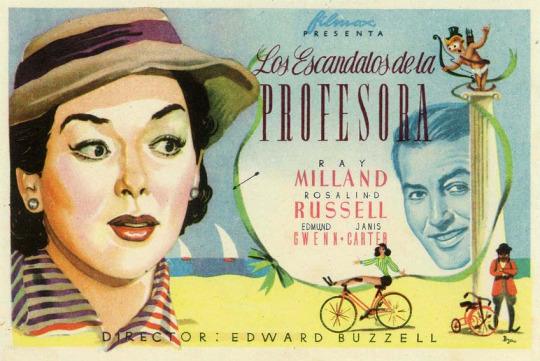
In Spain the film was titled The Teacher’s Scandals.
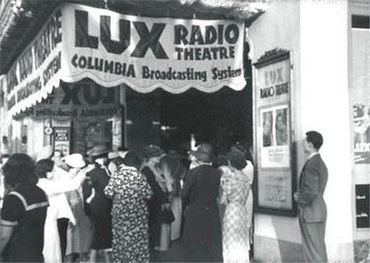
"Lux Radio Theater" broadcast a 60 minute radio adaptation of the movie on October 23, 1950 with Rosalind Russell reprising her film role. Coincidentally, Lucille Ball took over for Rosalind Russell when Screen Directors Radio Playhouse presented “A Foreign Affair” in March 1951.
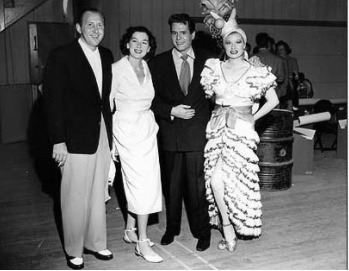
Rosalind Russell and her husband Fred Brisson were in the studio audience the night “I Love Lucy” filmed “Be A Pal” on September 21, 1951.
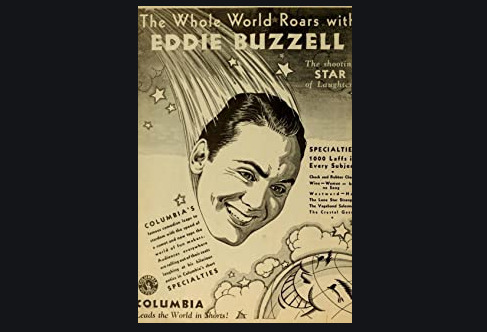
Eddie Buzzell also directed Lucille Ball in Best Foot Forward (1943) and Easy to Wed (1946). His name was mentioned as a going away party guest in “Drafted” (ILL S1;E11).
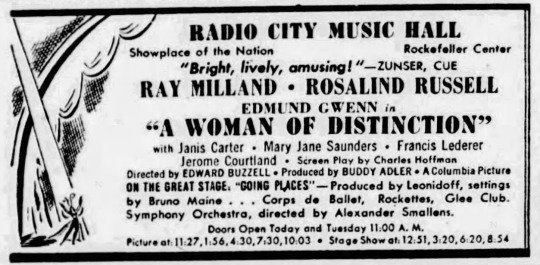
#A Woman of Distinction#Lucille Ball#Rosalind Russell#Edmund Gwenn#Ray Milland#Gale Gordon#Eddie Buzzell
11 notes
·
View notes
Text
ROBERT ALDA
February 26, 1914
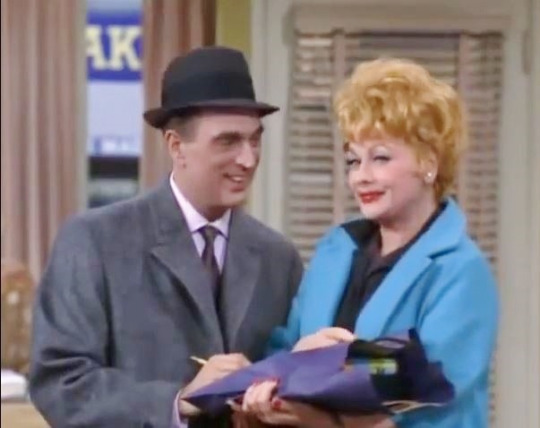
Robert Alda was born Alfonso Giuseppe Giovanni Roberto D'Abruzzo in New York City to Italian-American immigrants. He began his performing career as a singer and dancer in vaudeville after winning a talent contest, and moved on to burlesque. His professional surname derives from the first two letters of each of his first name and his surname at birth: ALphonso D’Abruzzo.
“I learned my trade in the best of schools - burlesque.” ~ Robert Alda
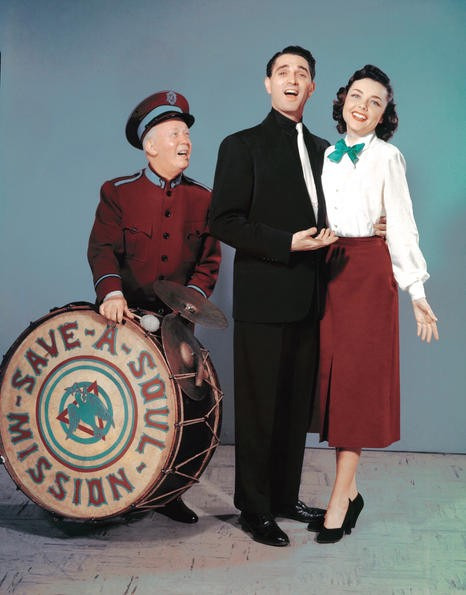
In 1950 he won a Tony Award for his Broadway debut as Sky Masterson in Guys and Dolls, although he was passed over for the film in favor of Marlon Brando. Over the next two decades he appeared in four more Broadway shows.
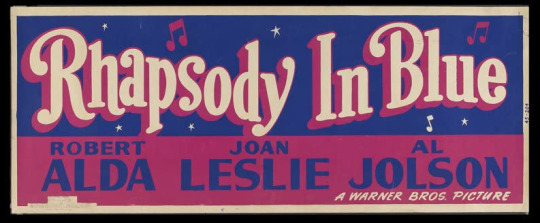
Five years earlier he had made his screen debut playing George Gershwin in Rhapsody in Blue (1945). The film also featured future Lucy cast members Jay Novello, Hans Moebus, Will Wright, Jack Chefe, Oliver Blake, Paul Cristo, and Bess Flowers. It wouldn’t take more than twenty years, but Alda would also be added to this list.
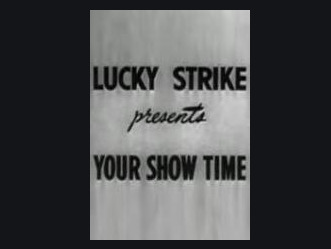
He made his TV acting debut on the 1949 anthology series “Your Show Time” episode “The Substitute”. The program was repeated in 1951 on “Your Story Theatre”. He also appeared as himself in “The Teen Club” in September 1949.
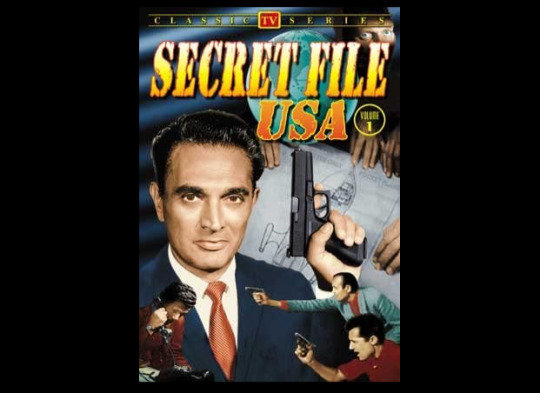
In 1955 he hosted “The Robert Alda Show” although not much is known about the program. At the same time he played his first leading role on television in “Secret File USA” doing 8 out of the 22 episodes of the series.
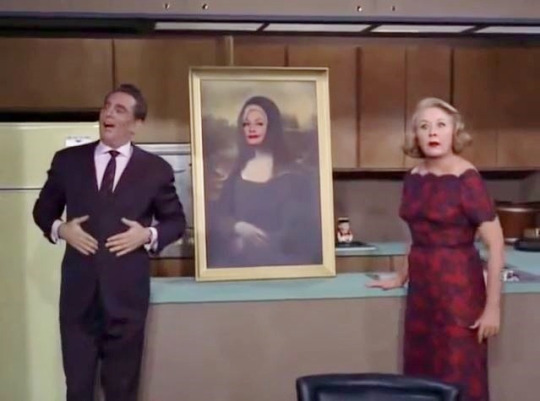
His first appearance with Lucille Ball (and with Desilu) came on January 13, 1964 in “Lucy Goes To Art Class” (TLS S2;E15). Alda played Danfield’s most eligible bachelor - and both Lucy and Viv set their sights on him at the same time when he signs up for an art class.
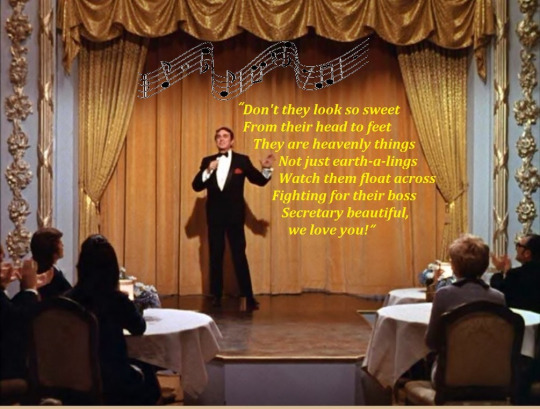
Six years later, Alda played himself as the emcee of the Secretary Beautiful Pageant when “Lucy Competes with Carol Burnett” (HL S2;E24) in March 1970. The role was originally written for Don Ameche, then re-cast with Ross Martin, before Alda was finally contacted for the part. He got to use his musical theatre skills singing the pageant’s theme. Coincidentally, his first wife Joan Browne (mother of actor Alan Alda), was a beauty contest winner. They divorced in 1946 after 14 years of marriage.
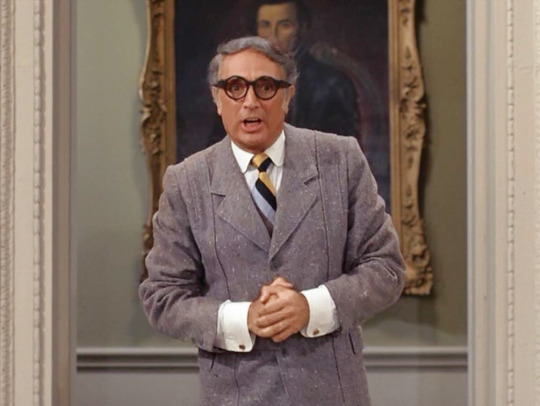
It wasn’t long before Alda was back, doing what was familiar, playing musical comedy in a revival of Harry’s 1928 college show. Alda played the Dean of Bullwinkle U in “Lucy, the Co-Ed” (HL S3;E6) in October 1970.
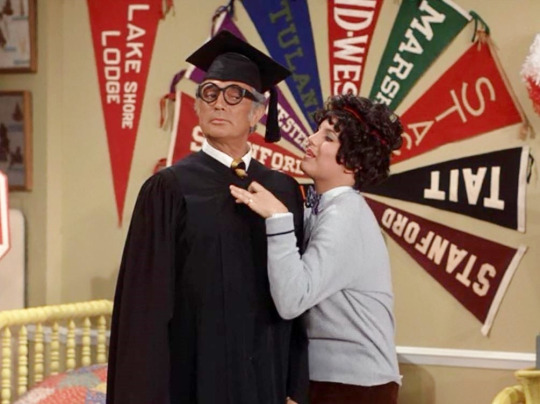
Oddly, Robert Alda has a principal role in the musical-within-the-show but has no corresponding 'real life’ character as the others do. Perhaps the character was cut from the opening scenes for time? It is possible that Alda was playing himself again.
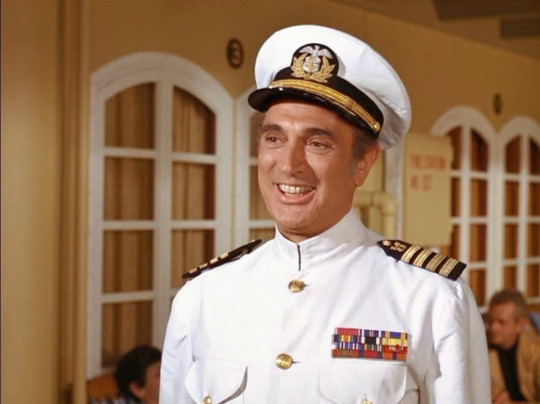
His final series appearance came a year later in the two-parter “Lucy Goes Hawaiian” (HL S3;E23 & E24) first aired February 15 & 22, 1971. In both parts he played Captain MacClay, of the Hawaii-bound cruise ship USS Lurline.
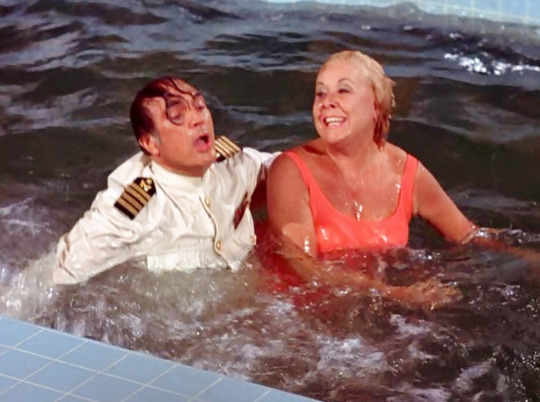
Again, Lucy and Viv compete for the handsome Alda’s attentions - until they find out that there is a Mrs. MacClay and she’s on the ship, too! The surname MacClay is a tribute to Lucille Ball’s long-time publicist Howard McClay, who also loaned his name to characters on “The Lucy Show.” The end credits, however, spell 'McClay’ as 'MacClay.’ Although Part Two ends with a musical revue, Tony-winning singer Alda is relegated to introductions and does not get a solo feature.
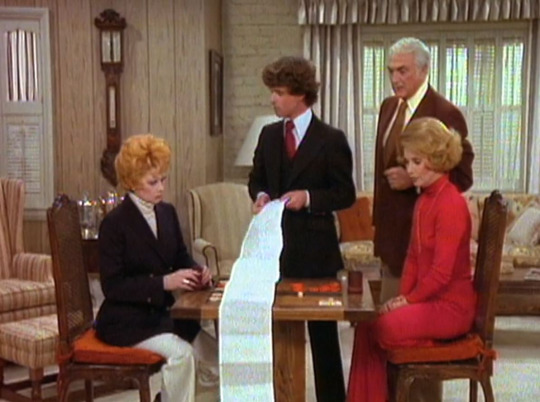
Alda’s final collaboration with Lucille Ball was in 1980′s “Lucy Moves To NBC” special. Alda plays Mickey Ludin, Lucille Ball’s attorney, advising her about signing a contract with the peacock network. He shared his scene with Ruta Lee and Gary Imhoff as Fred Silverman. Coincidentally, Lucy gets a telephone call from Howard McClay, who was the real-life Executive Producer and was also the name of Alda’s character in “Lucy Goes Hawaiian”.
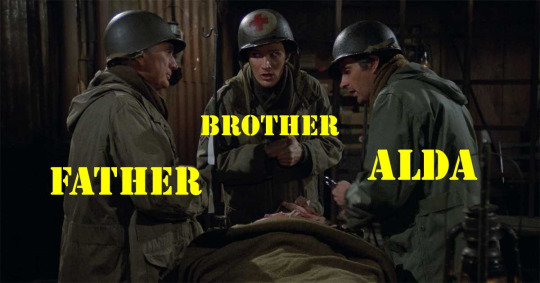
Alda continued acting, notably making two appearances (1975 and 1980) on “M*A*S*H”, the series that starred his real-life sons Alan. In one episode his other son Anthony made it a family affair. Anthony’s mother was Alda’s second wife, Italian actress Flora Marino.
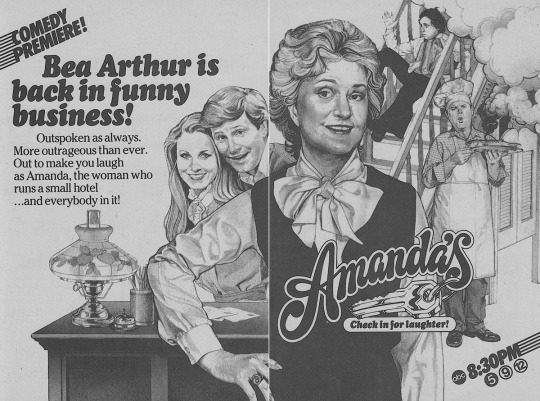
His final screen appearance was on an episode of the Bea Arthur sitcom “Amanda’s Place” (a “Fawlty Towers” inspired failure) in 1983. Alda died on May 3, 1986, aged 72, after a long illness following a stroke.
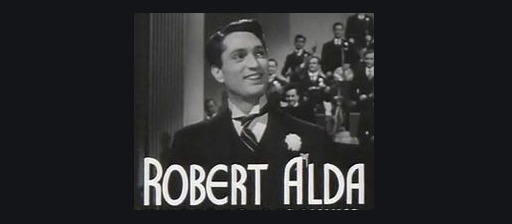
#Robert Alda#Lucille Ball#The Lucy Show#Here's Lucy#Lucy Moves To NBC#Alan Alda#MASH#TV#Guys and Dolls#Broadway#Tony Award#Vivian Vance#Lucie Arnaz#Rhapsody In Blue#Secret File USA#Your Show Time
7 notes
·
View notes
Text
ELLIS IN FREEDOMLAND
Spring 1952

Directed by Abby Berlin Produced by Roland D. Reed Written by Arthur Hoerl Music by Albert Colombo Choreography by Alex Romero
Synopsis ~ A 82 minute, technicolor promotional film for salesmen of Westinghouse appliances, featuring the voices of major Hollywood celebrities. Westinghouse claims its electric appliances "freed women from the drudgery of housework." The first half involves dream salesman Ellis at work; the second focuses on the "Spring Sales Event," called "Freedomland."
Westinghouse Electric Corporation was founded on January 8, 1886 by George Westinghouse (1846–1914). The corporation purchased CBS in 1995.
Live Cast
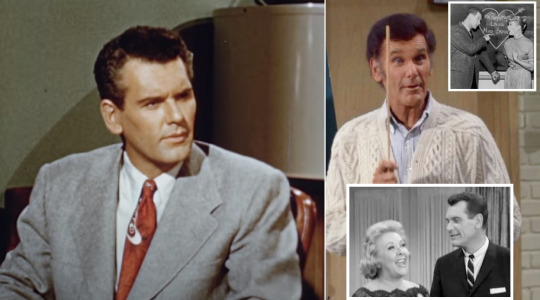
Robert Rockwell (Ellis Homan) is probably best remembered as biology teacher Mr. Boynton on the Desilu series “Our Miss Brooks” (1952-56). Although not the first to play Mr. Boynton, he assumed the role on radio and made the transition with the show to television. He played Viv’s handsome match in “Lucy Digs Up a Date” (TLS S1;E2) the second installment of “The Lucy Show” in 1962. He then played night school teacher Jack Scott in “The Not-So-Popular Mechanics” (HL S5;E23). He continued working until 1995 and died in 2003 at age 82.
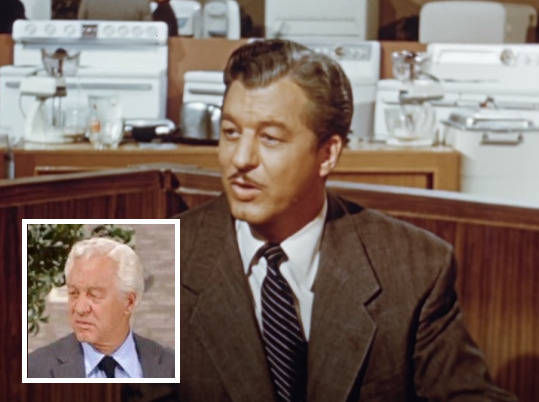
Robert Carson (Phil Pryor, Westinghouse Representative) was a busy Canadian-born character actor who appeared on six episodes of “The Lucy Show” and made five appearance on “Here’s Lucy.”

Byron Foulger (Andy, Night Watchman) played the leader of the Friends of the Friendless in “Lucy’s Last Birthday” (ILL S2;E25). He appeared on “The Lucy Show” in “My Fair Lucy” (TLS S3;E20) and “Lucy Meets the Law” (TLS S5;E19).
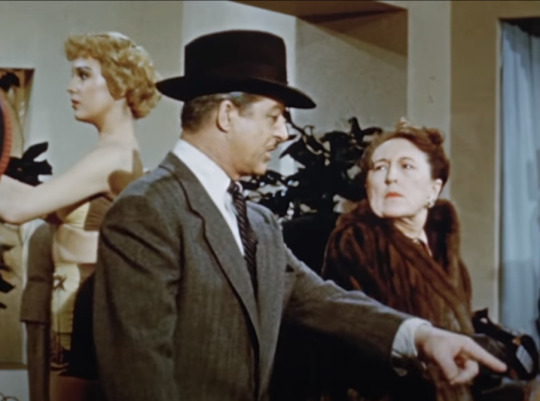
Ann O'Neal (Customer in Mink) appeared in more than 100 films in the 1940s including the Lucille Ball film Lover Come Back (1946).
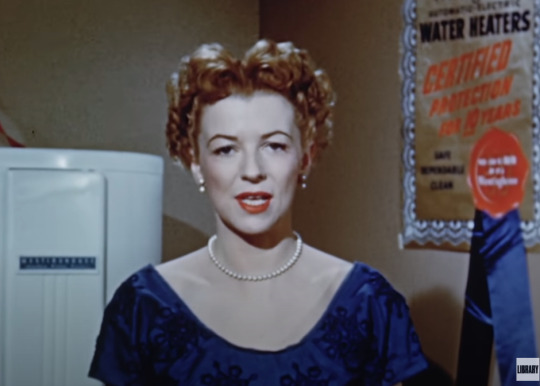
Betty Furness (Herself, Spokeswoman for Westinghouse) was an actress and model who became the face and voice of Westinghouse in many television commercials. When “The Lucy-Desi Comedy Hour” was sponsored by Westinghouse, Furness appeared with Lucille Ball and Desi Arnaz in commercials for their products.
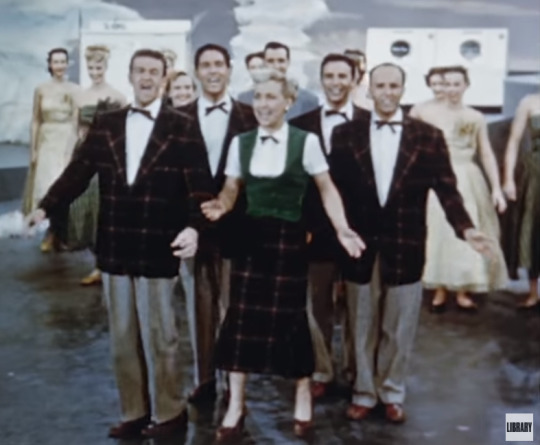
The Starlighters (Vocals) was a singing group that performed mainly as backing vocalists, frequently backing Jo Stafford as well as many other artists on a number of singles. They also performed songs in cartoon and live short films and the feature films Song of Idaho (1948) and With a Song in My Heart (1952).
Voice Cast

Lucille Ball (Lina the Laundromat) was then filming the second half of her first season of “I Love Lucy” playing Lucy Ricardo, although her voice alone was familiar to radio audiences as Liz Cooper in “My Favorite Husband.”
Edward Arnold (Speedy the Range) lends his deep baritone voice to the role. He appeared with Lucille Ball in Roman Scandals (1933) and Ziegfeld Follies (1945). He died in 1956.
James Mason (Frosty the Refrigerator) was a three time Oscar-nominee who appeared as Lucille Ball’s Angel in Forever Darling (1956).
Percy Kilbride (Drip the Dehumidifier) was best remembered as Pa Kettle in a series of films from 1947 to 1954.
Jerry Colonna (Chop-Along Waste-Away the Garbage Disposal) was a comic sidekick of Bob Hope on radio and television. In 1966 he played Smithers, Lucille Ball’s chauffeur on “Bob Hope’s Leading Ladies”.
Andy Devine (Lanky the Water Heater) brought his high-pitched raspy voice to the film. He was known for his many appearances in westerns on both the small and big screen.
Marie Wilson (Dinah the Dryer) is best known for playing the title role in the film and television series “My Friend Irma”. Later in 1952, Wilson and Lucille Ball were both part of “Stars in the Eye” celebrating the opening of CBS Television Center. Coincidentally, Gale Gordon’s mother Gloria was also in “My Friend Irma” and on “The Lucy Show” Mr. Mooney’s off-screen wife was named Irma in her honor.
Maureen O'Sullivan (Pearly the Dishwasher) played Jane in the early Tarzan films. Her career lasted from 1930 to 1994. In 1987, Lucille Ball and O’Sullivan were two of the many stars in “Happy 100th Birthday, Hollywood”.
Mannequins
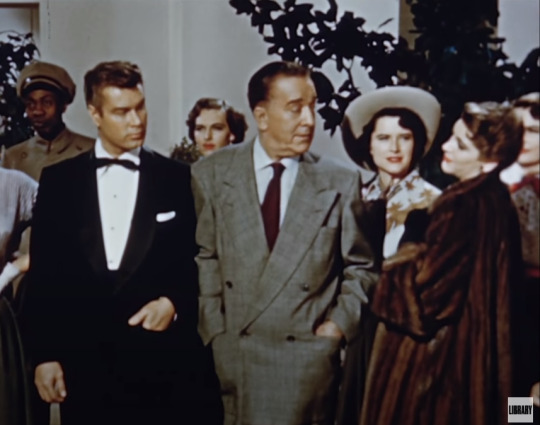
Jack Mulhall appeared with Lucille Ball in Broadway Bill (1934).
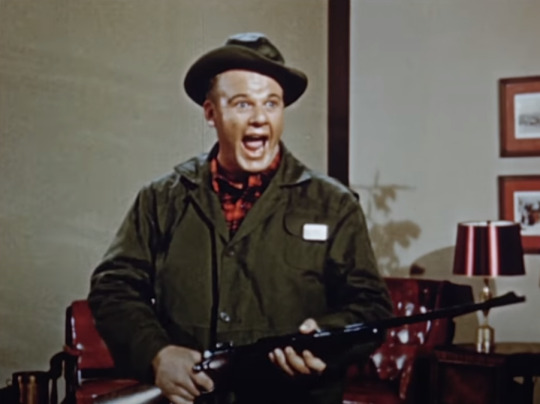
Alan Hale Jr. (Hunter) will forever be remembered as the Skipper on “Gilligan’s Island” but also appeared with Lucille Ball on “The Lucy Show” and “Here’s Lucy”.
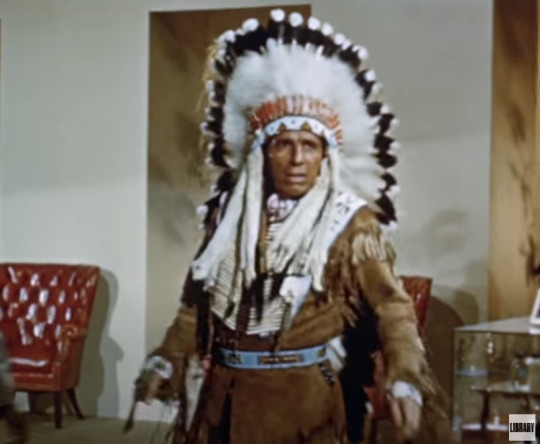
Iron Eyes Cody (Chief Running Water) made a career of playing Native American characters despite the fact that he was of Italian ancestry. He first worked with Lucy and Desi in 1940’s Too Many Girls and 1942’s Valley of the Sun both as an Indian character. He played an Eskimo in a 1959 episode of “The Lucy-Desi Comedy Hour,” but is probably best remembered as the Indian that sheds a single tear in the ‘Keep America Beautiful’ ads that ran from 1971 to the 1980s. He played a Navajo Medicine Man in “Lucy and the Indian Chief” (HL S2;E3).
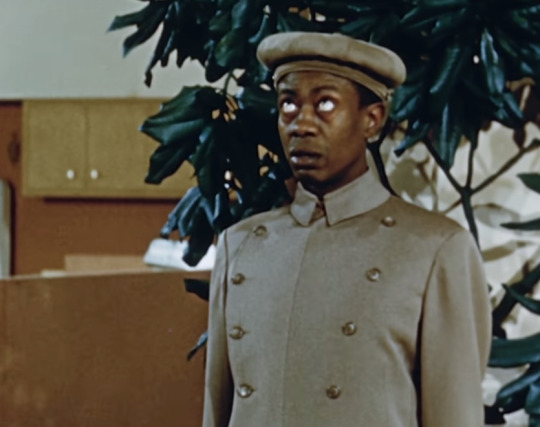
Willie Best (Chauffeur) was one of the most popular African-American actors of Hollywood's Golden Era. He starred alongside some of film's great comedians including the Marx Brothers, Bob Hope, Laurel and Hardy, and three films with Shirley Temple. He did one film with Lucille Ball: Muss ‘em Up (1936).
Karen Sharpe appeared on the “Westinghouse Desilu Playhouse” in 1959.
Mickey Simpson appeared with Lucille Ball in the 1939 film Panama Lady.
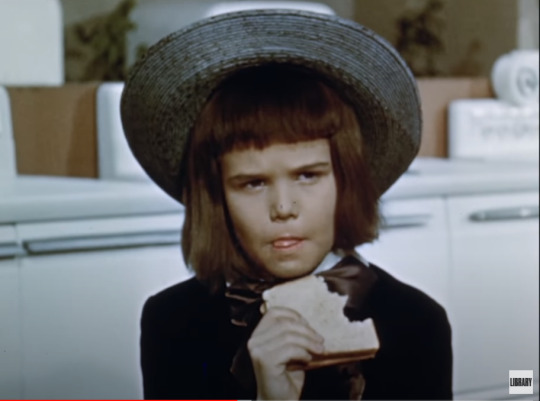
Anthony Sydes (Bobby, the Boy in Buster Brown Outfit) was 8 years old at the time of filming. He left the business in 1958 and died in 2015 at age 74.
With...
Lisa Abbott, Mildred Coles, Richard Crane, Nancy Hadley, Noreen Michaels, Crystal Reeves, Darla Ridgeway, Anne Rubin, Carol Lowe, Frances Zucco
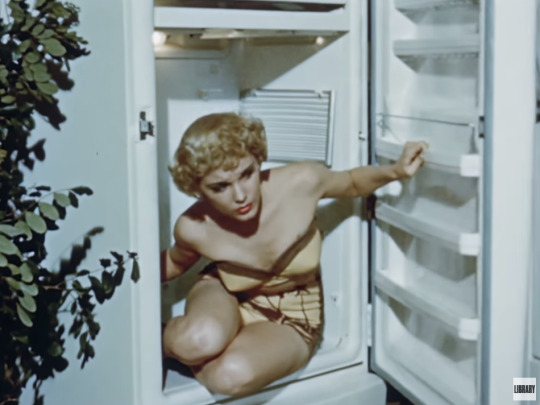
Uncredited Cast
Ralph Brooks (Stove Demonstrator) appeared in four films with Lucille Ball, as well as “The Lucy-Desi Milton Berle Special” and “Lucy Goes to Las Vegas” (TLS S3;E17).
Sam Harris (Showroom Guest) did a dozen films with Lucille Ball before appearing in the audience of Over the Teacups in “Ethel’s Birthday” (ILL S4;E8) and playing a subway passenger in “Lucy and the Loving Cup” (ILL S6;E12). In between, he was a wedding guest in Lucy and Desi’s film Forever Darling (1956). Along with Monty O'Grady and Murray Pollack, he was in the airport when “The Ricardos Go to Japan” in 1959.
Stuart Holmes (Showroom Guest) appeared with Lucille Ball in Lover Come Back (1946) and Critic’s Choice (1963).
Hans Moebus (Washer / Dryer Demonstrator) appeared as an uncredited background performer in hundreds of movies and TV shows, including the Lucille Ball films DuBarry Was a Lady (1943), A Woman of Distinction (1950) and The Facts of Life (1960). He was seen on the dock during the “I Love Lucy” episode “Bon Voyage” (ILL S5;E13) and part of the riverboat chorus in “Lucy Meets Arthur Godfrey” (TLS S3;E23).
Charles Sherlock (Television Viewer) appeared in three feature films with Lucille Ball from 1935 to 1963.
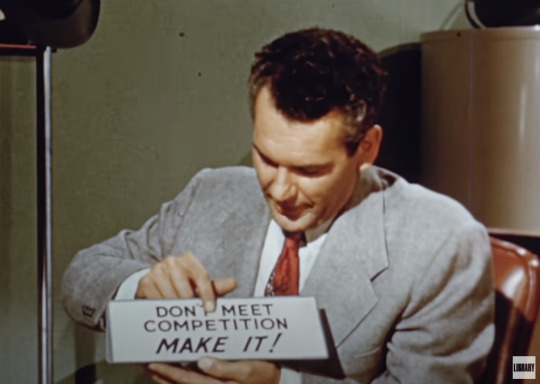
PART ONE - DON’T MEET COMPETITION, MAKE IT!
Westinghouse Rep Phil Pryer meets salesman Ellis Homan at his office on the department store showroom. Ellis tells Phil about the time he dozed off at his desk and the mannequins came to life: menswear, formal wear, beach wear, and (inexplicably) an American Indian in full regalia. Frosty the Refrigerator (James Mason) gets Ellis’ attention to demonstrate his frost-free features, as well as his unique butter tray and meat keeper.
Ellis then has a conversation with Speedy the Electric Range (Edward Arnold) about all its features. Ellis even makes coffee and cookies for Mabel, a mannequin standing in for a ‘prospect’.
MABEL: “Ellis, you’re cute. I wish you were a dummy.”
Ellis then has a chat with Pearly the Dishwasher (Maureen O’Sullivan) and Chop-Along Waste-Away the Garbage Disposal (Jerry Colonna), who sings during his demonstration.
Lanky the Water Heater (Andy Devine) is upset because no one pays him much attention. Pearly draws Ellis’s attention to the drip who has shown up in the showroom lately, the Dehumidifier (Percy Kilbride) who promises to rid homes of damaging dampness.
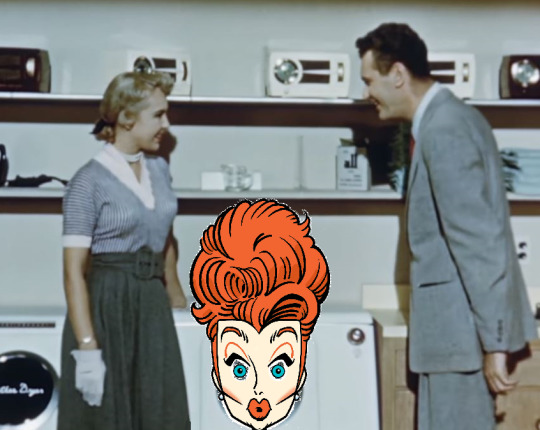
Chiming in (literally) Lina the Laundromat (Lucille Ball) and Dinah the Dryer (Marie Wilson) sing their greeting. Known as ‘The Westinghouse Twins’, they often finish each others’ sentences and speak at the same time - all in aid of showing that they are a perfect freedom-fighting duo in a home. Ellis demonstrates a typical wash cycle.
PART TWO - FREEDOM FAIR
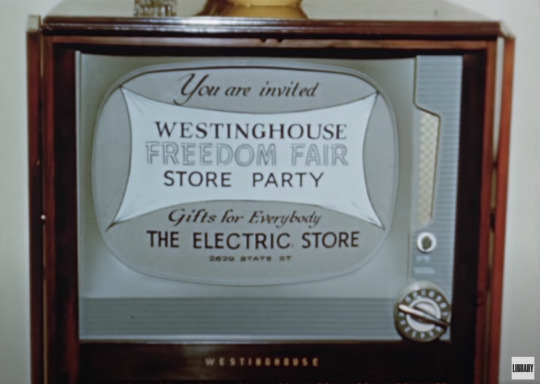
Back in the present, Phil tells Ellis that Westinghouse is sponsoring radio and television coverage of the summer’s 1952 Republican and Democratic conventions, with ‘Get Out the Vote’ programs to follow. In the meantime, Phil tells Ellis about the big Spring Selling Event - Freedom Fair. The event will be rolled out in the April 11, 1952 issue of Life Magazine and the April 16, 1952 issue of the Saturday Evening Post. On television, it will be announced by Betty Furness on “Studio One”.
After Phil leaves, the scene changes to a typical suburban couple’s bedroom where the morning alarm has just gone off. The bedraggled housewife dances through the home trying to get ready for the day ahead - despite the fact that she does not have any time-saving Westinghouse electric appliances. As the harried husband downs a quick cup of coffee and dashes off to work, the song begins (with offscreen vocals by the Starlighters) and the frustrated housewife realizes just how much work she has ahead of her to clean her home. Just then an ethereal voice sings the name “Westinghouse! Westinghouse!” and there is suddenly a handsome young salesman ringing her doorbell. He sings:
“They say that Lincoln freed the slaves, With that I disagree. Women have been slaves for years Till Westinghouse set them free!”
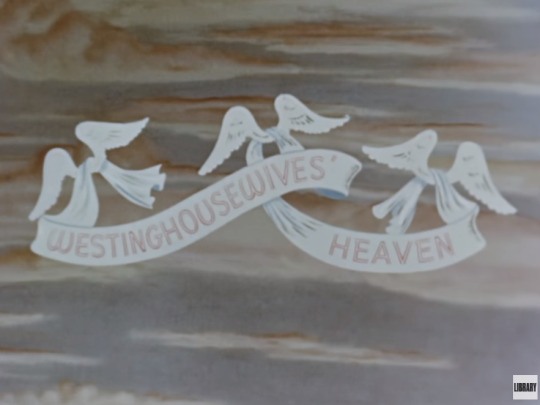
He whisks her away to ‘Westinghousewives’ Heaven’ where all the products we previously saw demonstrated are extolled in joyous song, some even have angel wings! The housewife (still in her curlers and pajamas) ducks behind a cloud and is suddenly revealed in a diaphanous white gown complete with apron! Amid a large group of ballet dancers, the Westinghousewife and Salesman dance in blissful happiness.
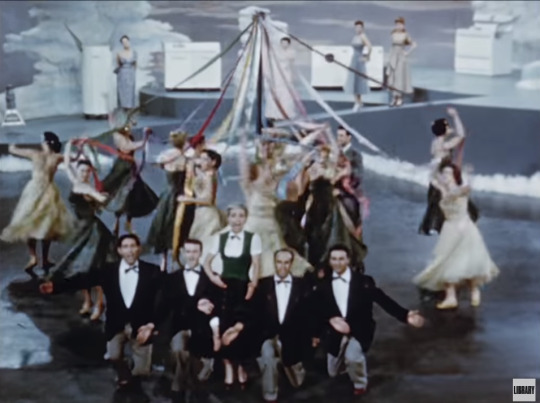
At the last moment the Starlighters appear and sing to us about Westinghouse, while the dancers swirl merrily around the May Pole!
Stereotypes
This film is obviously aimed at a male sales force. All the ‘prospects’ are assumed to be female and referred to in such terms as “the little lady”. The female mannequins are only interested in Ellis as romantic partners. Clearly, housewives were the main target of male salesmen.
The film also presents a stereotypical black chauffeur, the only person of color in the cast. The actor is asked to pull comical faces that make him appear silly - the source of humor
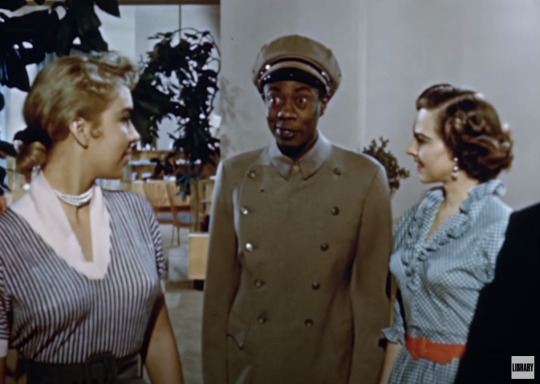
“Mmmm. There’s gonna be a watermelon missin’, ‘round here.”
Needless to say, that an American Indian chasing a scantily clad Caucasian woman around the store plays on stereotypical images of predatory Native Americans. The actor playing the Chief is Iron Eyes Cody, who, despite his name, was born Espera Oscar de Corti, an Italian-American. When trying to communicate all he says is “Ugg!”
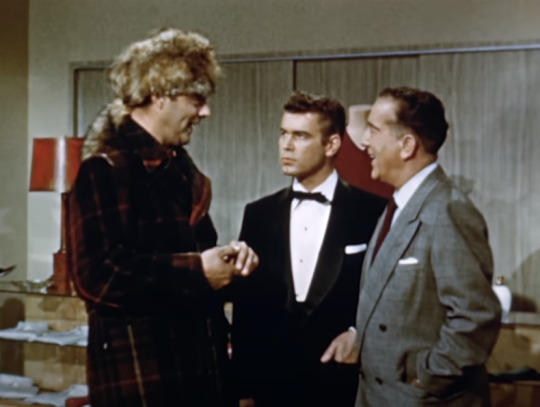
Homosexuals don’t escape either. A man with an effeminate manner and lisping voice wearing a coonskin cap swishes in to say “Hello, Fellas” with a toss of the raccoon tail he swans off. The two men in suits look uncomfortable and deny knowing him.
Voice casting reflects gender stereotypes of the time. Cooling and heating appliances are voiced by men while washing appliances are voiced by women.
Trivia
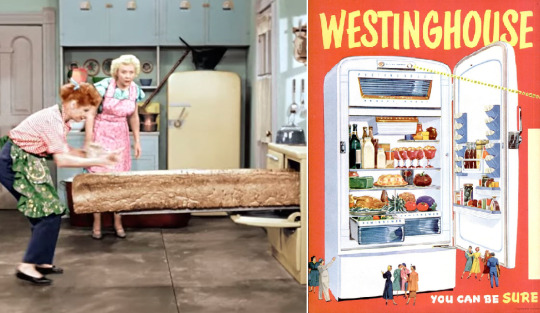
Lucille Ball’s participation in this film may have influenced or been influenced by the fact that for the first season of “I Love Lucy” Lucy Ricardo had a 1951 Westinghouse Frost-Free refrigerator in her kitchen - very similar to “Frosty” - the model shown here in the film. It was widely promoted in print publications and on TV during 1951. Previously, the freezer cabinet had to be thawed manually when frost and ice built up in and around it.
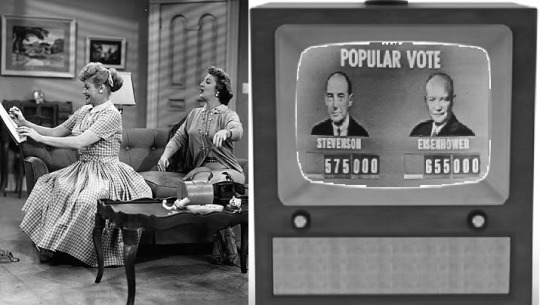
LUCY: “Didn’t you watch the conventions on television?”
Phil tells Ellis that Westinghouse will take out extensive advertising on radio and TV during the Conventions. In July 1952 both the Republican and Democratic National Conventions were televised live from Chicago. Although the conventions were also televised in 1948, few Americans owned a TV set to watch them. This time, an estimated 70 million voters watched the broadcasts, which ended with the nominations of Adlai Stevenson II and Dwight D. Eisenhower. There is a popular myth that Stevenson lost the election because of backlash from interrupting airings of “I Love Lucy” with hour-long campaign ads. Perhaps from Westinghouse? The conventions were mentioned on “I Love Lucy” (appropriately) in “The Club Election” (ILL S2;E19) which aired in February 1953. However, it was filmed in September 1952, when the reference would have been much more timely. By the time it eventually aired, Eisenhower had been inaugurated and the conventions were a distant memory.
Distribution: Who Saw It - The film series reached 25,000 dealers in 75 cities in a single week. Released in Technicolor and in 16mm. Longest of four dealer promotion films in a two-hour series produced to promote Westinghouse home appliances.
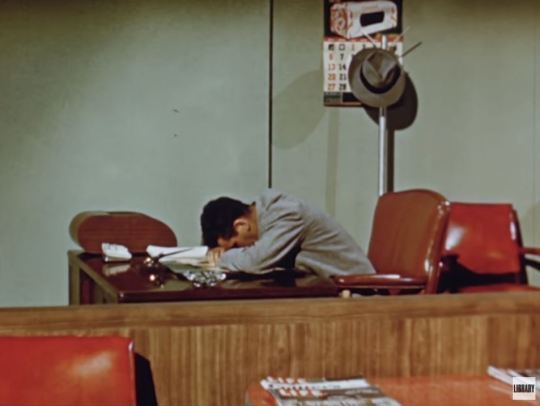
The wall calendar above Ellis’s desk matches the calendar for January 1952, which was likely the filming date. The calendar depicts a loaf of bread with the brand name redacted for filming. On the table close to the bottom of the frame are copies of Life Magazine. Later on, Ellis makes instant coffee from a jar labeled Maxwell House Coffee, although the dish washing detergent and the food in the fridge are obviously props with no brand identification. The laundry soap, however, is clearly labelled ‘All’ but is not in their usual bright colored packaging.
Blooper Alerts!
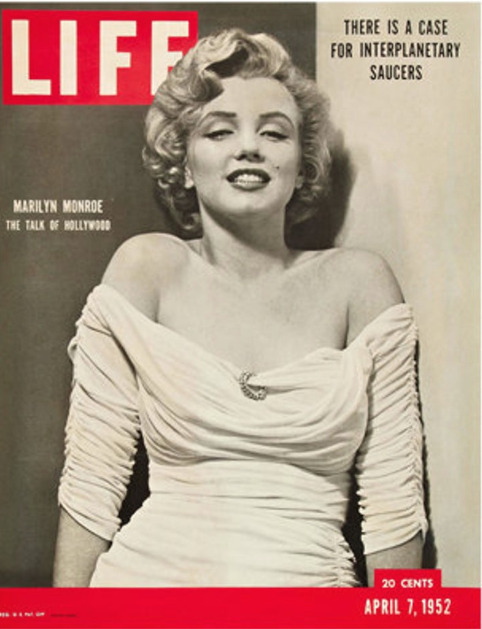

Dates! Phil tells Ellis that Freedom Fair will be announced in the April 11 issue of Life. However, the issue is actually dated April 7, 1952, not April 11. Interestingly, copies of Life Magazine are used as set decoration in Ellis’s office. Similarly, the April 16 edition of the Saturday Evening Post is really dated April 12.
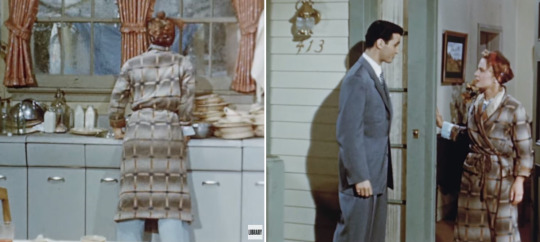
Weather Forecast! The put-upon housewife at the end of the film realizes her wash is still on the line when there is a sudden cloudburst (she does not own an electric dryer). The next moment, she answers the door to the Westinghouse Salesman and it is a clear day. Not really a blooper, just an indication that Westinghouse makes a rainy day into a sunny one - at least in the movies!
Fast Forward!

“Westinghouse Desilu Playhouse” was a television anthology series produced by Desilu Productions. The show ran on CBS between 1958 and 1960. Two of its 48 episodes served as pilots for the 1950s television series “The Twilight Zone” and “The Untouchables.” It also presented 11 of the 13 episodes of “The Lucy-Desi Comedy Hour” after its initial sponsorship by Ford.
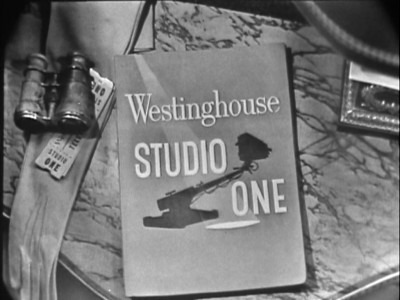
In joining forces with Desilu, Westinghouse canceled their other anthology series “Studio One” which ran on CBS from 1948 to 1958.
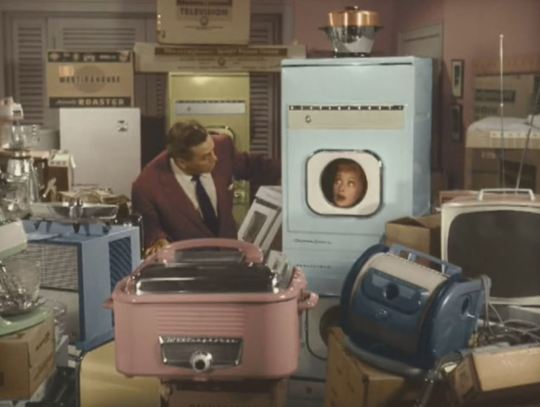
To kick off the partnership between Desilu and Westinghouse, a similar film (informally titled “Lucy Buys Westinghouse”) was produced which depicted Lucy and Desi giving a Westinghouse Executive a tour of their studio, formerly RKO. All through the tour, much to the dismay of Desi, Lucy is trying to order appliances for her dressing room from the executive! At the end, Lucy appears inside a Westinghouse dryer - hiding from Desi! Like Ellis in Freedomland, this film was only shown to Westinghouse employees. Unlike Ellis, it was filmed in black and white - only later colorized for home video. Throughout the film, Desi mispronounces the company’s name as “Westin-Gouse” and its spokesperson as Betty “Furnace”.
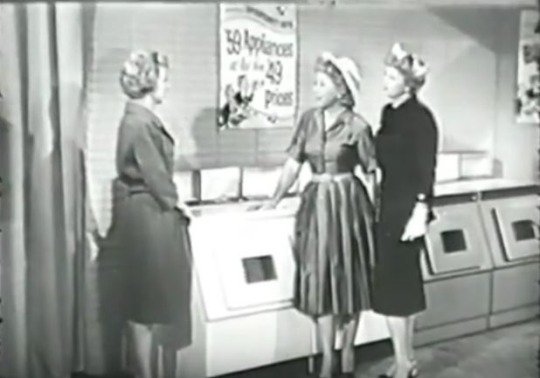
During that time, the cast often did long-form commercials for Westinghouse. Here, Betty Furness and Vivian Vance join Lucille Ball to talk about the 1959 Westinghouse washing machine, the same type of appliance Ball voiced in this film seven years earlier.
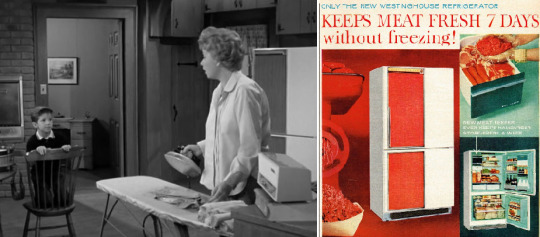
Naturally, during this period Lucy Ricardo had the most up-to-date Westinghouse appliances in her Westport home. Like this two-toned refrigerator and freezer.
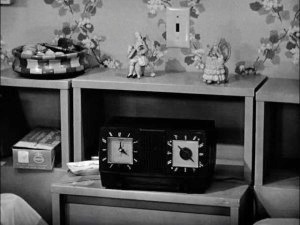
Back in New York City, the Ricardos owned a Westinghouse Clock Radio!
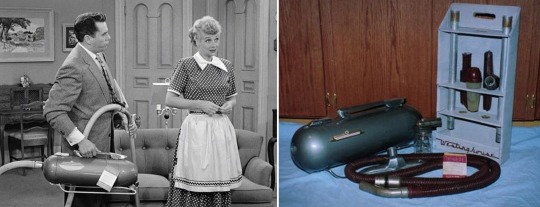
The Handy Dandy vacuum cleaner was actually a Westinghouse model!
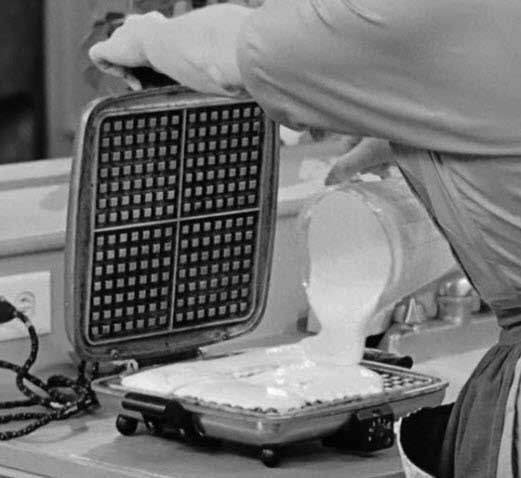
In 1954, Lucy made breakfast with her Westinghouse "Grill-n-Waffler" Waffle Iron - if only she can remember to pay the electricity bill, that is!
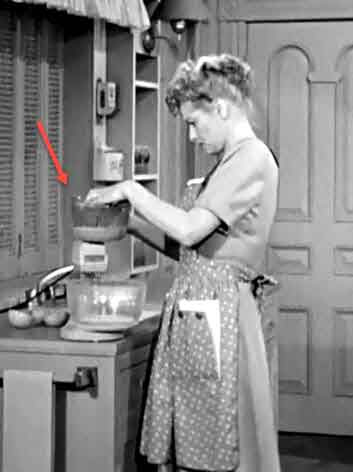
Lucy squeezes oranges for juice with her Westinghouse Model #FM-511 Food Crafter with juicer attachment (sold separately).
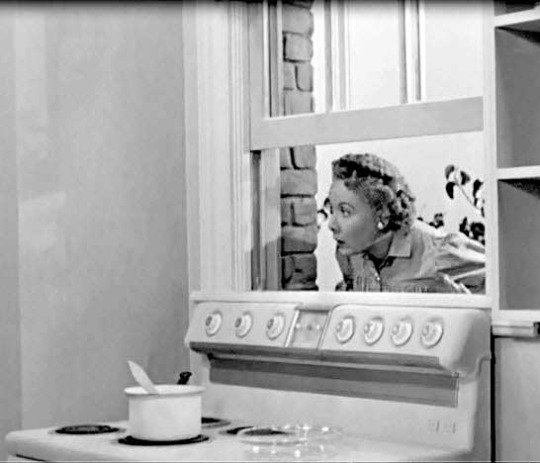
Lucy owned two different models of the Westinghouse Commander Super-Corox Range. This 1950 model was used during season one...
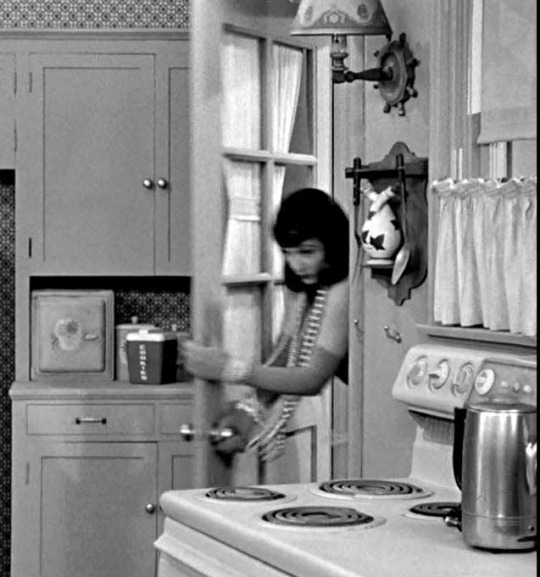
...and this 1954 Model on a later season. It looks similar to the 1950 model, but the controls have a different layout.
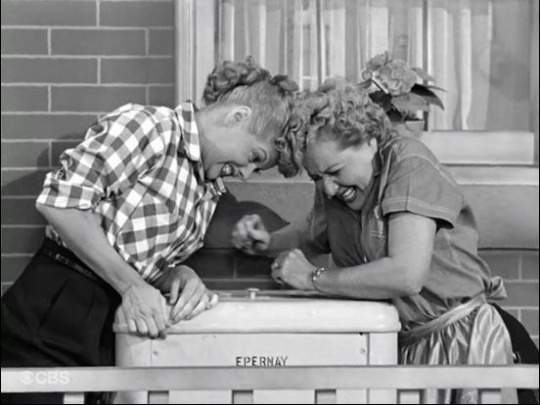
In 1953, ownership of a washing machine was a point of contention between the Ricardos and Mertzes. The appliance used in the episode is labeled Epernay (a fictional brand). In actuality, it is probably a Launderall Horton 500 with gas stove handles affixed to the sides to help move it back and forth on the narrow porch.
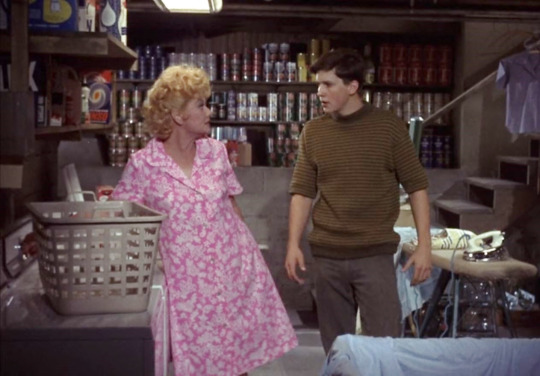
Lucy uses the washing machine (a lot!) in Yours, Mine and Ours (1968). It is impossible to see what brand it is.
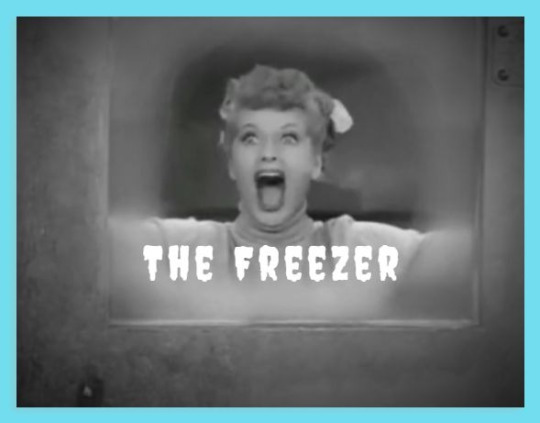
Coincidentally, in April 1952, “I Love Lucy” did an episode titled “The Freezer” (ILL S1;E29) where Lucy and Ethel want to buy a home freezer to economize, but end up buying a walk-in model instead. In Jess Oppenheimer’s book, he states that newspapers and magazines were full of ads for home freezers at the time. Once they came up with the idea of Lucy getting trapped in the freezer, they had to abandon the home freezer idea for a larger, walk-in model.
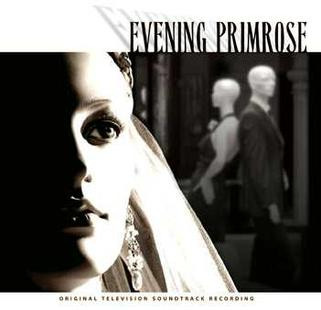
In 1966, a TV musical titled “Evening Primrose” with music by Stephen Sondheim and a book by George Furth, also explored the idea of department store mannequins coming to life. Anthony Perkins starred.
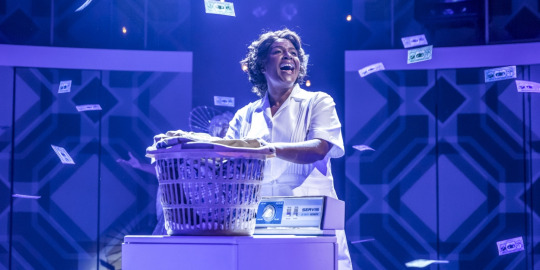
The idea of anthropomorphized laundry room appliances was also explored in the 2004 Broadway musical Caroline, or Change, in which actors played embodiment of the Washing Machine and the Dryer. A revival of the musical was on track for Broadway but interrupted by the Corona Virus pandemic.
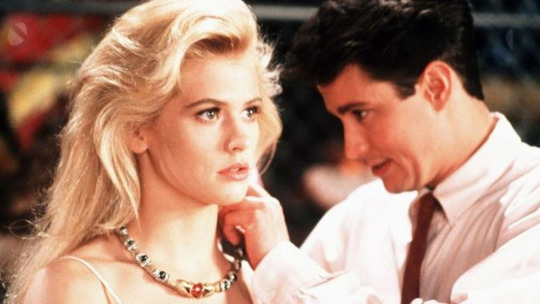
In 1987, the film Mannequin starring Andrew McCarthy and Kim Cattrall also explored the idea of department store mannequin coming to life. It was partly based on the 1948 film One Touch of Venus, although in that film, the mannequin was a statue.
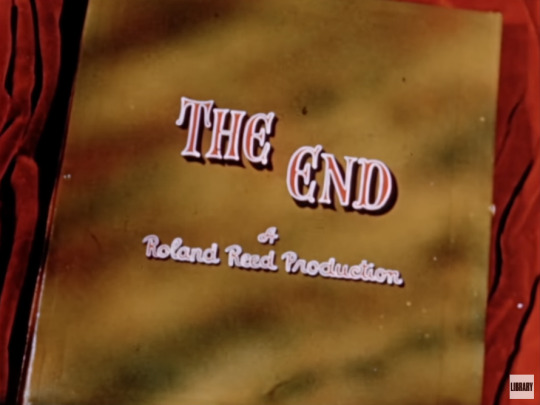
#Westinghouse#Lucille Ball#1952#I Love Lucy#Maureen O'Sullivan#Percy Kilbride#Jerry Colonna#Alan Hale Jr.#Alan Hale#Ellis in Freedomland#Edward Arnold#James Mason#Andy Devine#Vivian Vance#Marie Wilson#Betty Furness#Robert Rockwell#Robert Carson#Byron Foulger#Iron Eyes Cody#Willie Best
9 notes
·
View notes
Text
PERSEVERENCE
June 20, 1943
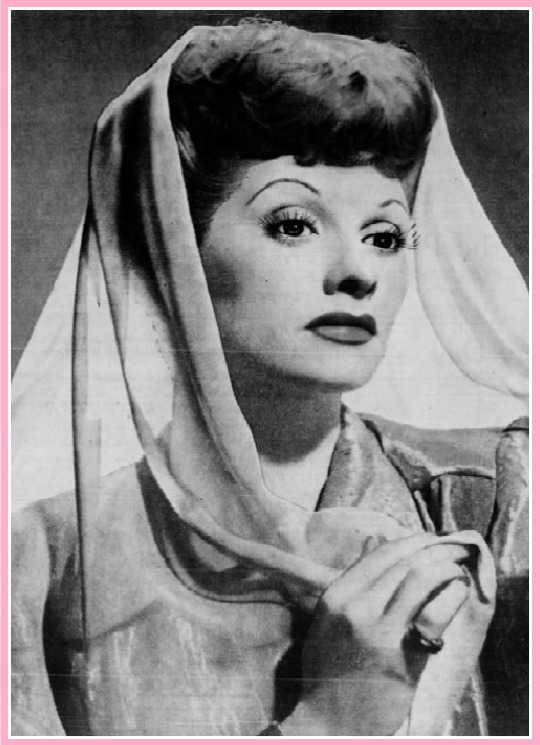
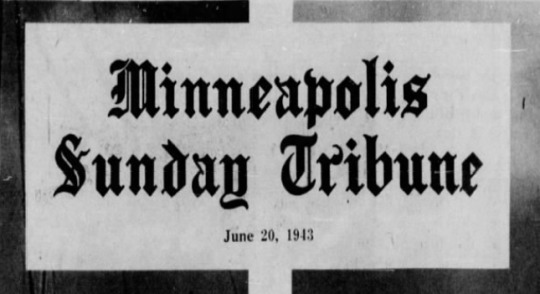

THE FEMININE STAR of the big musical, "Du Barry Was a Lady," is a girl who survived the acid test of repeated hard sledding.
Theatrical success didn't come to Lucille Ball the way it arrives for lots of fictional heroines of Hollywood movies. She battled every inch of the way, hanging on in the face of discouragements that would have sent the vast percentage of young hopefuls back home.
Home in Miss Ball's case was Jamestown, N.Y. She was born in Butte, Mont., where her father was an electrical engineer, but the family moved to central New York when Lucille and her brother Fred were in their early school years. (1)
Mrs. Ball was a concert pianist and hoped that Lucille might follow a musical career, Lucille, however, was fascinated by the stage.
After a year and a half of dramatic school in New York, she found a job with a traveling stock troupe. This was good experience and led, indirectly, to an audition with Florenz Ziegfeld, who was casting for "Rio Rita."
A friend of Ziegfeld had seen the vivacious and shapely Miss Ball in a small stock role and recommended her for the new show. Ziegfeld approved. The new part was just a chorus job but at least it meant Broadway.
After “Rio Rita” Miss Ball found herself up against a long hard pull. She admits that for weeks on end she skipped more meals than she obtained.
Twice she got chances with new shows, but no salaries were paid till after five weeks of rehearsals and she just couldn't hold out that length of time.
Then she would get a job as a model and when she had saved up a little, money she would make the rounds of the producers' offices again. She had a hall room, fifth floor back, and cooked over a gas jet while keeping a wary eye open for the landlady.
But a diet of canned soup soon lost Its appeal and after repeating this routine several limes she decided to confine herself to modelling and really learn the business.
She became one of Hattie Carnegie's star models, then her career seemed definitely finished through a blow delivered by fate. A car in which she was riding skidded on icy pavement and she was thrown to the street.
HER BACK WAS INJURED AND DOCTORS SAID SHE WOULD NEVER WALK AGAIN.
Later they said she might regain the use of her limbs in six years but through sheer, dogged determination she shortened this time to a little more than three and one-half years. After many months of hospitalization her mother took her home to Jamestown.
"I think my most vivid recollection of the experience," Lucille says, "was the dread I had of being taken through Grand Central station in a wheelchair when I was taken home. I didn't want people to pity me."
Many months of faithful attention to exercising and therapeutic treatments followed. Lucille was determined to walk again. Even now her mother tells of healing Lucille get out of her wheelchair in her upstairs bedroom, attempt to walk and fall to the floor with a heart-breaking crash. BUT HER GRIT WON OUT.
Resuming work as a Carnegie model, she posed for many of the country's leading commercial photographers on the side. She attracted widespread attention as the girl on a cigarette ad.
One day she was feeling rather glum after a disagreement with her boyfriend when she encountered an agent she knew. The agent asked if she would like to go to Hollywood and she immediately sold yes.
That was in 1933 and Lucille has been in pictures ever since, with the exception of eight weeks in 1938 when she played a featured role in "Hey Diddle Diddle" on Broadway.
RETURNING TO HOLLYWOOD following her success in this musical (2), she found herself definitely established as a clever comedienne in "Stage Door."
During the filming of "Too Many Girls," in which both appeared, Lucille met Desi Arnaz, then a young Cuban band leader and singer.
They were married in Greenwich, Conn., on November 30, 1940.
# # #
FOOTNOTES FROM THE FUTURE (1) Again, the timeline of Lucille’s birth has been altered to insist that she was born in Butte. After being born in Jamestown, the Ball family did hit the road for parts west, including Montana, but young Lucille and her mother did not return to Jamestown until after the death of Lucy’s father. Her brother Fred was born after their return to New York.
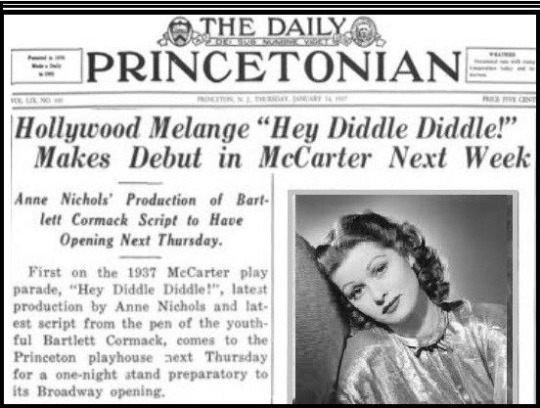
(2) Ball was cast in the Broadway-bound play (it was not a musical) Hey Diddle Diddle in early 1937 (not 1938). It opened in Princeton NJ and played a couple of other out-of-town engagements before it was to open in New York, but the play never got to Broadway due to the serious illness of its leading man, Conway Tearle. It would take Ball until December 1960 to perform on Broadway with the musical Wildcat.
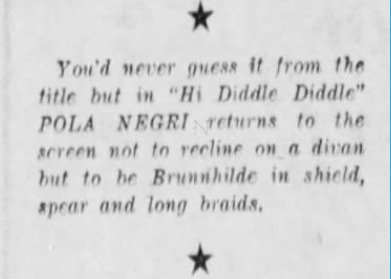
On the very same page as this article about Lucille Ball, was an item about the film Hi Diddle Diddle (not Hey Diddle Diddle) starring Pola Negri. The 1943 film was not associated with Lucille Ball’s failed Broadway-bound play. The film also featured future “I Love Lucy” players Chick Chandler (Billy Hackett), Byron Foulger (Friend of the Friendless), and background players Bess Flowers, Jack Chefe, Don Brody, Mike Lally, Hans Moebus, and Harold Miller.
0 notes
Text
LUCY GIVES EDDIE ALBERT THE OLD SONG AND DANCE
S6;E6 ~ October 15, 1973
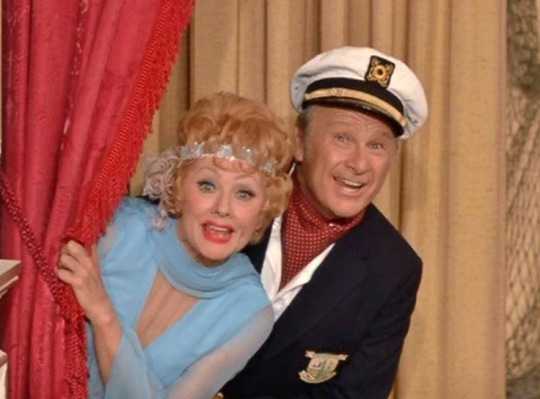
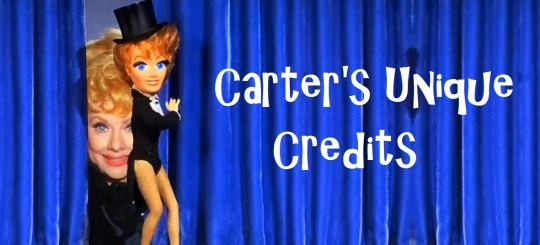
Directed by Coby Ruskin ~ Written by Bob Carroll Jr. and Madelyn Davis
Synopsis
When producing a charity show, Lucy asks Eddie Albert to star in it. At the same time, a woman meeting Lucy’s description has been stalking Albert.
Regular Cast
Lucille Ball (Lucy Carter), Gale Gordon (Harrison Otis Carter)
Lucie Arnaz (Kim Carter) does not appear in this episode, nor does she receive credit in the opening titles. Despite her absence, the final credits do state “Lucie Arnaz Wardrobe by Alroe.”
Guest Cast
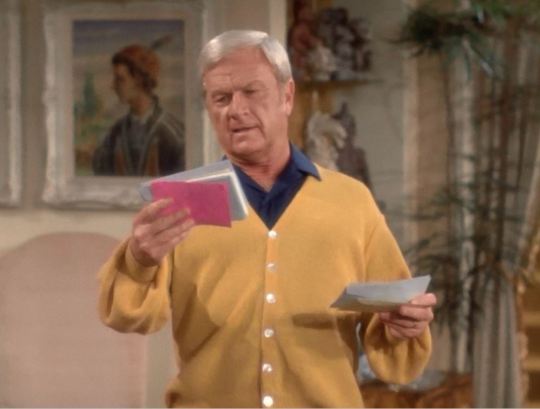
Eddie Albert (Himself) began his TV career years before electronic television was introduced to the public. In June of 1936 Eddie appeared in RCA’s first private live performance for their radio licensees in New York City, a very early experimental television system. He first worked with Lucille Ball in the 1950 movie The Fuller Brush Girl. Today he is perhaps best known for playing lawyer turned farmer Oliver Douglas on CBS’s “Green Acres” (1965-71). He was nominated for two Oscars as Supporting Actor, in 1954 for Roman Holiday and 1972 for The Heartbreak Kid. He died in 2005 at age 99.
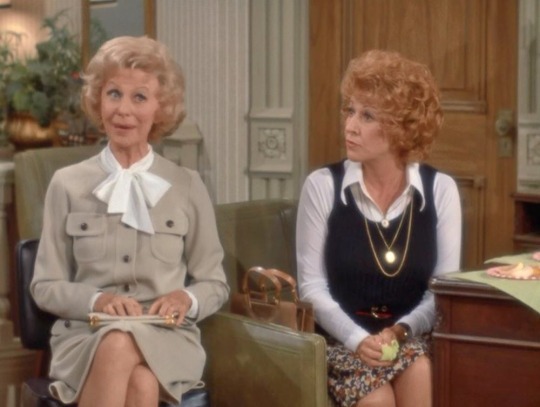
Mary Jane Croft (Mary Jane Lewis, left) played Betty Ramsey during season six of “I Love Lucy. ” She also played Cynthia Harcourt in “Lucy is Envious” (ILL S3;E23) and Evelyn Bigsby in “Return Home from Europe” (ILL S5;E26). She played Audrey Simmons on “The Lucy Show” but when Lucy Carmichael moved to California, she played Mary Jane Lewis, the actor’s married name and the same one she uses on all 31 of her episodes of “Here’s Lucy. Her final acting credit was playing Midge Bowser on “Lucy Calls the President” (1977). She died in 1999 at the age of 83.
Vanda Barra (Vanda Barra, right) makes one of over two dozen appearances on “Here’s Lucy” as well as appearing in Ball’s two 1975 TV movies “Lucy Gets Lucky” and “Three for Two”. She was seen in half a dozen episodes of “The Lucy Show.” Barra was Lucille Ball’s cousin-in-law by marriage to Sid Gould.
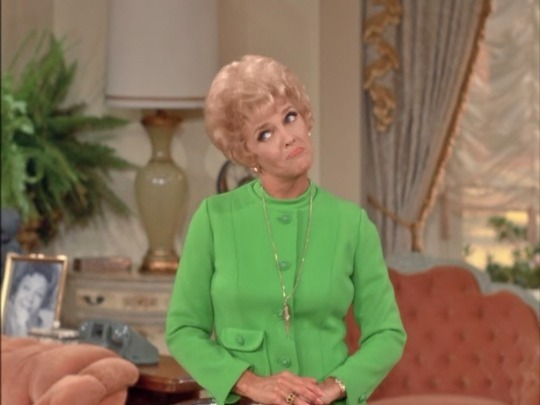
Doris Singleton (Patty) created the role of Caroline Appleby on “I Love Lucy,” although she was known as Lillian Appleby in the first of her ten appearances. She made two appearances on “The Lucy Show.” This is the second of her four appearances on “Here’s Lucy.” She was originally intended to be a series regular but was written out after the first episode.
The character’s name is not used in the dialogue but is listed in the final credits.
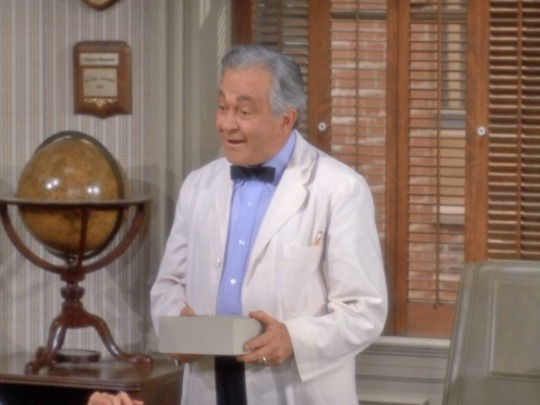
Jerry Hausner (Jimmy) was featured as Jerry, Ricky’s agent in the pilot and first three seasons of “I Love Lucy.” He left the show after a disagreement with Desi Arnaz. He returned to work with Lucille Ball in “Lucy is a Soda Jerk” (TLS S1;E23), shortly after Desi Arnaz resigned as Executive Producer and President of Desilu. This is is his only “Here’s Lucy” appearance and his last time on screen with Lucille Ball. He was seen in three episodes of “Green Acres” with Eddie Albert.
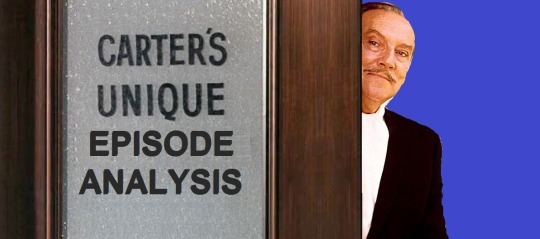
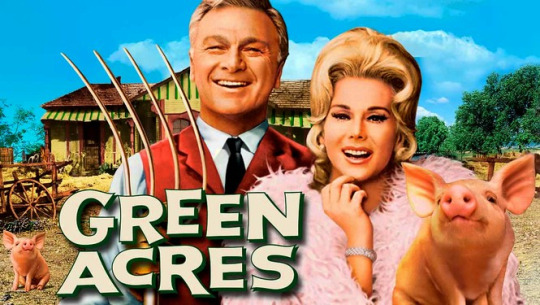
“Green Acres” is mentioned in the dialogue of the episode. Eddie Albert’s co-star on “Green Acres,” Eva Gabor, guest-starred in two episodes of “Here’s Lucy.” Many other “Lucy” actors appeared in Hooterville. Among them, Barbara Pepper (30 episodes), Eleanor Audley (19 episodes), Robert Foulk (16 episodes), Jonathan Hole (7 episodes), Shirley Mitchell (4 episodes), Parley Baer (4 episodes), Jerry Hausner (3 episodes), Jesse White (2 episodes), John J. Fox (2 episodes), Roy Roberts (2 episodes), Maurice Marsac, Lou Krugman, Bob Jellison, Norman Leavitt, Romo Vincent, Elvia Allman, Gail Bonney, Ray Kellogg, Irwin Charone, Bernie Kopell, Charles Lane, Alan Hale Jr., Robert Carson, Jerome Cowan, William Lanteau, Paul Bradley, Leoda Richards, Hans Moebus, and Rich Little.
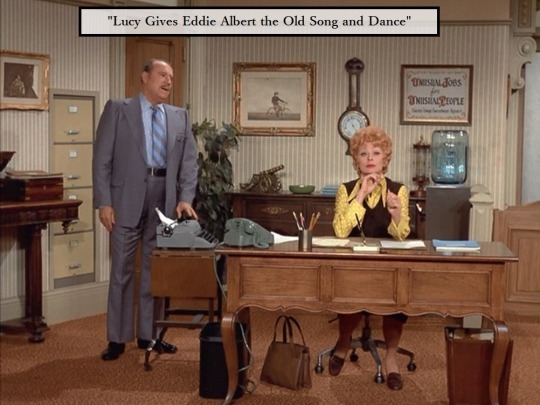
An office scene between Lucy and Harry was originally written for “Lucy, the Peacemaker” (S5;E3) but deleted for time. It was re-staged for this episode.
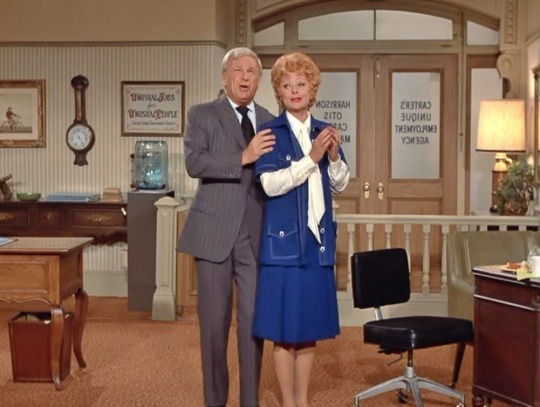
Lucille begins to wear longer wigs again after having worn shorter styles earlier in the season.
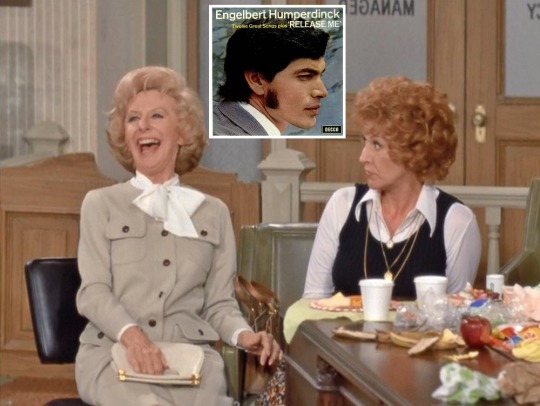
Lucy, Mary Jane, and Vanda are having a lunch meeting to plan their annual “Girl Friday Follies,” a show that raises money to send underprivileged kids to camp. Taking Lucy’s suggestion to find a “big name”, Mary Jane suggests Engelbert Humperdinck – the ‘biggest’ name she’s ever heard. The English singing sensation was previously mentioned on “Lucy and Liberace” (S2;E16) and “Lucy and Ann-Margret” (S2;E20) where Lucy mispronounced his name as 'Pumpernickel’ and 'Dumperhink.’
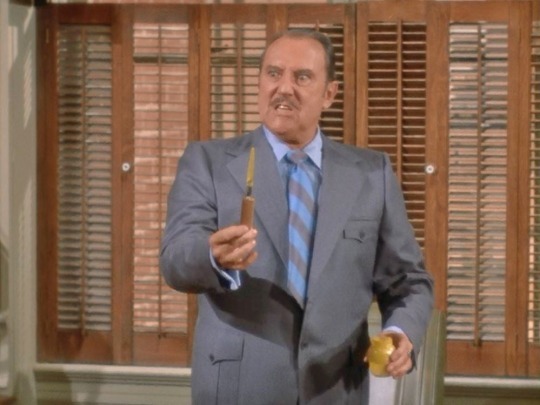
Looking at his desk, littered with food items from the girls’ lunch, Harry laments that he “missed the Iowa State Picnic.” The Iowa State Picnic is an annual event that started in 1900 and was held in Long Beach, California, which was nicknamed “Iowa by the Sea.” They were attended by Iowans who had transplanted to the area in order to share their common roots. With attendance dwindling, in 2014 the picnic moved from Long Beach to San Pedro where the USS Iowa is docked.
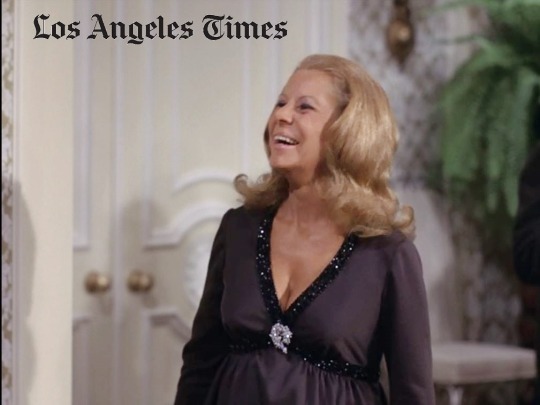
To find a star, Lucy looks at Joyce Haber’s column in the newspaper. Joyce Haber was the gossip columnist of the Los Angeles Times. She made an appearance (above) as a member of the Hollywood Press when “Lucy Meets the Burtons” (S3;E1) in 1970.
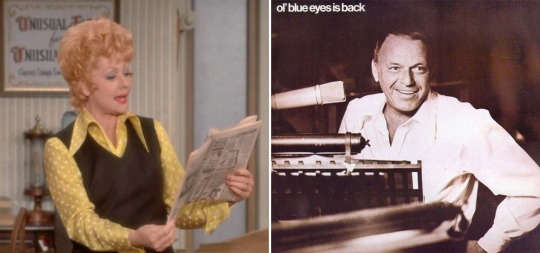
Haber’s column mentions that Frank Sinatra is coming out of retirement. In 1970, the singer went into a self-imposed retirement that lasted until 1973 with the release of the album “Ol’ Blue Eyes is Back.” Sinatra was first mentioned on “I Love Lucy” in 1955 and his named has been dropped on both “The Lucy Show” and “Here’s Lucy.” Sinatra inadvertently appeared on “I Love Lucy” when a clip of him in the film Guys and Dolls was inserted into the MGM Executives Show in “Lucy and the Dummy” (ILL S5;E3) when it was running short. The clip has since been removed and has never been seen in the context of the episode after its initial broadcast.
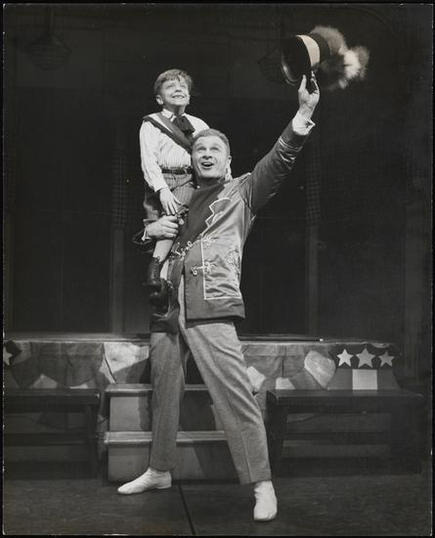
Lucy says she saw Eddie Albert in The Music Man. In 1959, Albert replaced Robert Preston in the Broadway production of The Music Man. Coincidentally, the show’s author Meredith Willson was from Iowa, where the musical is set, and attended the 1959 Iowa State Picnic to lead the Long Beach Band playing the show’s rousing anthem “76 Trombones.”
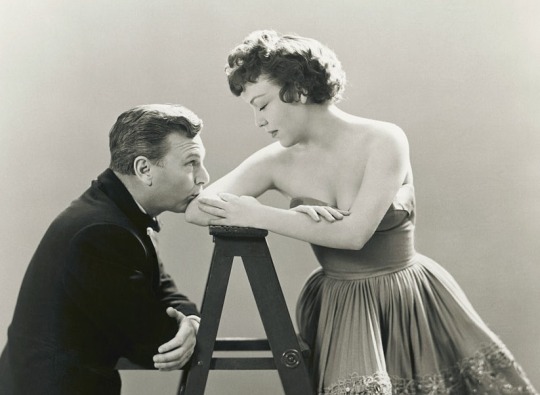
When a preoccupied Lucy is idle at her desk, she tells Harry she’s worried about Eddie Albert. Harry tells her to get busy and let Margo worry about Eddie Albert. Margo Albert was a Mexican-American actress born as María Marguerita Guadalupe Teresa Estela Bolado Castilla y O'Donnell – so she simply went by the singular moniker Margo. Coincidentally, he was related by marriage to band leader Xavier Cugat, as niece of his first marriage to Carmen Castillo. Cugat was a mentor of Desi Arnaz’s and often mentioned as a rival of Ricky Ricardo. Margo appeared in a 1958 installment of “The Westinghouse-Desilu Playhouse” with Eddie Albert which was hosted by Desi Arnaz. The following year, she was seen in another installment with Arnaz as a co-star.
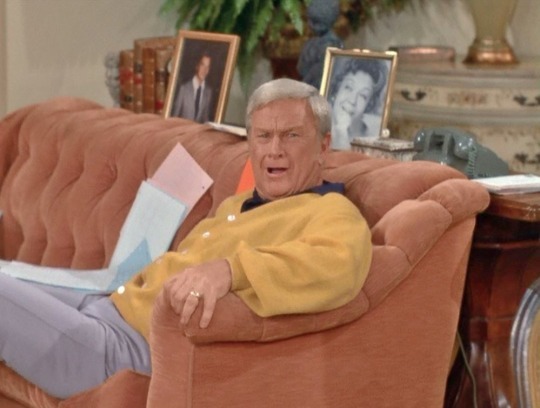
Margo’s black and white photo is behind the sofa of Albert’s living room. Next to it is a photo of Albert’s son, Edward Laurence Heimberger (aka Eddie Albert Jr.), age 23. In 1972, he was launched to fame from his portrayal of blind Don Baker in Butterflies are Free, for which he won a Golden Globe. He died of Alzheimer’s Disease in 2006, one year after his father’s passing.
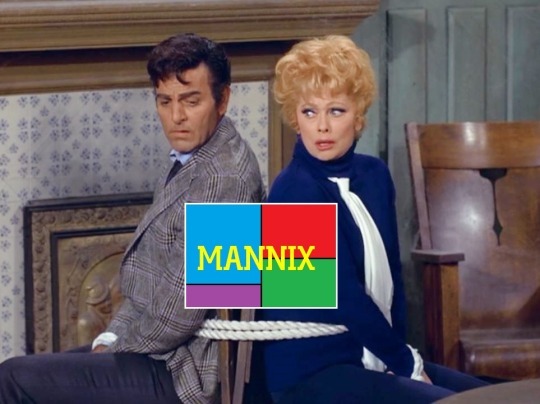
When Lucy unexpectedly arrives on Eddie Albert’s doorstep he believes her to be his stalker, so Patty is sent to phone for the police. She rushes from the room saying “I feel like I’m on 'Mannix’!” “Mannix” (1967-75) was a Desilu-produced TV show that was saved from cancellation after its first season by Lucille Ball. “Here’s Lucy” hosted a cross-over episode with “Mannix” in 1971 that also featured Mary Jane Croft and Gale Gordon. It, too, was written and directed by Ruskin, Davis, and Carroll.
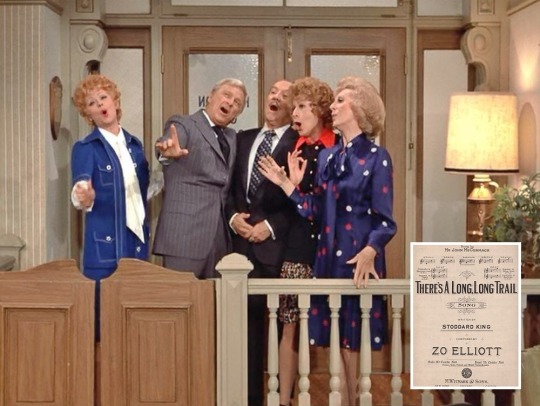
Trying to convince Eddie to change his conflict date and do the show, Lucy breaks into “There’s a Long, Long Trail” and then Albert joins in, harmonizing. At the end of the scene Harry, Mary Jane, and Vanda all join in. The song was written by Stoddard King and Alonzo Elliott in 1913. In an episode of “The Lucy Show,” Lucy Carmichael and Viv sing the first two lines of the chorus in a failed attempt to entertain their kids after their TV set breaks down. The song’s title may have also influenced the title of the Lucille Ball / Desi Arnaz film The Long, Long Trailer (1953).
“The Girl Friday Follies”
Mary Jane: “Nostalgia’s so old fashioned.”
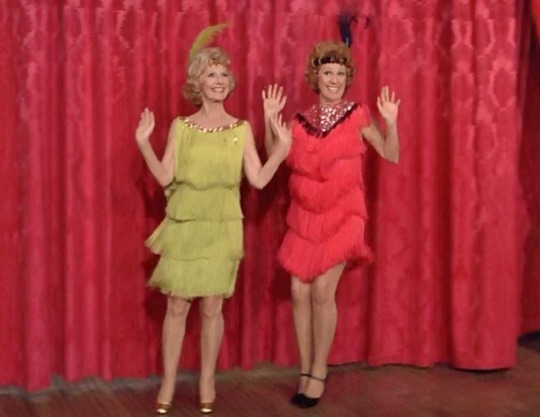
The Girl Friday Follies opens with Mary Jane and Vanda taking their bows as the team of “Crime and Punishment”. We never see what the act consists of, but it is likely not connected to Fyodor Dostoyevsky’s 1866 novel of the same name.
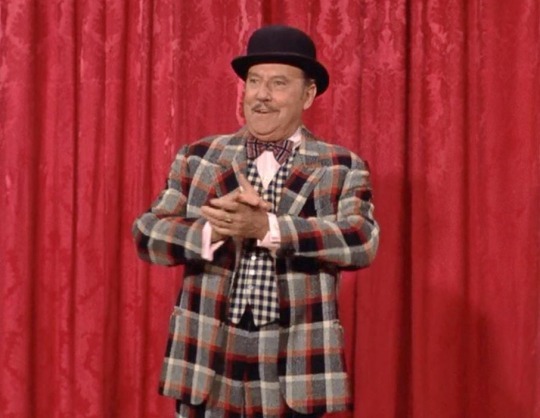
Eddie Albert: “To know Harry is to love him!” Lucy: “I don’t think we’re talking about the same Harry.”
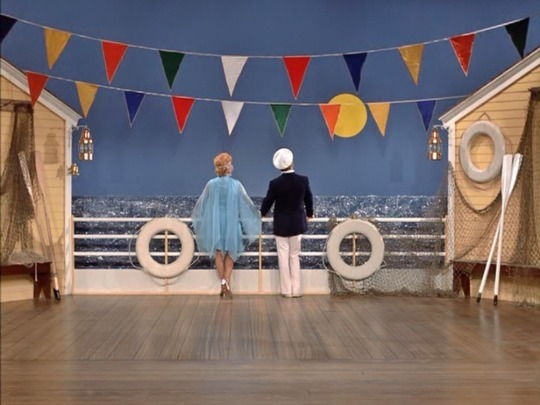
For the finale, Lucy and Eddie Albert perform “Makin’ Whoopee” written by Gus Kahn and Walter Donaldson. The song was first popularized by Eddie Cantor in the 1928 musical Whoopee! For the first time since her skiing accident, Lucy dances on television.
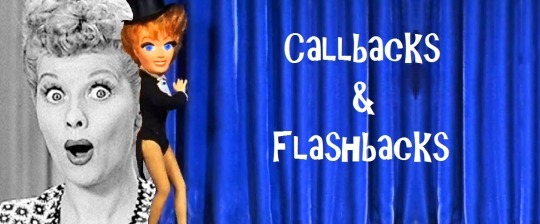
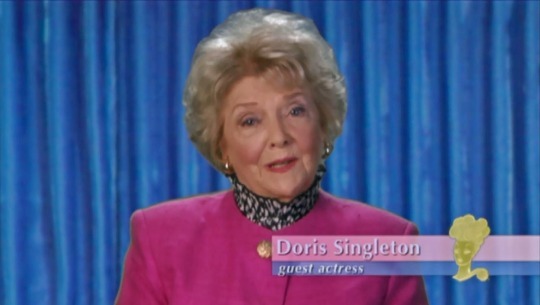
In her DVD introduction of the episode, Shirley Mitchell calls the show “old home week.”
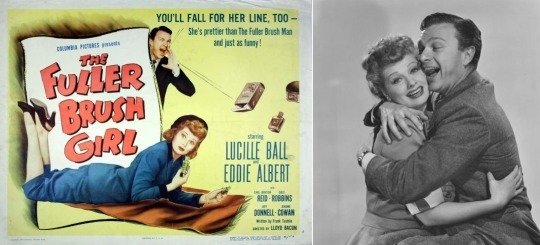
Aside from Lucy’s reunion with Eddie Albert from The Fuller Brush Girl, she also shares the sound stage with three members of the cast of “I Love Lucy”…
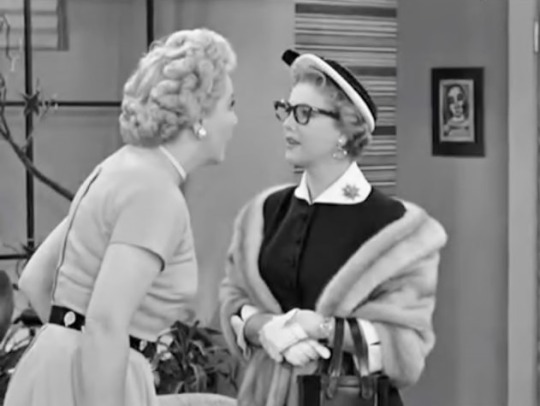
Shirley Mitchell (Carolyn Appleby)…
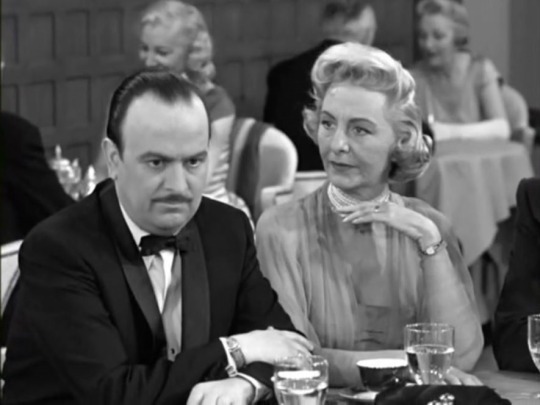
Mary Jane Croft (Betty Ramsey)…
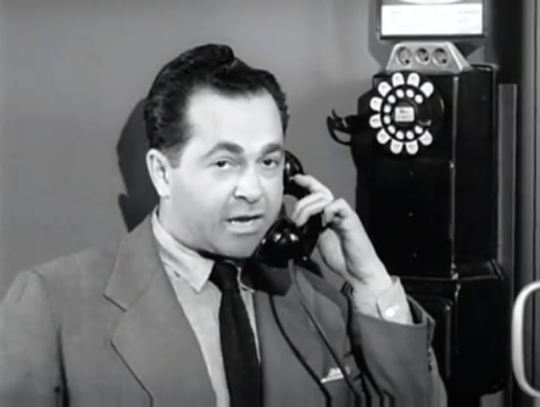
and Jerry Hausner (Jerry the Agent).
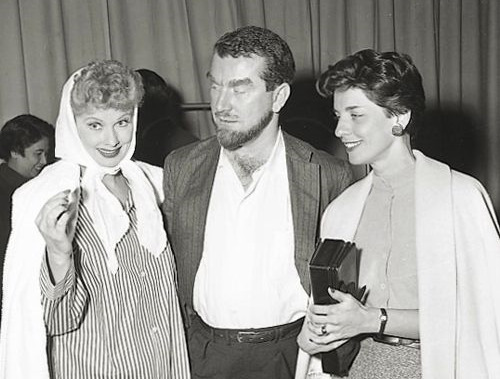
The episode is written by the “I Love Lucy” scribes Madelyn (Pugh) Davis and Bob Carroll Jr.
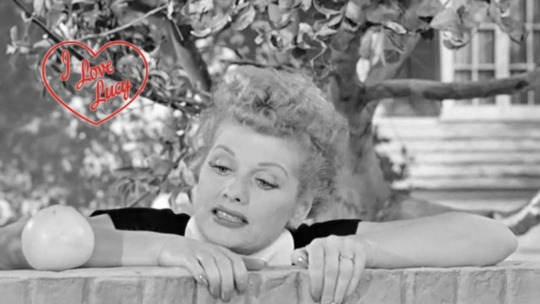
Lucy says she saw Eddie Albert’s house on a tour of the movie stars homes. Mary Jane asks Lucy if that was the tour where she sneaked into Rock Hudson’s backyard to steal an orange. This is a variation on when Lucy Ricardo took a tour of the movie stars homes and sneaked over Richard Widmark’s wall to steal a grapefruit in “The Tour” (ILL S4;E30).
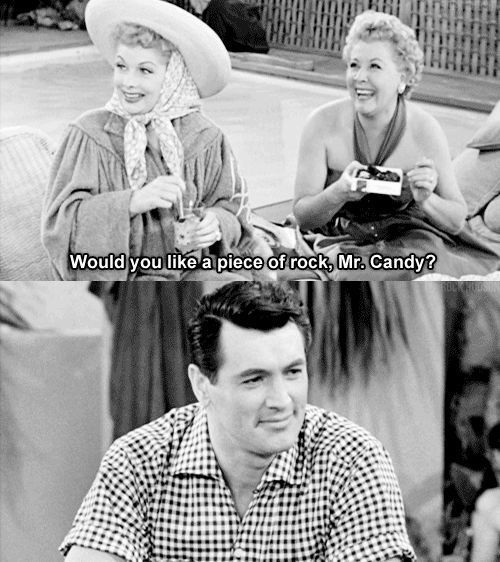
Rock Hudson played himself on an episode titled “In Palm Springs” (ILL S4;E26). Rock Hudson is mentioned again later, when Patty reveals that the same woman who has been stalking Eddie Albert has also been bothering Rock Hudson.
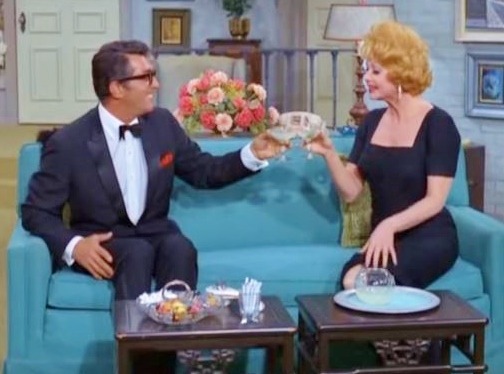
Vanda asks if it is the same tour where she saw Dean Martin in his bathrobe dumping empty bottles in the trash? Although this even never happened on screen, Lucy Carmichael did date Dean Martin on “The Lucy Show.”
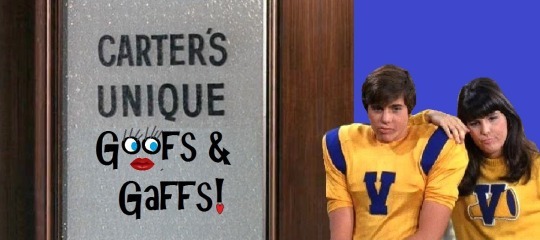
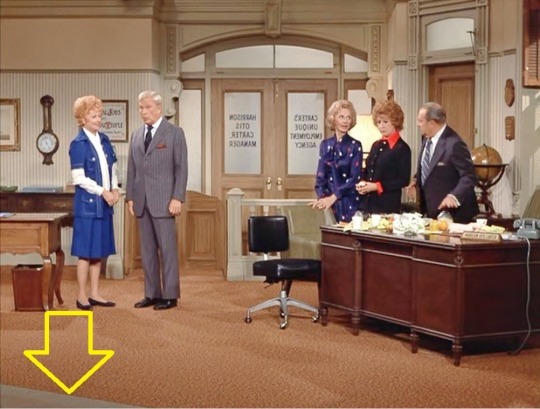
Where the Floor Ends! In the office, the camera pulls back for a wide shot that exposes where the wall-to-wall carpet ends and the cement stage floor begins.
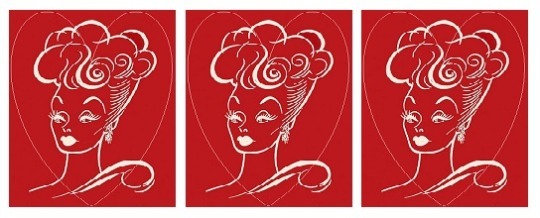
“Lucy Gives Eddie Albert the Old Song and Dance” rates 3 Paper Hearts out of 5
This episode is enjoyable for “I Love Lucy” (or Eddie Albert) fans. It is good to see so many folks from Lucille Ball’s past in one episode!
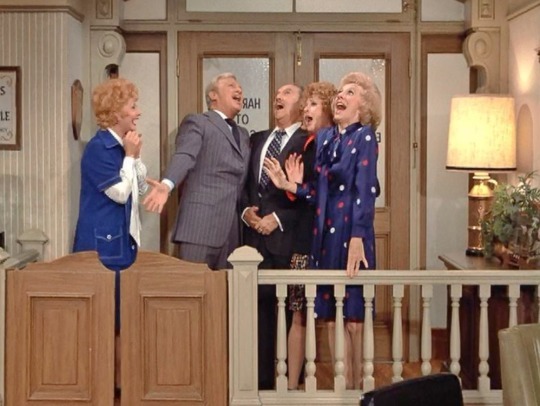
#Here's Lucy#Lucille Ball#Gale Gordon#Mary Jane Croft#Vanda Barra#Eddie Albert#Coby Ruskin#Madelyn Davis#Bob Carroll Jr.#Doris Singleton#Jerry Hausner#Making Whoopee#Crime and Punishment#Green Acres#Margot#Frank Sinatra#Joyce Haber#Iowa State Picnic#Engelbert Humperdinck#Eddie Albert Jr.#Mannix#The Music Man#There's a Long Long Trail#Rock Hudson#Dean Martin#1973#CBS#TV
7 notes
·
View notes
Text
LUCY AND MANNIX ARE HELD HOSTAGE
S4;E4 ~ October 4, 1971
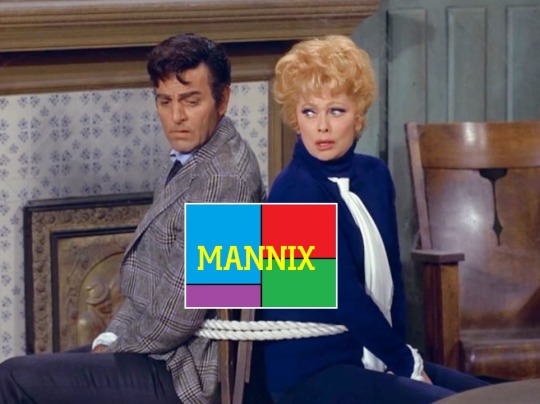

Directed by Coby Ruskin ~ Written by Bob Carroll and Madelyn Davis
Synopsis
Lucy happens to see three crimes in one day. Convinced thugs are after Lucy, Harry contacts his old friend, private eye Joe Mannix. While trying to rescue Lucy from the bank robbers, Mannix and Lucy are kidnapped and held hostage.
Regular Cast
Lucille Ball (Lucy Carter), Gale Gordon (Harrison Otis Carter), Lucie Arnaz (Kim Carter)
Guest Cast
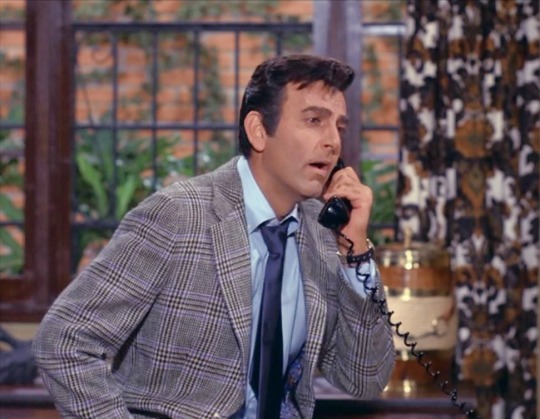
Mike Connors (Joe Mannix) began his screen career in 1952, but is probably best remembered as Joe Mannix, the role he plays here. He starred in the private detective series “Mannix” from 1967 to 1975, which ran on CBS concurrently with “Here's Lucy.” He was nominated for 5 Emmys and six Golden Globes and won a Golden Globe for the role in 1970. Connors reprised the role of Joe Mannix in a 1997 episode of “Diagnosis Murder” and in the 2003 film comedy Nobody Knows Anything! He died in January 2017.
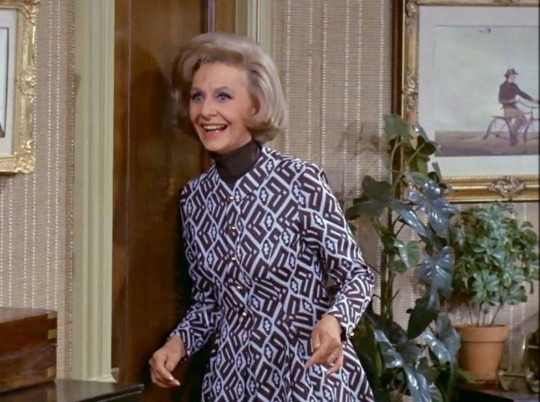
Mary Jane Croft (Mary Jane) played Betty Ramsey during season six of “I Love Lucy. ” She also played Cynthia Harcourt in “Lucy is Envious” (ILL S3;E23) and Evelyn Bigsby in “Return Home from Europe” (ILL S5;E26). She played Audrey Simmons on “The Lucy Show” but when Lucy Carmichael moved to California, she played Mary Jane Lewis, the actor’s married name and the same one she uses on all 31 of her episodes of “Here’s Lucy. Her final acting credit was playing Midge Bowser on “Lucy Calls the President” (1977). She died in 1999 at the age of 83.
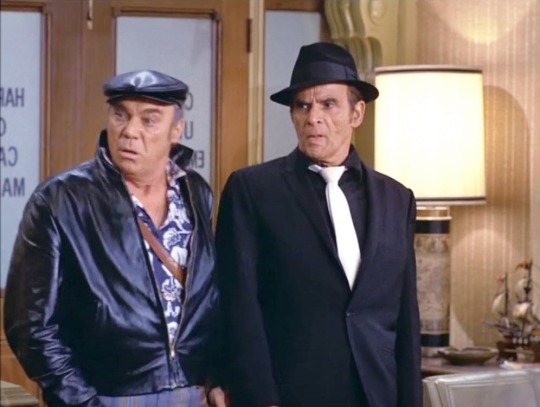
Marc Lawrence (Ruby, right) appeared on Broadway in three plays with the Group Theatre. On screen, Lawrence specialized in playing gangster roles. He previously played a mob boss in “Lucy and Ma Parker” (S3;E15). Coincidentally, between 1969 and 1974 Lawrence appeared in three episodes of “Mannix.” John Doucette (Vernon, left) first appeared with Lucille Ball in The Fuller Brush Girl (1950). In 1973 he did one episode of “Mannix” with Mike Connors.
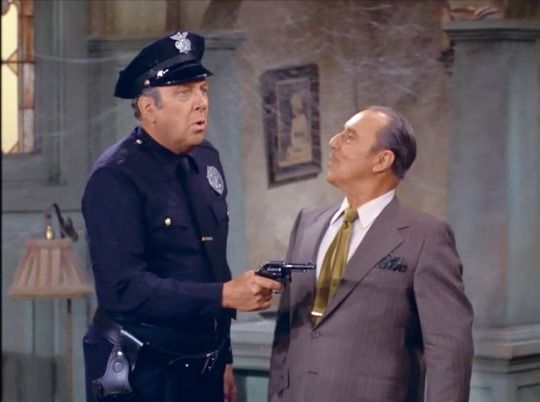
Robert Foulk (Policeman) played the policeman on the Brooklyn subway platform in “Lucy and the Loving Cup” (ILL S6;E12) and a Los Angeles Detective in “Lucy Goes To A Hollywood Premiere” (TLS S4;E20). This is the fourth of his six characters, but his first of two policemen on “Here’s Lucy.”
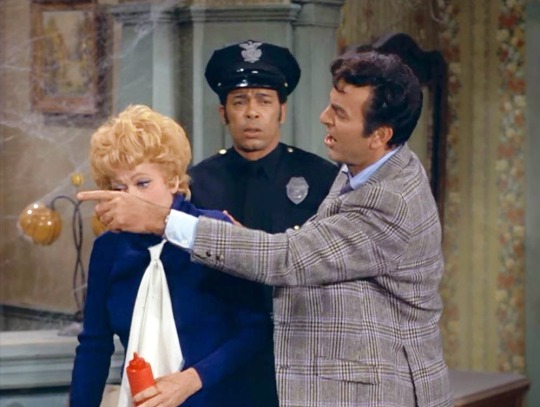
Vince Howard (Policeman) was much more at home in hour-long crime dramas than in sitcoms. Many of his 125 TV and film credits were as law enforcement officials. Howard also played a policeman on “Lucy and the Ex-Con” (S1;E15). He did three episodes of “Mannix” with Mike Connors, one of which first aired three weeks after this episode of “Here's Lucy.”
The voice of the telephone operator was done by an uncredited performer.
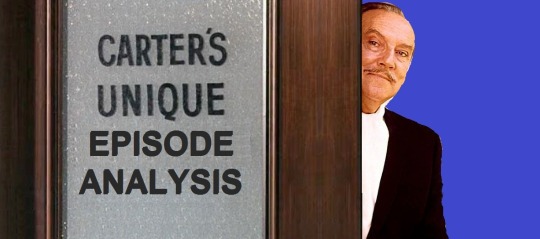
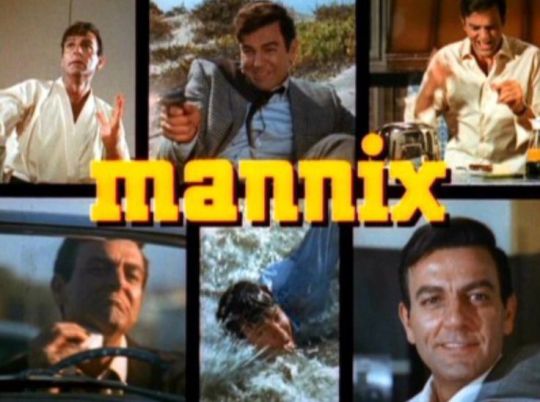
“Mannix” was an hour-long crime drama that was saved from the scrap heap by Lucille Ball when she was in charge of Desilu Studios. CBS planned to cancel the show after one season, but Ball used her influence to convince them to renew it with the assurance that changes would be made. In the second season, Joe Mannix was changed into a more hard-boiled independent private detective. The changes worked and the series became a big hit running for eight seasons. It was the last successful TV show to be produced by Desilu. Lucille Ball's sitcoms shared many cast members with “Mannix”:
Monty O'Grady, Paul Picerni, Peggy Rea, Jay Novello, Ruth McDevitt, Elsa Lanchester, Maurice Marsac, Milton Berle, Howard Duff, Claude Akins, Rich Little, Natalie Schafer, Ruta Lee, Parley Baer, Army Archerd, Lurene Tuttle, Herbie Faye, Gail Bonney, Vivi Janiss, Stafford Repp, Boyd 'Red' Morgan, George DeNormand, Hans Moebus, Murray Pollack, Sig Frohlich, Shep Houghton, Jonathan Hole, Leoda Richards, Jack Berle, and Hayden Rorke.
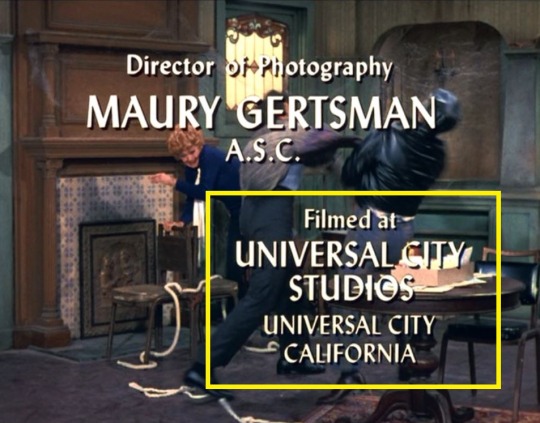
This was the first episode filmed at Universal Studios after Lucille Ball Productions (LBP) left Paramount (formerly Desilu and RKO). Because “Mannix” was property of Paramount Television, not LBP, the series stayed at Paramount Studios for the duration of its run.
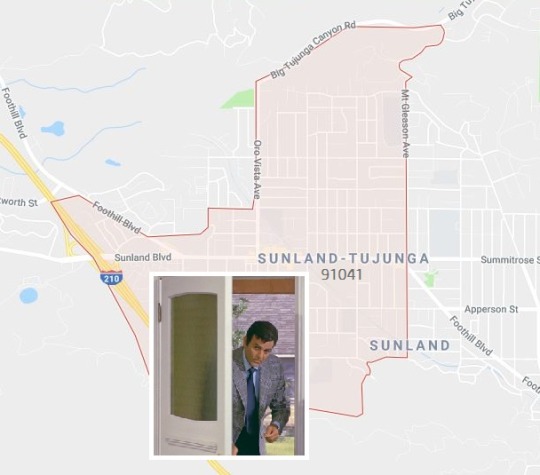
Harry gives Lucy's address as 4863 Valley Lawn Drive. She gives her Zip Code as 91041, which puts it in Sunland, California. She describes her home description as the second house from the corner, pink with blue shutters, with a big tree (named Irving) in the front yard.
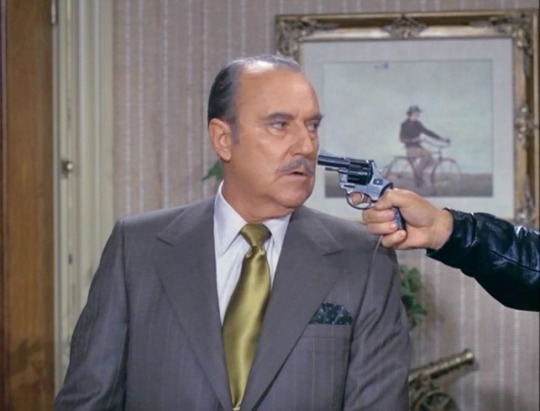
Harry tells the crooks that he is claustrophobic. In real life, however, it was Lucille Ball who had claustrophobia, although she conquered it if she thought the comedy would benefit.

In this episode, Lucy becomes a plant lover who talks to her plants. Their names are Ruthie, Hugo, and Priscilla. Ruthie meets an untimely end in an attempt to stop a robbery.
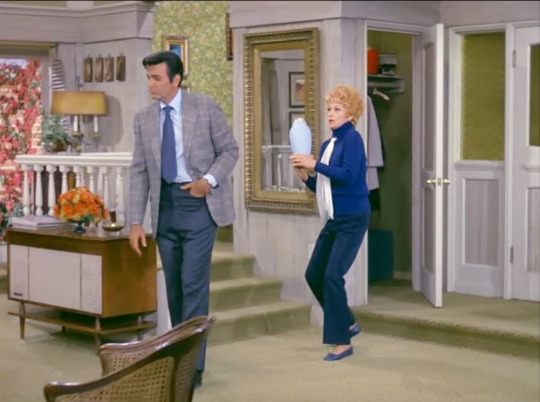
In the episode's first half, Lucy, Harry, and Mary Jane talk about a policeman named Officer Maginetti. It is never stated if either one of the policemen in the final scene is named Officer Maginetti or not.
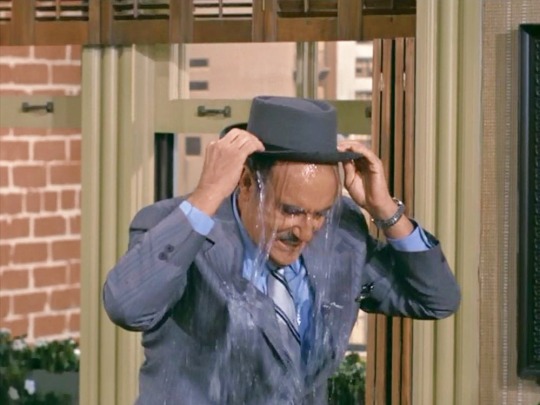
A distracted Lucy misses watering her plant and pours water into Harry's hat instead. When Harry puts it on, naturally he ends up soaking wet! Harry being wet is a staple of the “Here's Lucy” series.
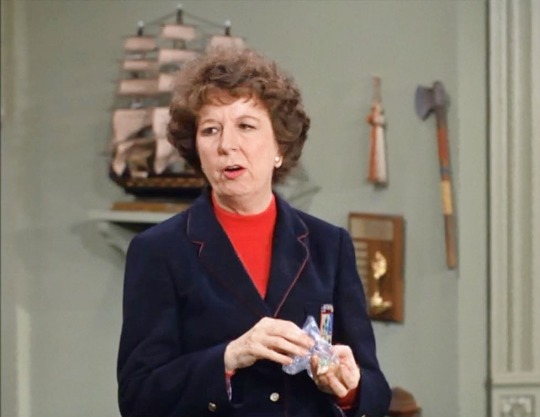
Lucy mentions an Aunt Isabel. Mary Wickes played Isabel (above), another secretary in Lucy's building, in two previous episodes, but she was not Lucy's aunt. Wickes also played Lucy Carmichael's Aunt Agatha on “The Lucy Show,” but no character named Aunt Isabel has been seen (as of yet).

While tied up by the crooks, Lucy mentions the gangster films Little Caesar starring Edward G. Robinson and Angels with Dirty Faces starring Jimmy Cagney. Cagney was mentioned in “Lucy and Carol Burnett” (S3;E22, left) and Edward G. Robinson made a cameo appearance in “Lucy Goes To a Hollywood Premiere” (TLS S4;E20, right).
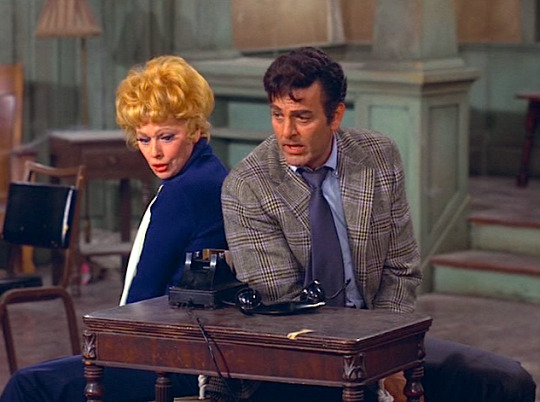
Lucy and Mannix are held hostage in a tan stucco house at the corner of Shelby and Fountain.
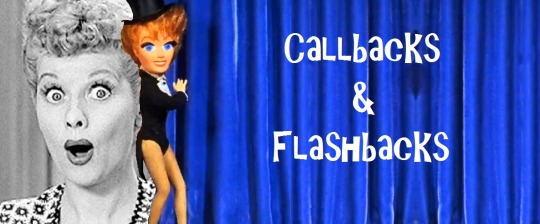
Crime has been the source of many “Lucy” sitcom episodes in the past:
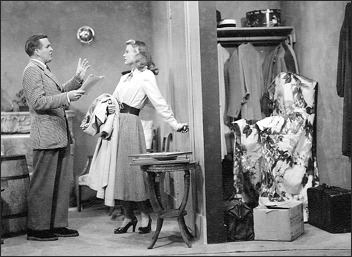
“New Neighbors” (ILL S1;E21)
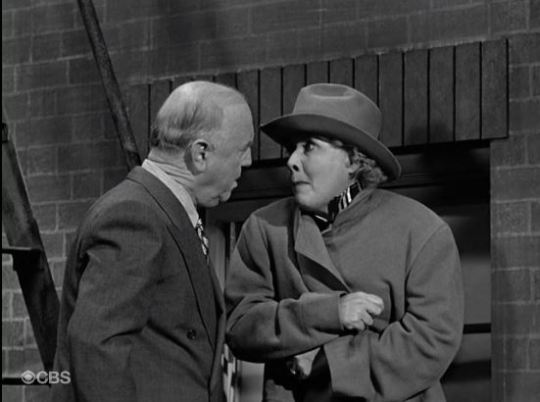
“Too Many Crooks” (ILL S3;E9)
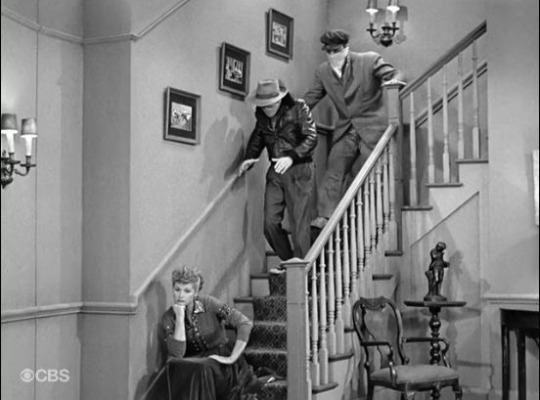
“Lucy Cries Wolf” (ILL S4;E3)
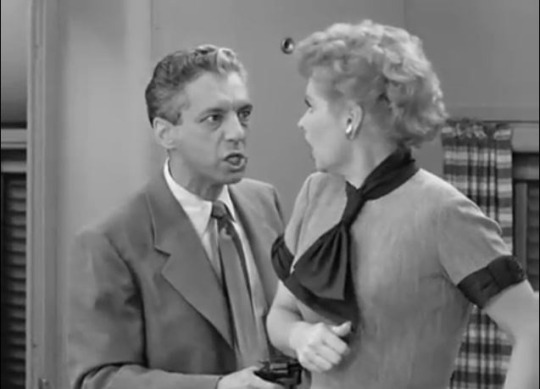
“The Great Train Robbery” (ILL S5;E2)
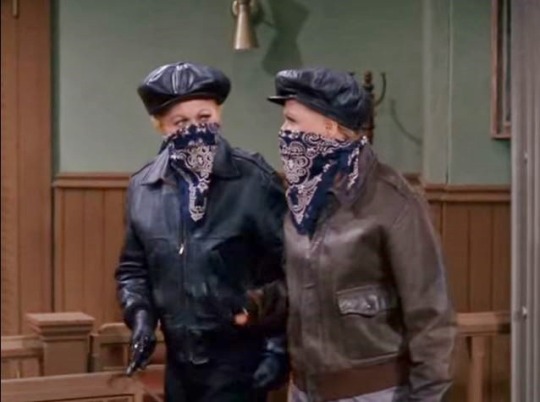
“Lucy and the Great Bank Robbery” (TLS S3;E5)

“Lucy Makes a Pinch” (TLS S3;E8)
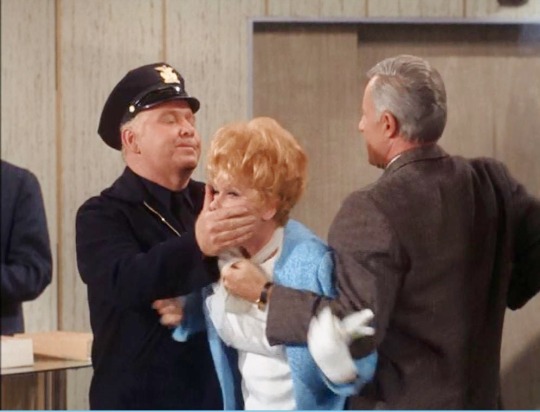
“Lucy's Impossible Mission” (S1;E6)
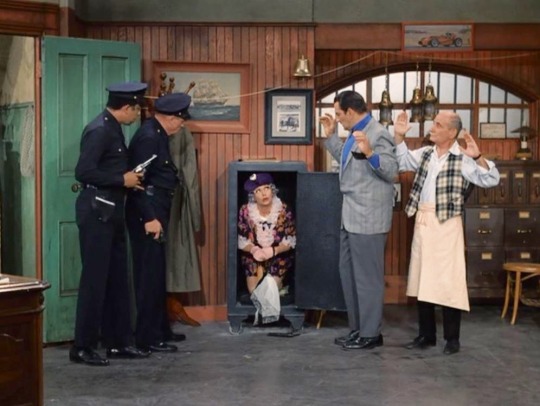
“Lucy and the Ex-Con” (S1;E15)
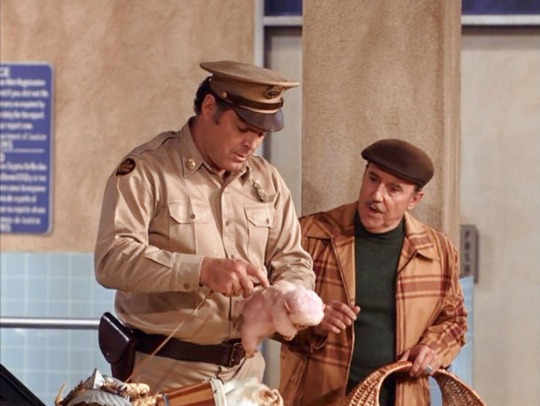
“Lucy and Viv Visit Tijuana” (S2;E19)
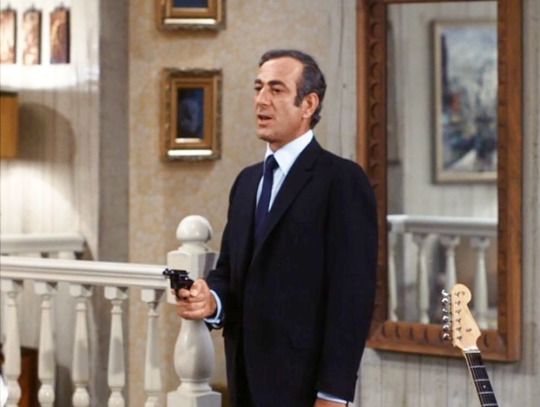
“Lucy’s Burglar Alarm” (S2;E7)
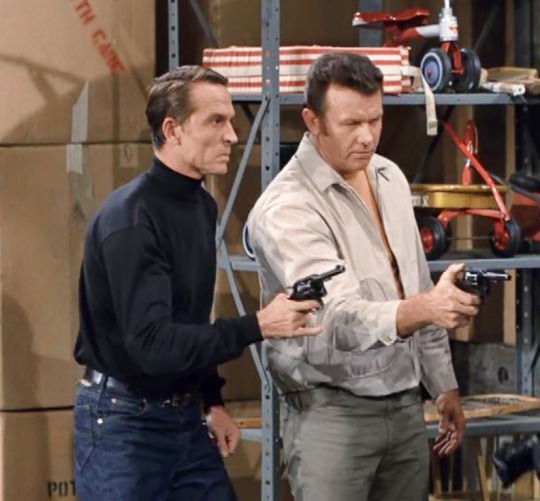
“Lucy and Wally Cox” (S2;E21)

“Lucy and Ma Parker” (S3;E15)
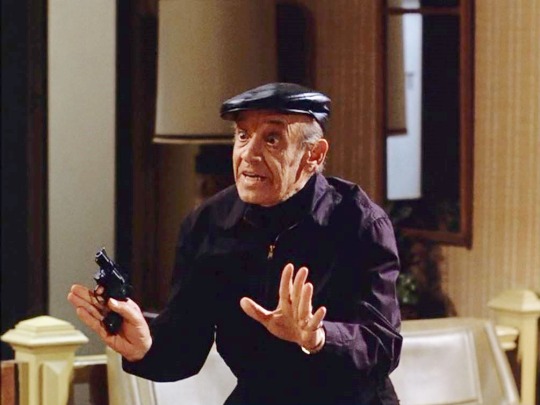
and even the previous episode, “Lucy and Harry's Italian Bombshell” (S4;E3), had Lucy and Kim encountering a burglar!
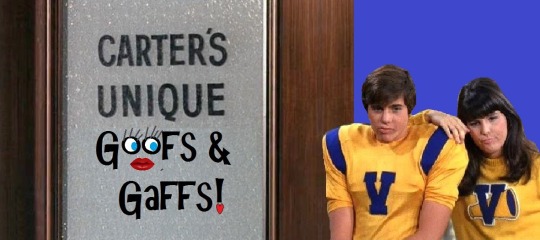
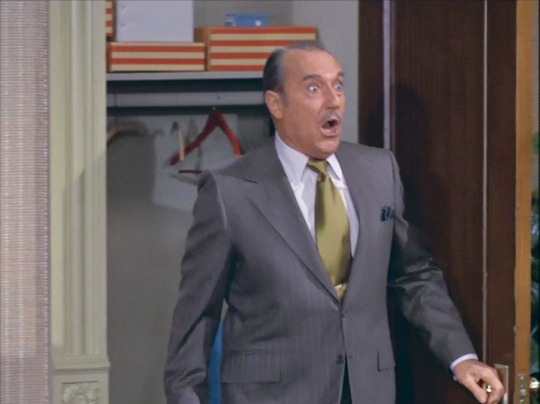
Doors! Doors! Doors! The door behind Lucy's desk at the office has changed from leading to another room to a closet. The door behind Harry's desk was originally a closet but was later transformed to a bathroom.
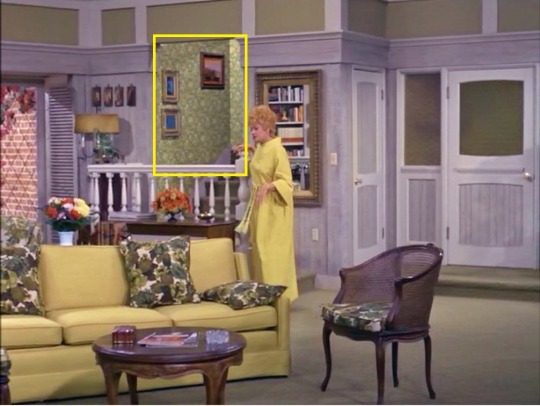
Wallpapered! Since the last time we saw the Carter home in “Lucy and Aladdin's Lamp” (S3;E21), there is new bright green wallpaper on the staircase. This may have been changed during the move from Paramount to Universal.
Where Do I Live? In “Lucy and Harry's Tonsils” (S2;E25) Harry gave his address as 4863 Valley Lawn Drive. This is the same address he gives the crooks when they ask where Lucy lives.

“Lucy and Mannix are Held Hostage” rates 4 Paper Hearts out of 5
The most unusual thing about this episode is that Mannix, a television character, lives in the same fictional world with the Carters instead of being Mike Connors, an actor and celebrity. Connors handles the physical comedy really well, and Lucy is a good match for him in the acting department. This is the second time “Here's Lucy” has used one of its own shows as the basis for an episode. They first tackled “Mission: Impossible” but changed all the character names from the series. It's too bad they never go around to doing a “Star Trek” parody!
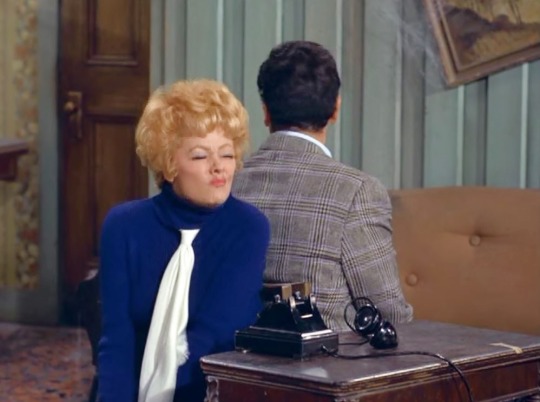
#Here's Lucy#Lucille Ball#Mannix#Mike Connors#Gale Gordon#Lucie Arnaz#Joe Mannix#Coby Ruskin#Bob Carroll#Madelyn Davis#Mary Jane Croft#Marc Lawrence#John Doucette#Robert Foulk#Vince Howard#Universal Studios#Sunland California#Little Caesar#Angels With Dirty Faces#Jimmy Cagney#Edward G. Robinson#crime#Desilu#CBS#1971#TV
2 notes
·
View notes
Text
LUCY AND FLIP GO LEGIT
S4;E1 ~ September 13, 1971


Directed by Coby Ruskin ~ Written by Bob Carroll and Madelyn Davis
Synopsis
Lucy takes a temp assignment with Flip Wilson in order to answer his fan mail. When she is caught sneaking into Wilson's office to ask him a favor, she gets caught and fired. The favor is to appear in a community theatre production of Gone With The Wind – as Prissy.
Regular Cast
Lucille Ball (Lucy Carter), Gale Gordon (Harrison Otis Carter), Lucie Arnaz (Kim Carter)
Guest Cast

Flip Wilson (Himself) was born in Jersey City, New Jersey as Clerow Wilson Jr. in 1933. He was a comedian and actor, best known for his television appearances during the late 1960s and 1970s. In the early 1970s, Wilson hosted his own weekly variety series, “The Flip Wilson Show.” The series earned Wilson a Golden Globe and two Emmy Awards, and at one point was the second highest rated show on network television. Wilson also won a Grammy Award in 1970 for his comedy album “The Devil Made Me Buy This Dress.” In January 1972, Time magazine featured Wilson's image on its cover and named him "TV's first black superstar." According to The New York Times, Wilson was "the first black entertainer to be the host of a successful weekly variety show on network television.” Wilson had met Lucille Ball a year earlier on a Los Angeles broadcast of “The Tonight Show” as well as an episode of “The Ed Sullivan Show.” Perhaps Wilson's greatest creation was the sassy Geraldine Jones, whose catch phrase was “The devil made me do it!” Wilson died in 1998.
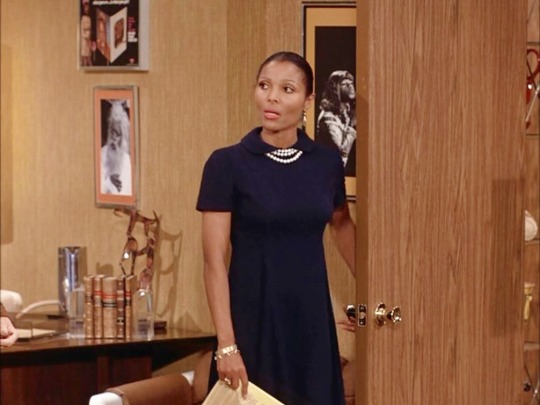
Kim Hamilton (Jane, Flip Wilson's Secretary) did more than 60 television shows and films during the 1960s and ‘70s alone. She was in the film To Kill a Mockingbird in 1962. She made two appearances on “My Three Sons” in 1963 and 1964 – both featuring William Frawley (Fred Mertz). Hamilton has the distinction of being the first Black actress to appear on TV's “Days of Our Lives.” She also was seen on the soaps “The Guiding Light” and “General Hospital.” Hamilton died in 2013 at age 81.
The secretary's first name is never spoken aloud. Hamilton provides the DVD introduction to the episode.

Starting with this episode, Coby Ruskin, who had directed two previous episodes, becomes the regular director of “Here's Lucy” and will direct nearly all (65) future episodes.
20 years earlier, when "I Love Lucy" began, the word 'pregnant' could not be said on television, but is spoken freely in this 1971 episode parody of 1860's Civil War era -- an ironic comment on American censorship.
This is the first episode of season 4 and the first without Desi Arnaz Jr. as a regular cast member. Despite being the season premiere, Craig's absence is not explained. Later in the season we learn that that Craig is off at college.

Starting with season 4, “Here's Lucy” switches production studios from Paramount to Universal.
Starting with this episode, “Here's Lucy” aired one hour later (still on Monday nights) and was no longer in competition with “Rowan and Martin's Laugh-In.” The show's new lead-in was “My Three Sons” starring Fred MacMurray, entering its 12th season on CBS.
This episode also introduces a re-orchestrated and slightly faster theme song. With the departure of her brother from the cast, Lucie Arnaz now has a title screen to herself in the opening credits.

This episode was first aired on Mel Torme's 51st birthday. Torme played the role of Mel Tinker on several episodes of “The Lucy Show.”
Bob Carroll, Jr. and Madelyn Davis return to the series’ rotation of writers and the show is given a tremendous boost. Not only is logic reintroduced into the storylines, but the relationships between Lucy and her co-stars become more natural; Harry and Lucy begin to show each other more affection; and Kim is allowed to mature out of the typical teen stereotype. Unfortunately, the pair only contributes a little over one-third of the Season Four scripts.
Although it is never explicitly stated, Flip Wilson and his office are preparing for his weekly television variety show.
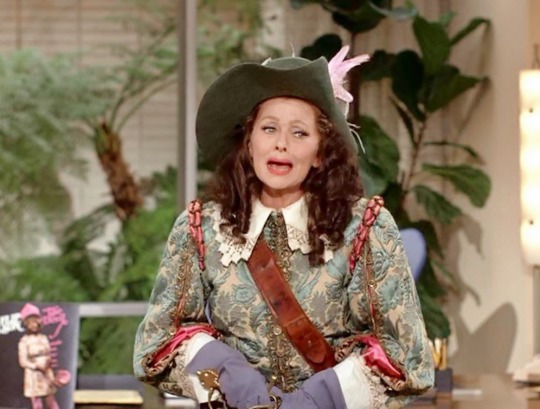
Between the The Three Musketeers and Gone With the Wind, Flip Wilson spends the entire episode in costumes. The Three Musketeers is a historical novel by Alexandre Dumas. Set in 1625–28, it recounts the adventures of a young man named d'Artagnan after he leaves home to travel to Paris, to join the Musketeers of the Guard. Although d'Artagnan is not able to join this elite corps immediately, he befriends the three most formidable musketeers of the age—Athos, Porthos and Aramis—and gets involved in affairs of the state and court. The novel was filmed and staged dozens of times, with the most famous being a 1943 film starring Gene Kelly. A 1935 version featured Lucille Ball in a small, uncredited role.
For the small screen version Flip is rehearsing Rock Hudson is Anthos, Andy Williams is Porthos, Flip says he is the ‘token’ musketeer. Actually, he would be Aramis. Hudson had appeared on a 1955 episode of “I Love Lucy.” To make Lucy prove she is not Andy Williams, she sings the first three notes of “Moon River,” a song that became Williams' theme tune.
On the telephone, Jane talks to someone named Mr. Rayfiel about taking some paperwork to mimeo. Howard Rayfiel was a Production Executive for “Here's Lucy” from 1970 to 1972.

When Lucy returns to Wilson's office in disguise as a Musketeer, Wilson thinks Lucy wants another autograph for trading purposes: two Flip Wilsons for one Bill Cosby. Bill Cosby was another African American comedian who had great success in the late 1960's and 1970's.

There is a record album standing up on the desk titled “The Devil Made Me Wear this Dress” by Geraldine Jones. This Flip Wilson comedy album was sold in 1970 and won a Grammy Award in the comedy category.

Gone with the Wind was a historical novel written by Margaret Mitchell in 1936 but set in the deep south during the Civil War. The book was translated into one of the most famous films of all time in 1939 starring Clark Gable as Rhett Butler and Vivian Leigh as Scarlett O'Hara.

Prissy was played by Butterfly McQueen and Melanie was played by Olivia de Havilland.
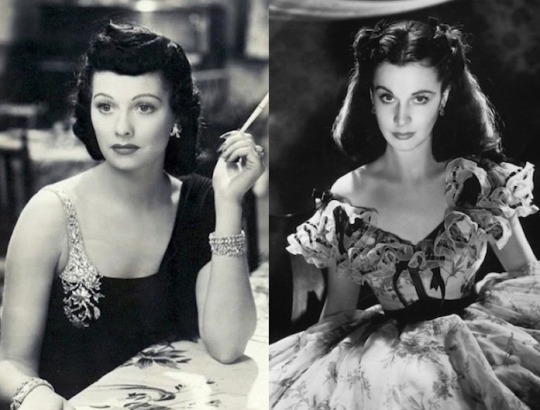
Like most of the top actors in Hollywood, Lucille Ball had an audition for the role of Scarlett O'Hara. Although Lucille Ball did not get cast, actors who did get roles in the film and later worked with Lucille Ball included: George Reeves (Superman, ILL), Olin Howland (Mr. Skinner, ILL), Irving Bacon (Mr. Potter, ILL), Shep Houghton (HL), Alberto Morin (ILL), and Hans Moebus (ILL & TLS).
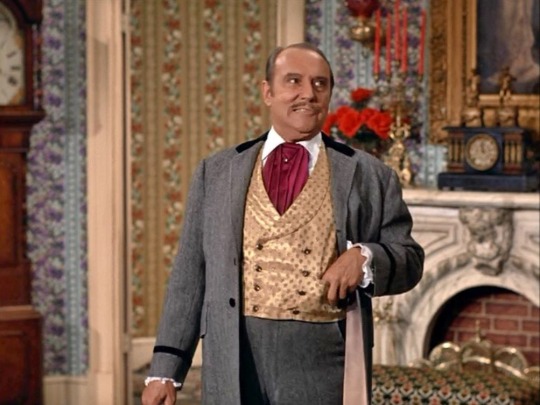
Harry has joined Encino Players, a little theatre troupe that has cast him as Rhett Butler in a capsule stage version of Gone With The Wind. As the curtain goes up, the soundtrack plays the sweeping and iconic “Tara's Theme” from the film, which was written by Max Steiner.

Under her cape Prissy has on an Abraham Lincoln t-shirt. When Scarlet asks if that's a photograph of President Lincoln, Prissy replies “Well, it ain't Ray Charles!” Ray Charles was a singer-songwriter who had great success during the 1960s. While he was with ABC, Charles became one of the first black musicians to be granted artistic control by a mainstream record company.
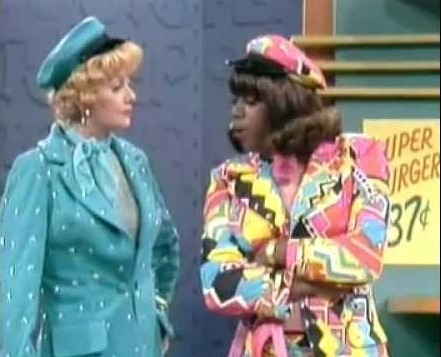
In return for appearing on “Here's Lucy,” Lucille Ball appeared on “Flip” (aka “The Flip Wilson Show”) in an episode that aired just three days after this "Here’s Lucy.”
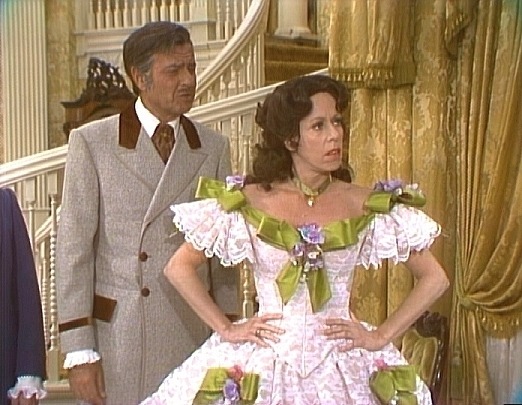
Lucille Ball's protege Carol Burnett, who appeared frequently on “The Lucy Show” and “Here's Lucy,” did a famous parody of Gone With The Wind in November 1976. In the sketch titled “It Went with the Wind,” Carol played Starlet, Harvey Korman played Ratt Butler, Vicky Lawrence played Sissy, and Tim Conway played Brashley. Not coincidentally, earlier in the month the film was shown for the first time on television.
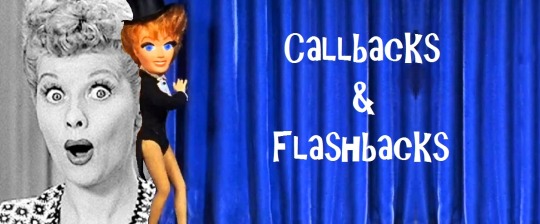
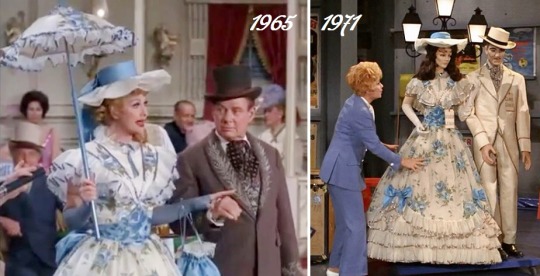
The dress worn by Lucille Ball in the Gone with the Wind sketch was previously worn by her in episode “Lucy and Arthur Godfrey (TLS S3;E23). It also appeared briefly during previous year in "Lucy and Carol Burnett" (S3;E22).

In “Lucy Writes a Novel” (ILL S3;E24) Lucy Ricardo says “My novel may turn out to be another ‘Gone with the Wind’!“ She compares Ricky to Rhett Butler and herself to Scarlett O'Hara.

Lucille Ball not only got to play the role that went to Vivian Leigh, but she also played Clark Gable (wearing a mask) during “Lucy Meets Harpo Marx” (ILL S4;E28) to convince near-sighted Carolyn Appleby that she hobnobbed with celebrities.
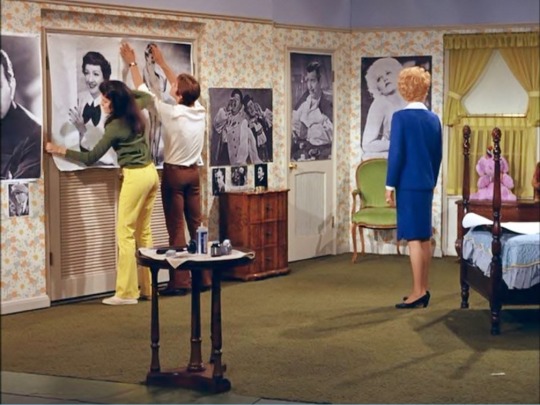
Kim Carter had a poster of Clark Gable on her bedroom wall in “Lucy and the Andrews Sisters” (S2;E6).

“Lucy and Flip Go Legit” rates 4 Paper Hearts out of 5

#Lucille Ball#Here's Lucy#Lucy and Flip Go Legit#Flip Wilson#Gale Gordon#Lucie Arnaz#Coby Ruskin#Kim Hamilton#Madelyn Davis#Bob Carroll#Gone With the Wind#The Three Musketeers#Rock Hudson#Andy Williams#Clark Gable#Vivian Leigh#Scarlett O'Hara#Rhett Butler#Prissy#Carol Burnett#Abraham Lincoln#Ray Charles#The Devil Made Me Buy this Dress#Grammy Award#Bill Cosby#The Flip Wilson Show#Flip#Howard Rayfiel#Pararmount#Universal
3 notes
·
View notes
Text
LUCY GOES TO THE AIR FORCE ACADEMY: PART 2
S2;E2 ~ September 29, 1969
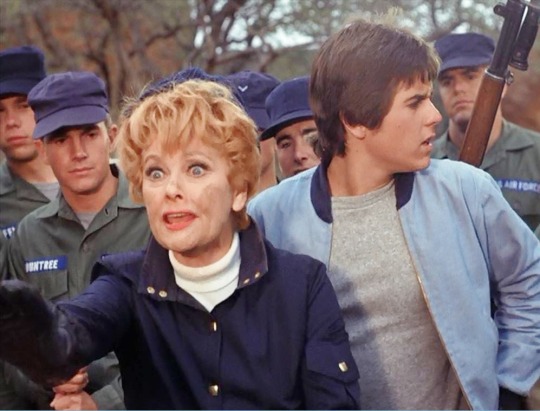
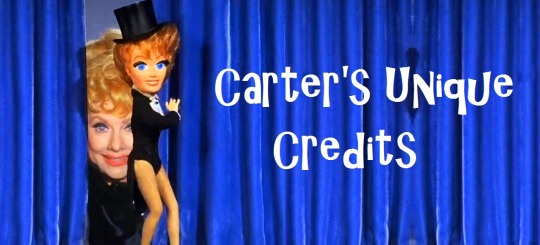
Directed by George Marshall ~ Written by Gene Thompson
Synopsis
Visiting the U.S. Air Force Academy, Lucy takes a tour and mistakes the General in charge for a janitor!
Regular Cast
Lucille Ball (Lucy Carter), Gale Gordon (Harrison Otis Carter), Lucie Arnaz (Kim Carter), Desi Arnaz Jr. (Craig Carter)
Guest Cast
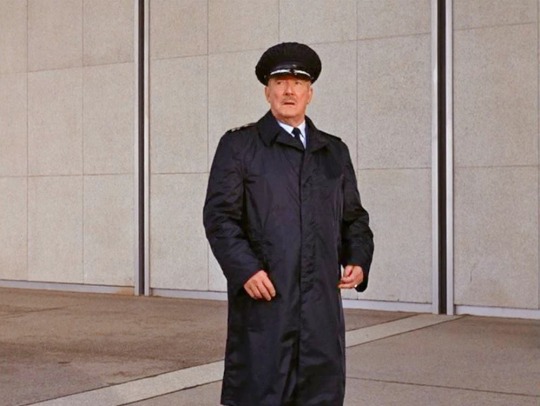
Roy Roberts (Superintendent) was born Roy Barnes Jones in Tampa, Florida in 1906. His early career was on the Broadway stage, gracing such plays as Old Man Murphy (1931), Twentieth Century (1932), The Body Beautiful (1935) and My Sister Eileen (1942). In Hollywood, the veteran character actor clocked over 900 screen performances in his 40 year career, most of which were authority figures. He and Lucille Ball appeared together in Miss Grant Takes Richmond (1949). On “The Lucy Show” he first appeared as a Navy Admiral in “Lucy and the Submarine” (S5;E2) before creating the role of Mr. Cheever, a recurring character he played through the end of the series. This is the first of his 5 episodes of “Here’s Lucy.” Roberts died in 1975 at age 69.
Roy Roberts played the same character in “Lucy Goes to the Air Force Academy: Part 1” (S2;E1).
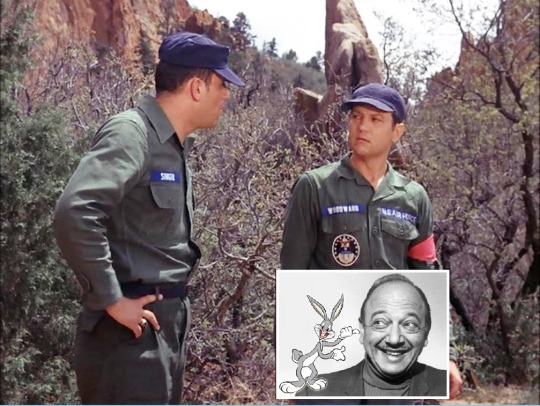
Mel Blanc (Red Squad Radio voice / Woodward voice, uncredited) is best known as the voice of Bugs Bunny and other Warner Brothers characters, but had acted with Lucille Ball on radio and in the 1950 film The Fuller Brush Girl.
I'd be curious to know how Lucy convinced her old friend Mel Blanc to come to the ADR (automated dialogue replacement) session and do these two voices. Possibly he was in the studio that day anyway. It would also be interesting to learn how the uncredited actor/cadet playing Woodward reacted to being dubbed by the great Mel Blanc!
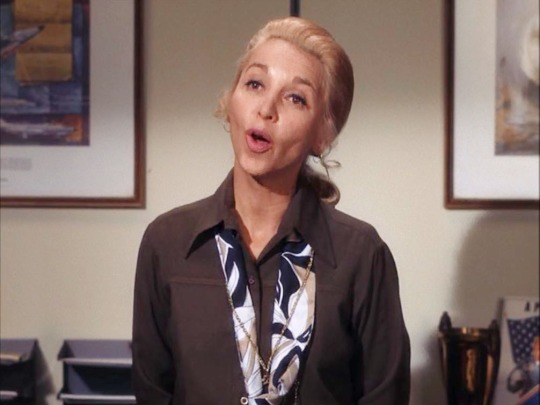
Beverley Garland (Secretary, uncredited) is best remembered as Barbara, Fred MacMurray's new wife on “My Three Sons.” Roy Roberts (Superintendent) played a dentist on a 1970 episode of the show. This is her only appearance with Lucille Ball. She died in 2008.
Antonio Garcia Tony (Kid on Field Trip, uncredited) makes his screen debut with this episode. He continued to play uncredited background characters and also became a casting director.
John Erwin (Narrator, uncredited) was a voice-over artist primarily known for voicing Reggie on the “Archie” cartoons. Erwin's voice over comes at the start of the episode to tell the audience what happened in part 1.
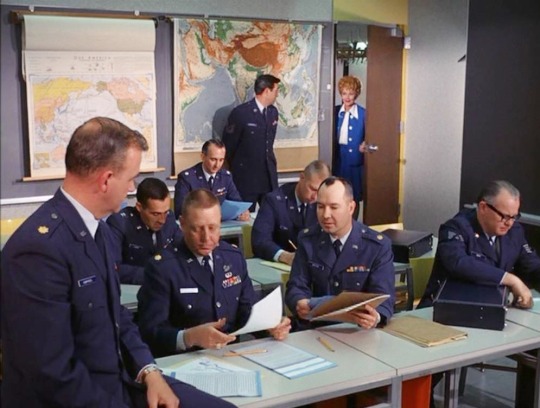
Actual Air Force Academy students and staff play themselves.
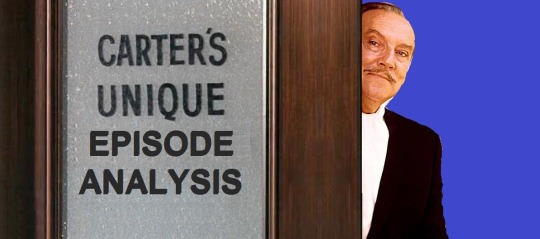
This episode is the second of a four-part on-location story arc created with the cooperation of the Air Force and the state of Colorado. At the Academy, filming was done right in the dormitories and administrative buildings. The Air Force viewed this as a sort of TV commercial at a time when the public was very down on the military due to its involvement in the Vietnam War.

Unlike studio filming, only one camera was used on location, although Lucille Ball insisted on her studio lighting instruments, despite their great weight and bulk.
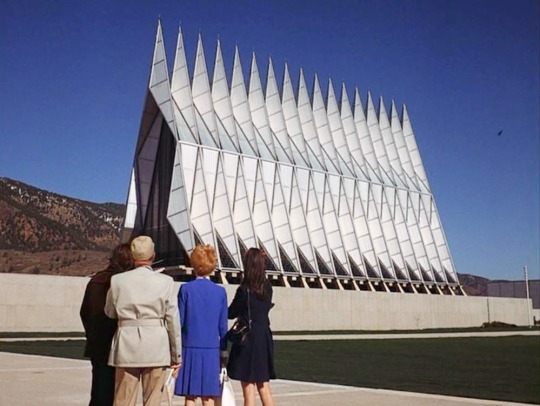
The US Air Force Academy was founded in 1954. The buildings were designed in a modernist style and make extensive use of aluminum on building exteriors, suggesting the outer skin of aircraft or spacecraft. The most controversial aspect of the design was the Cadet Chapel, designed by architect Walter Netsch. It is currently the most visited man-made tourist attraction in Colorado. It features 17 spires that shoot 150 feet into the sky. On the tour, Lucy understandably mistakes the Chapel for a large aircraft. This scene is underscored by the Air Force Academy choir singing a hymn.
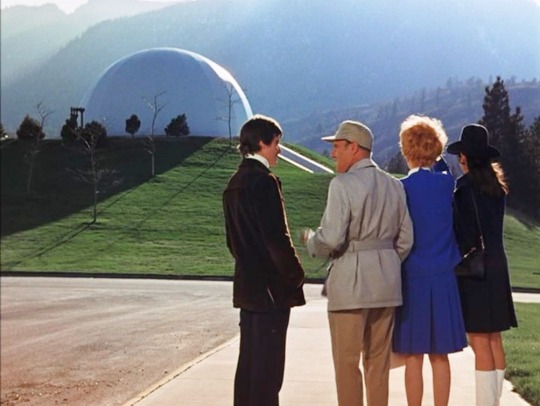
Harry mistakes the domed planetarium building for a UFO. The site used to be open to the public, but is now used exclusively for cadet training. The choir switches to “Air Force Blue” an unofficial Air Force song composed during 1956 by Marilyn Scott and Keith Textor.
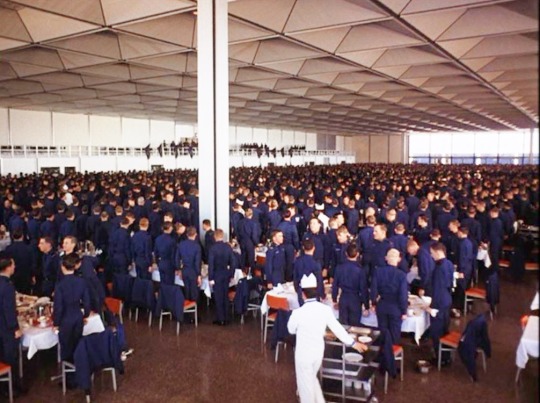
They look through the windows at Mitchell Hall, the cadet dining hall, which is named in honor of Brigadier General William Mitchell. This three and a half story structure sits on 1.7 acres and has the capability of serving the entire Cadet Wing (more than 4,000 people) simultaneously in less than 30 minutes. During this scene the choir sings a song based on the poem “The Coming American” by Samuel Walter Foss.
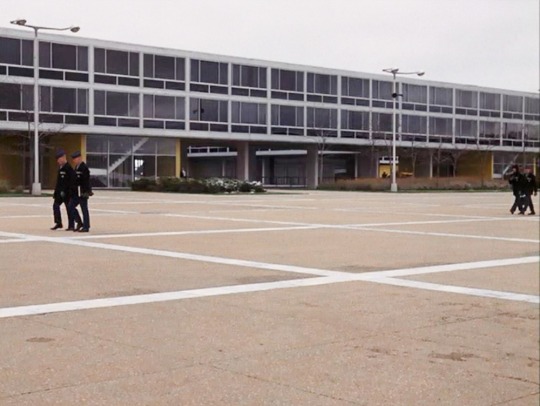
They next see Vandenburg Hall, a quarter mile long dormitory. Vandenberg Hall is the second-largest university dormitory in the country, after the United States Naval Academy’s Mitchell Hall. The dorms are named after General Hoyt S. Vandenberg, the second Air Force chief of staff. The main buildings in the Cadet Area surround a large pavilion known as The Terrazzo, designed by landscape architect Dan Kiley. The name comes from the walkway’s terrazzo tiles that are set among a checkerboard of marble strips.
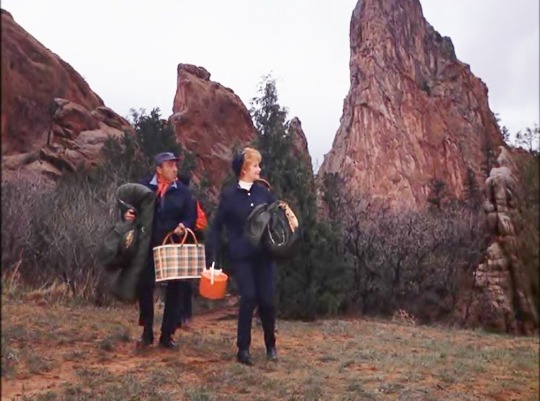
The scene where Lucy is dragged by a floor polisher through the hallways of one of the buildings is accomplished by Lucille herself without a stunt double. A special dolly is placed under her body to glide her along, and the film was sped up so she appears to be moving much faster than she actually was.
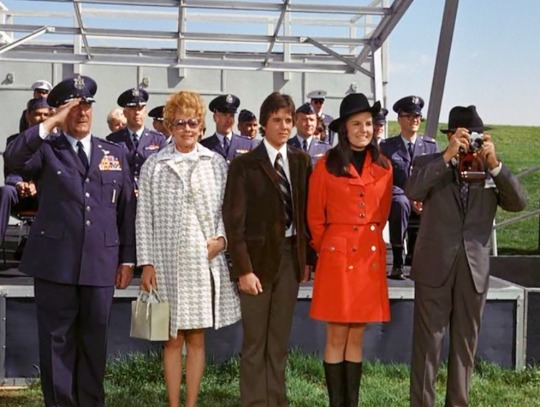
When Lucy and the Carters are guests at the grand parade, Lucille Ball wears the prescription sunglasses she wore in real life. Lucy Carter never wore glasses on the series, so it momentarily reminds us that these cadets are all parading for the real-life celebrity Lucille Ball.
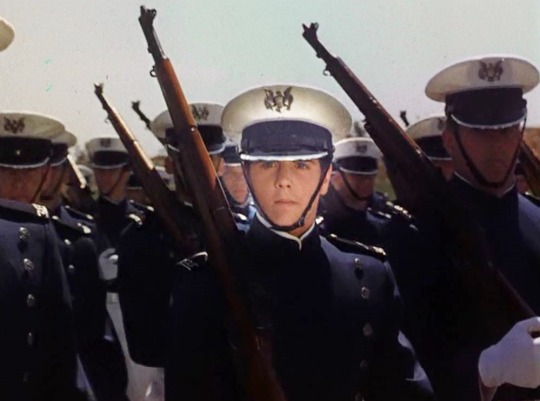
As the parade of cadets passes, the show takes a surreal turn when Lucy, with Craig standing beside her watching the men march by, sees the face of her son in the formation. The camera irises in and focuses on Craig in full military inform. The march is accompanied by “El Capitan” (1896) by John Philip Sousa.
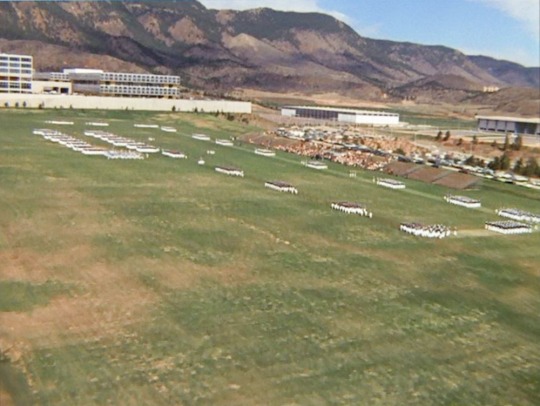
The episode ends with a helicopter shot of the parade and the Academy campus to the strains of “Off We Go, Into the Wild Blue Yonder” (aka “The U.S. Air Force Song” written in 1938 by Robert MacArthur Crawford).
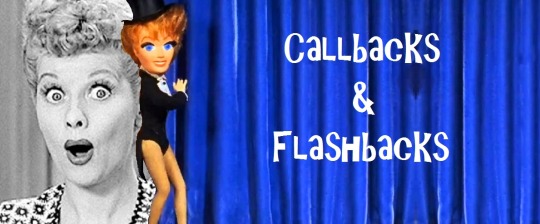
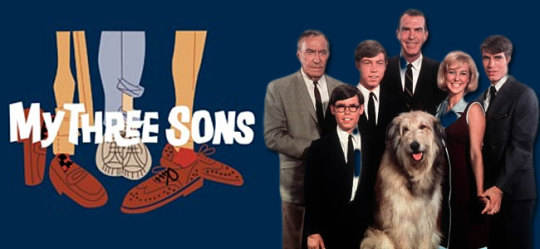
In addition to Beverly Garland and Roy Roberts, Lucy shows and “My Three Sons” have a lot of actors in common. First and foremost William Frawley (Fred Mertz on “I Love Lucy”) who played Uncle Charlie. Star Fred MacMurray played himself on a 1958 episode of “The Lucy-Desi Comedy Hour.” In early episodes of “The Lucy Show” Barry Livingston (Ernie, youngest of the three sons) played Mr. Mooney's son Arnold on two episodes. Don Grady (Robbie, eldest of the three sons) also did an episode of “The Lucy Show” as one of Lucy's daughter's friends. Candy Moore and Jimmy Garrett, who played Lucy Carmichael's children on “The Lucy Show,” each did one episode. Doris Singleton, who played Caroline Appleby on “I Love Lucy” and characters on each of Lucy's shows, also played two characters on eight episodes of “My Three Sons.”
Other shared character actors include Maurice Marsac (Tropicana Maitre D'), Reta Shaw, Jerry Hausner (Jerry the Agent), Maxine Semon, Lou Krugman, Ted Eccles (who also played Arnold Mooney), Richard Reeves, Ed Begley, Gail Bonney, Jay North (Wendell Mooney), Rolfe Sedan, Tyler McVey, Sandra Gould, Richard Deacon, Eve Arden, Mabel Albertson, Joan Blondell (Joan Brennan), Elvia Allman, Herb Vigran, Dayton Lummis, Mary Wickes, Lurene Tuttle, Dick Patterson, Jamie Farr, Tol Avery, Robert Carson, Amzie Strickland, Barbara Morrison, Louis Nicoletti, Eddie Quillan, Barbara Pepper, Dub Taylor, Kathleen Freeman, Ray Kellogg, Stafford Repp, Jay Novello, William Meader, Arthur Tovey, Bess Flowers (”Queen of the Extras”), Ed Haskett, Hans Moebus, Bert Stevens, James Gonzales, Steve Carruthers, Norman Stevans, and George DeNormand.
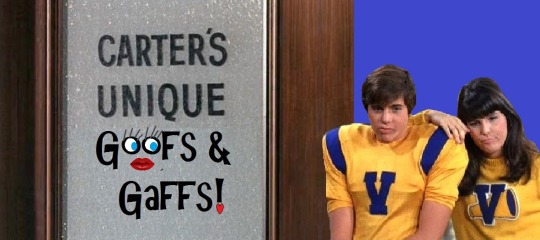
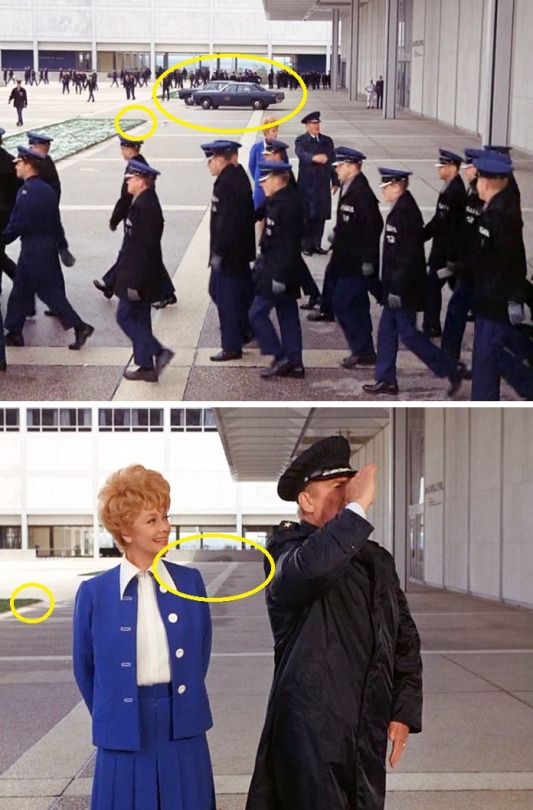
During the saluting scene, cars disappear and reappear; They're present in the long shots and gone in the close-ups. Same for the snow (small circle); there is snow on the grass in the long shots and none in the close-ups.
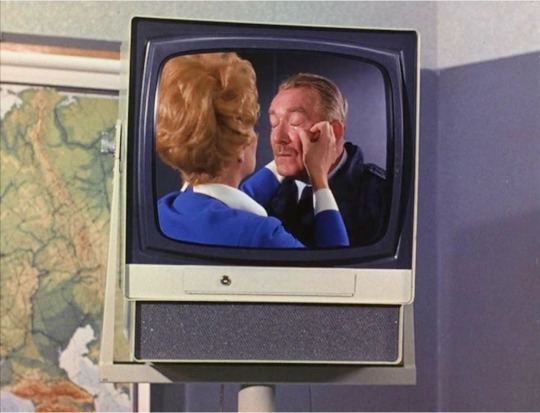
Lucy mistakes the Superintendent (Roy Roberts) for a janitor despite the fact that he's wearing a military hat!
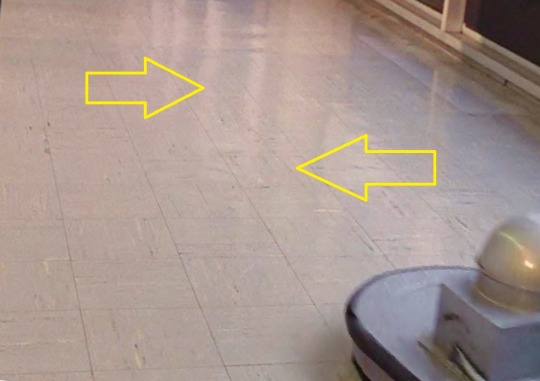
The wire pulling the runaway floor polisher down the hallway can be clearly seen in one shot, although it is difficult to see in the still photos.
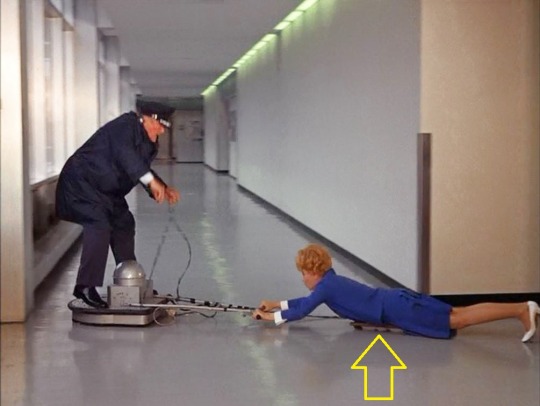
In another shot you can see the dolly underneath Lucy.
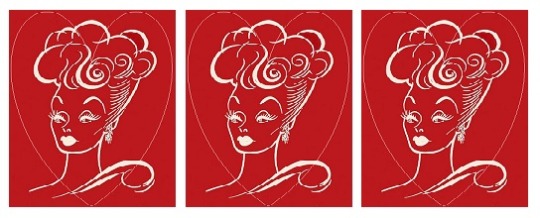
“Lucy Goes to the Air Force Academy: Part 2” rates 3 Paper Hearts out of 5
These two episodes feel more complete if viewed as one. Lucy's display of physical comedy is truly memorable. The tour of the Academy is basically a recruitment video for cadets. The military pageantry of the ending, combined with Lucy's hallucination of Craig in uniform, is a bit odd.
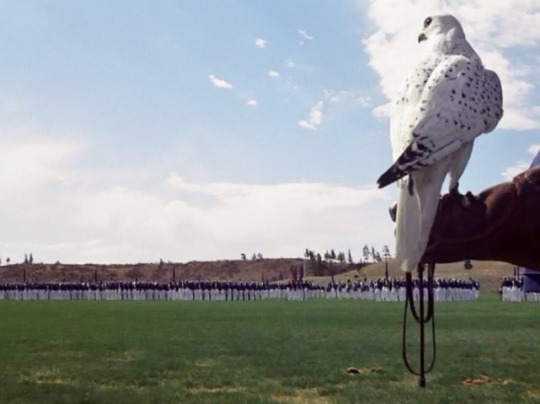
#Here's Lucy#US Air Force Academy#Lucille Ball#Gale Gordon#Roy Roberts#Lucie Arnaz#Mel Blanc#Desi Arnaz Jr.#John Erwin#Beverly Garland#My Three Sons#Antonio Garcia Tony#Cadet Chapel#Vandenberg Hall#Mitchell Hall#Planetarium#Colorado#Colorado Springs#George Marshall#Gene Thompson#CBS#TV#1969
4 notes
·
View notes
Text
Lucy’s Mystery Guest
S6;E10 ~ November 13, 1967


Synopsis
When Lucy tears up the junk mail, she also rips up a letter from her eccentric Aunt Agatha, who is coming to to stay with Lucy. By the time Lucy figures out who it is, Aunt Agatha (Mary Wickes) is on her doorstep with a suitcase full of health foods and an exercise regimen that turns Lucy's daily life upside down.
Regular Cast
Lucille Ball (Lucy Carmichael), Gale Gordon (Theodore J. Mooney), Mary Jane Croft (Mary Jane Lewis)
Roy Roberts (Harrison Winfield Cheever) does not appear in this episode.
Guest Cast

Mary Wickes (Aunt Agatha) was one of Lucille Ball’s closest friends and at one time, a neighbor. She made a memorable appearances on “I Love Lucy” as ballet mistress Madame Lamond in “The Ballet” (ILL S1;E19). In her initial “Lucy Show” appearances her characters name was Frances, but she then made four more as a variety of characters. This is her final appearance on the series. Wickes also appeared in nine episodes of “Here’s Lucy.” Their final collaboration on screen was “Lucy Calls the President” in 1977.
Agatha is Lucy's rich widowed aunt from the mid-west. Her husband was named Ned. Wickes also played Mary Jane's aunt, Gussie, in “Lucy and the Sleeping Beauty” (S4;E9).

This episode was filmed on September 28, 1967.

Mary Wickes is playing Lucy's aunt, but in real life Lucille Ball was just one year younger than Wickes. Aunt Agatha has a line disparaging “the younger generation” referring to Lucy!

As usual on the series, older characters are dressed woefully out of date. Agatha wears a traveling suit, gloves and hat that would be more fashionable in 1917 than 1967.

Wickes' wardrobe as Aunt Agatha is very reminiscent to clothing she wore as Mrs Squires in The Music Man (1962). Also in the cast were “Lucy Show” alumni Ralph Hart (Sherman), Charles Lane (Mr. Barnsdahl), as well as Max Showalter, Jesslyn Fox, Fred Aldrich, Leon Alton, Walter Bacon, John Breen, Ronnie Dapo, Ray Kellogg, Natalie Masters, Bert May, and Larri Thomas.
We learn Lucy has a cousin Clara who lives in Los Angeles, but Agatha thinks Clara only likes her for her money.

When Agatha opens a window for some fresh air, Lucy makes a joke about the smog. This is the fourth mention of the Los Angeles smog problem on the series. It was previously joked about in “Lucy Gets Jack Benny's Account” (S6;E6), “Lucy and Tennessee Ernie Ford” (S5;E21) and “Lucy Meets Sheldon Leonard” (S5;E22).

We learn that Lucy is plant sitting for a neighbor named Mrs. Stevens. Mary Jane is dog sitting for her. Aunt Agatha sprays the plant for bugs, and it promptly wilts.

When Lucy reports for work dressed like Aunt Agatha, the underscoring plays "Chim Chim Cheree" from Mary Poppins (1964) and Mr. Mooney remarks “Good heavens, they've grounded Mary Poppins!” Although Wickes was not in Disney's Mary Poppins, she did play the character on CBS TV in 1949. The Disney film featured “Lucy Show” alumni Reta Shaw, Elsa Lanchester, Walter Bacon, George DeNormand, Sam Harris, Lester Matthews, Hans Moebus, J. Pat O'Malley, Bert Stevens, Hal Taggart, Larri Thomas, and Ginny Tyler.

In “Lucy Saves Milton Berle” (S4;E14) Lucy dresses as a poor flower seller, which Mr. Mooney calls a“cheesy Mary Poppins outfit” despite if resembling Eliza Doolittle from My Fair Lady.

Two years later, Lucille Ball would play Mary Poppins in a sketch on the Dinah Shore special “Like Hep.”
Lucy calls her wealthy Auntie “nuts”, but Mooney admonishes her by saying “When you're poor, you're nuts. When you're rich, you're eccentric.”
The episode has an upbeat sentimental ending that never gets overly schmaltzy thanks to Wickes, Ball and the writing.
Callbacks!

Lucy Ricardo got an unexpected visit from a distant relative in “Tennessee Ernie Visits” (ILL S3;E28). Like Aunt Agatha, by the time the Ricardos discover when to expect their visitor, the eccentric relative is already on their doorstep.
Fast Forward!
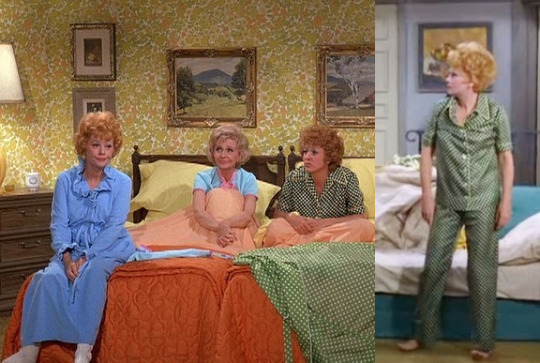
The green pajamas that Lucy wears will later be worn by Vanda Barra in a 1973 episode of “Here’s Lucy”!
Blooper Alerts!
Lucy brings the waste paper basket full of the torn up letter from home to the bank but she does not bring it home again. As a reminder, Lucy takes the bus to work!

“Lucy’s Mystery Guest” rates 4 Paper Hearts out of 5

#The Lucy Show#Lucy's Mystery Guest#Lucille Ball#Mary Wickes#Gale Gordon#Mary Jane Croft#Mary Poppins#The Music Man#1967#CBS#TV
3 notes
·
View notes